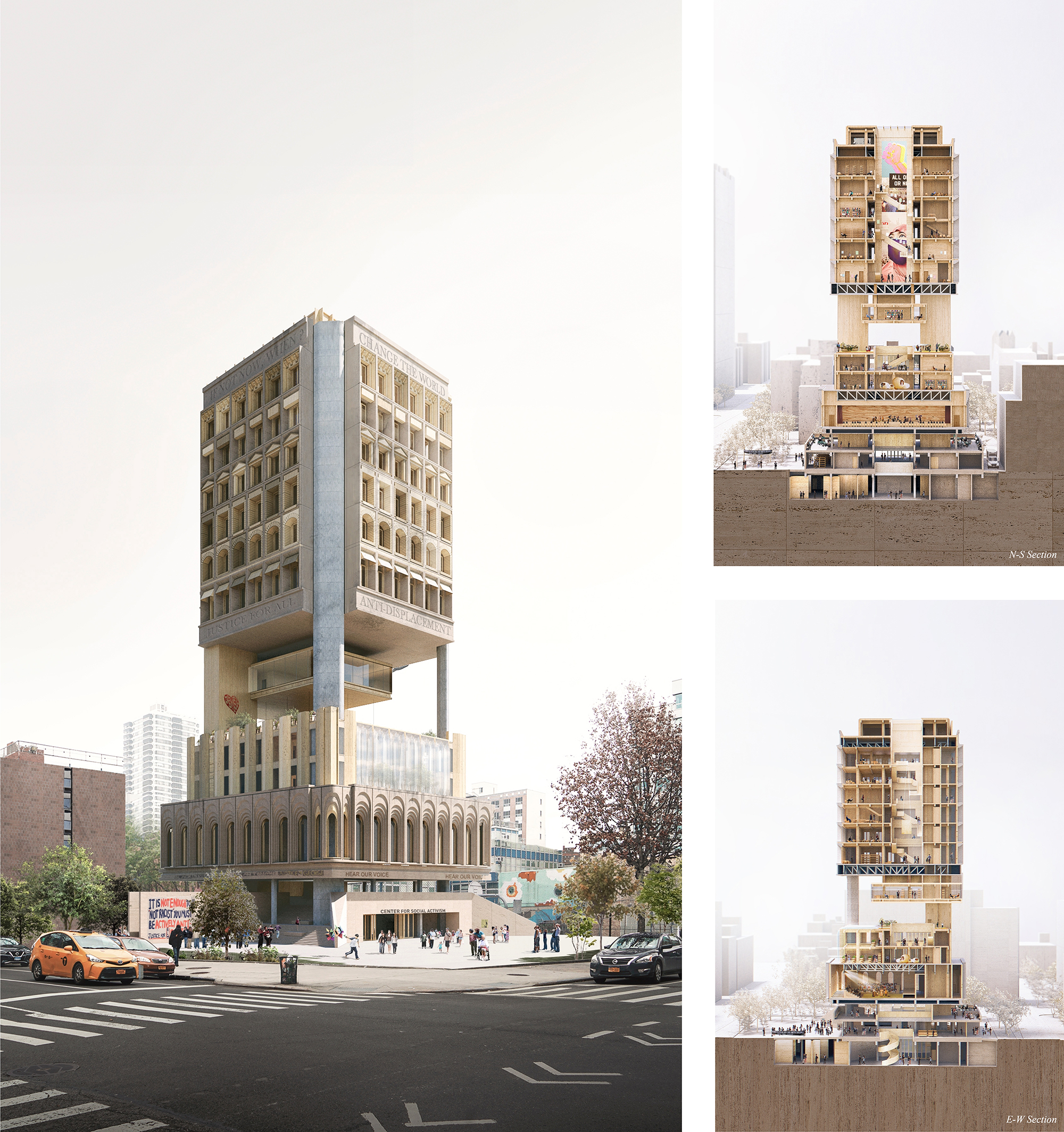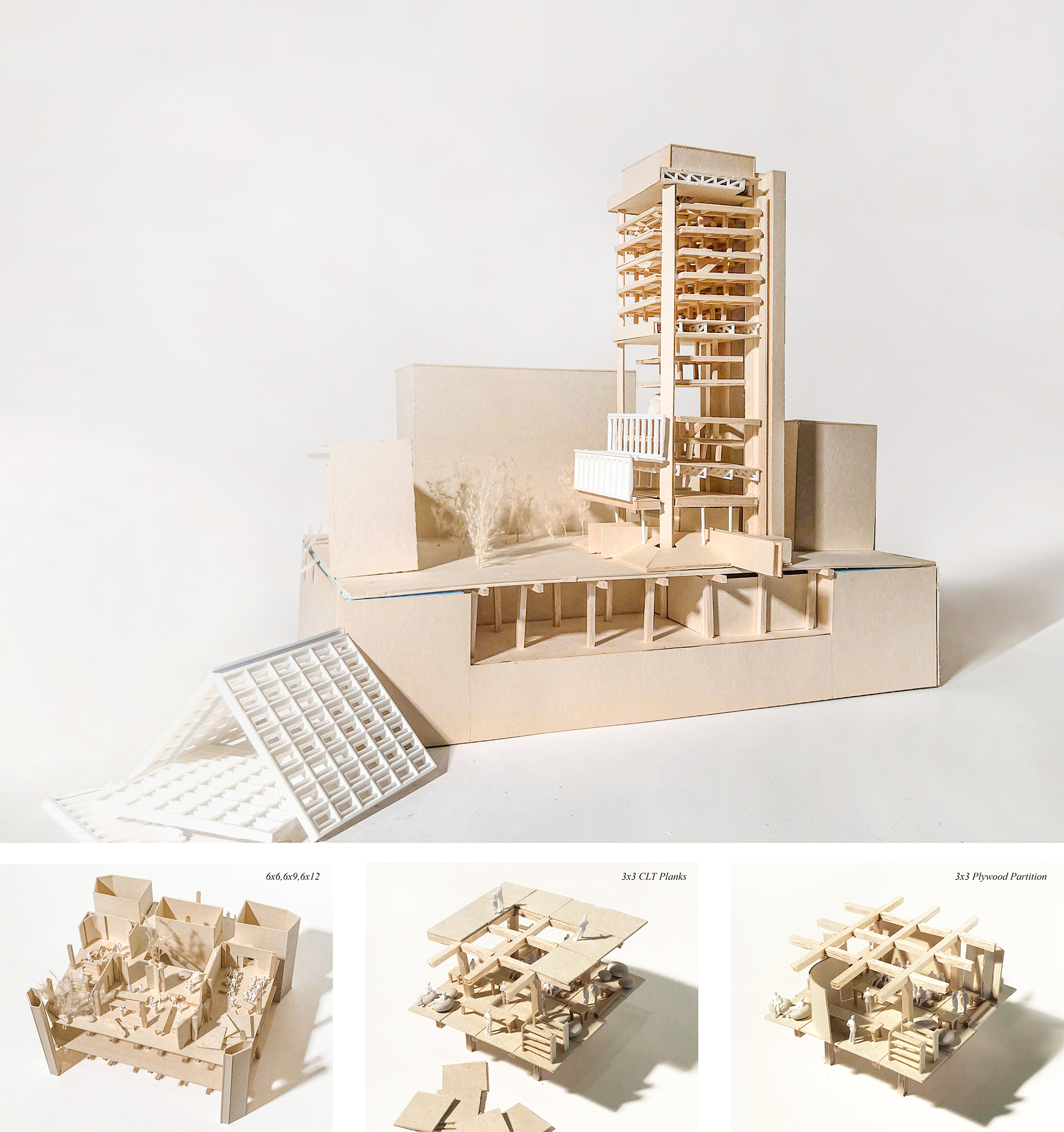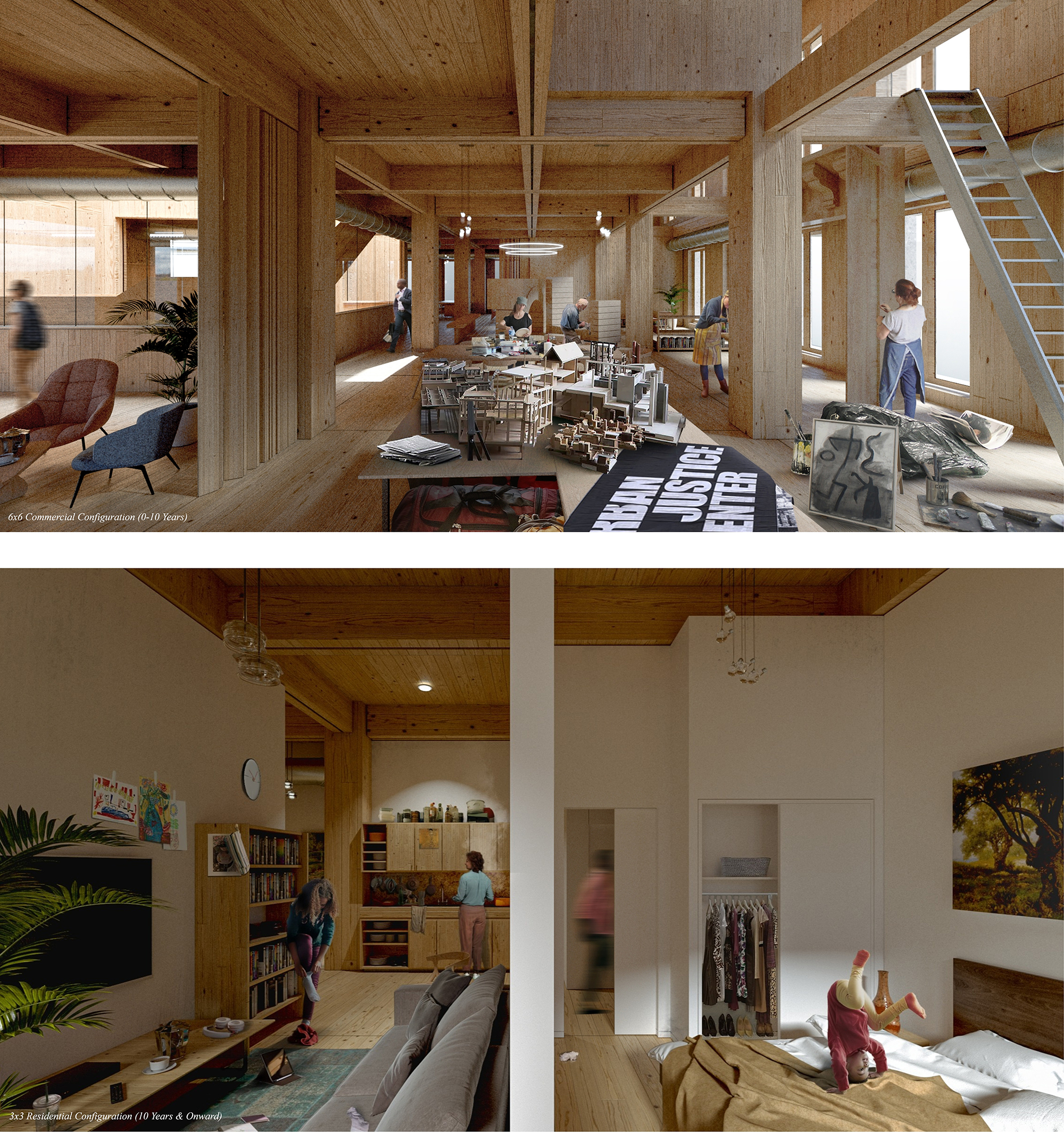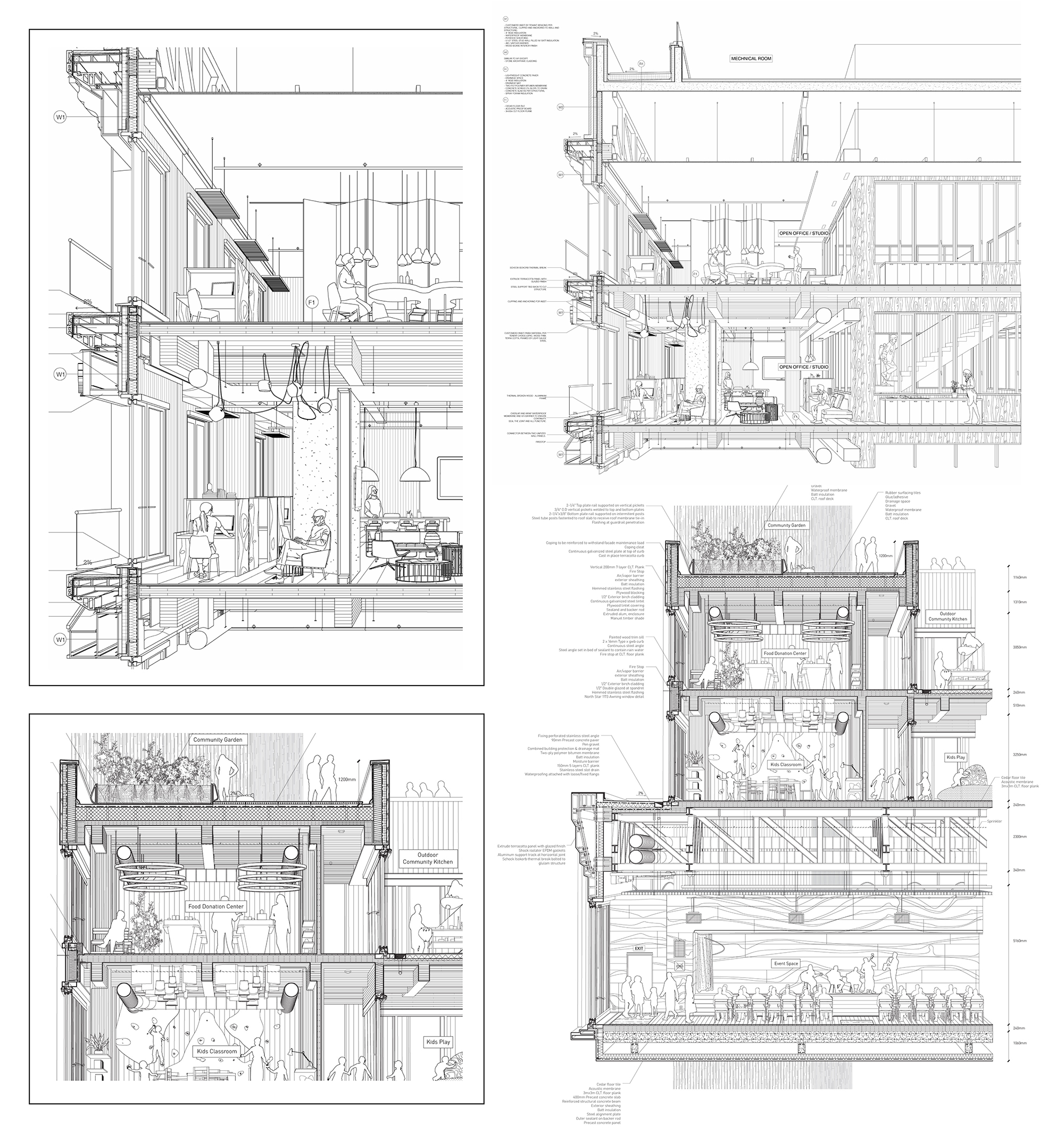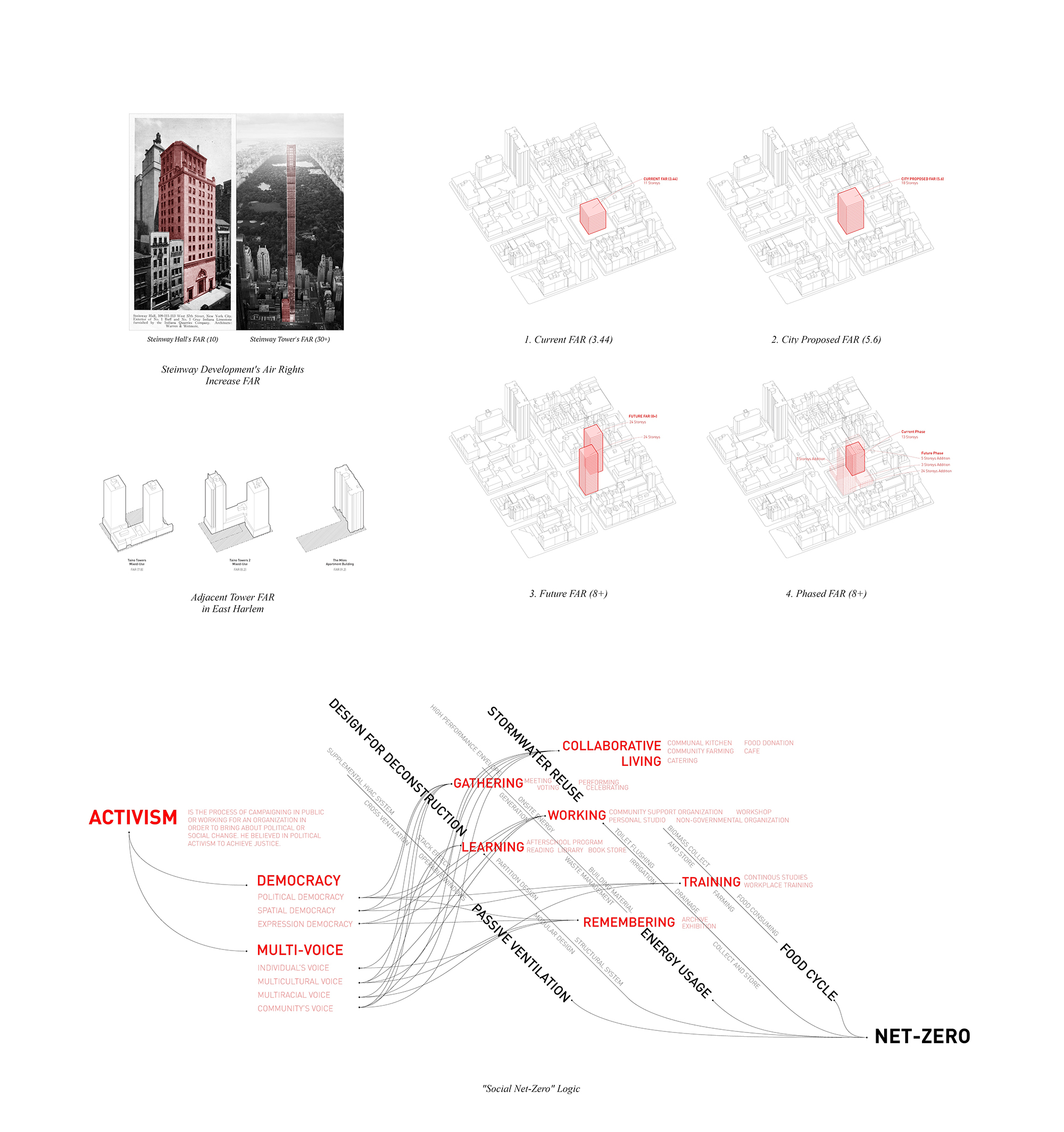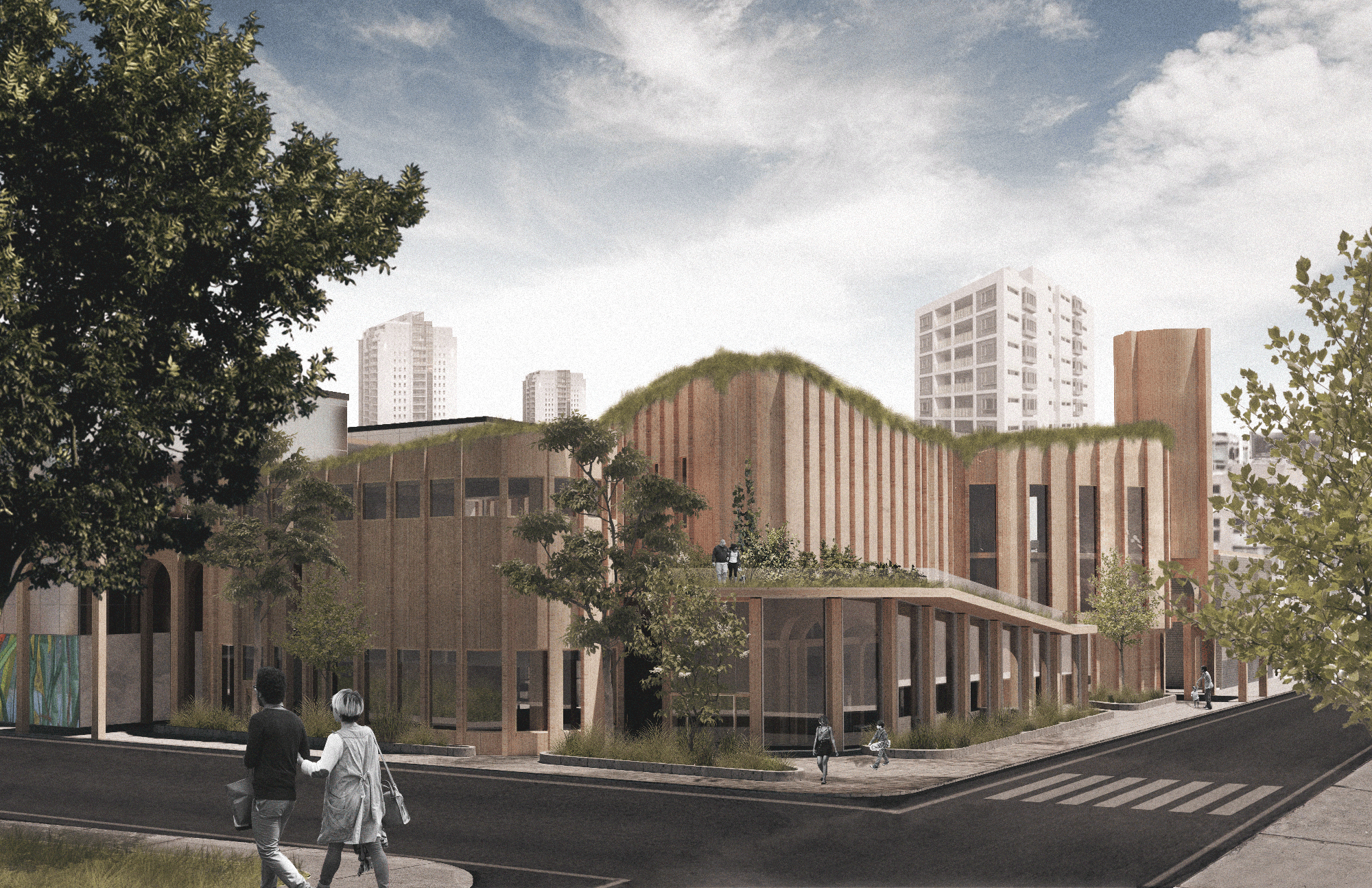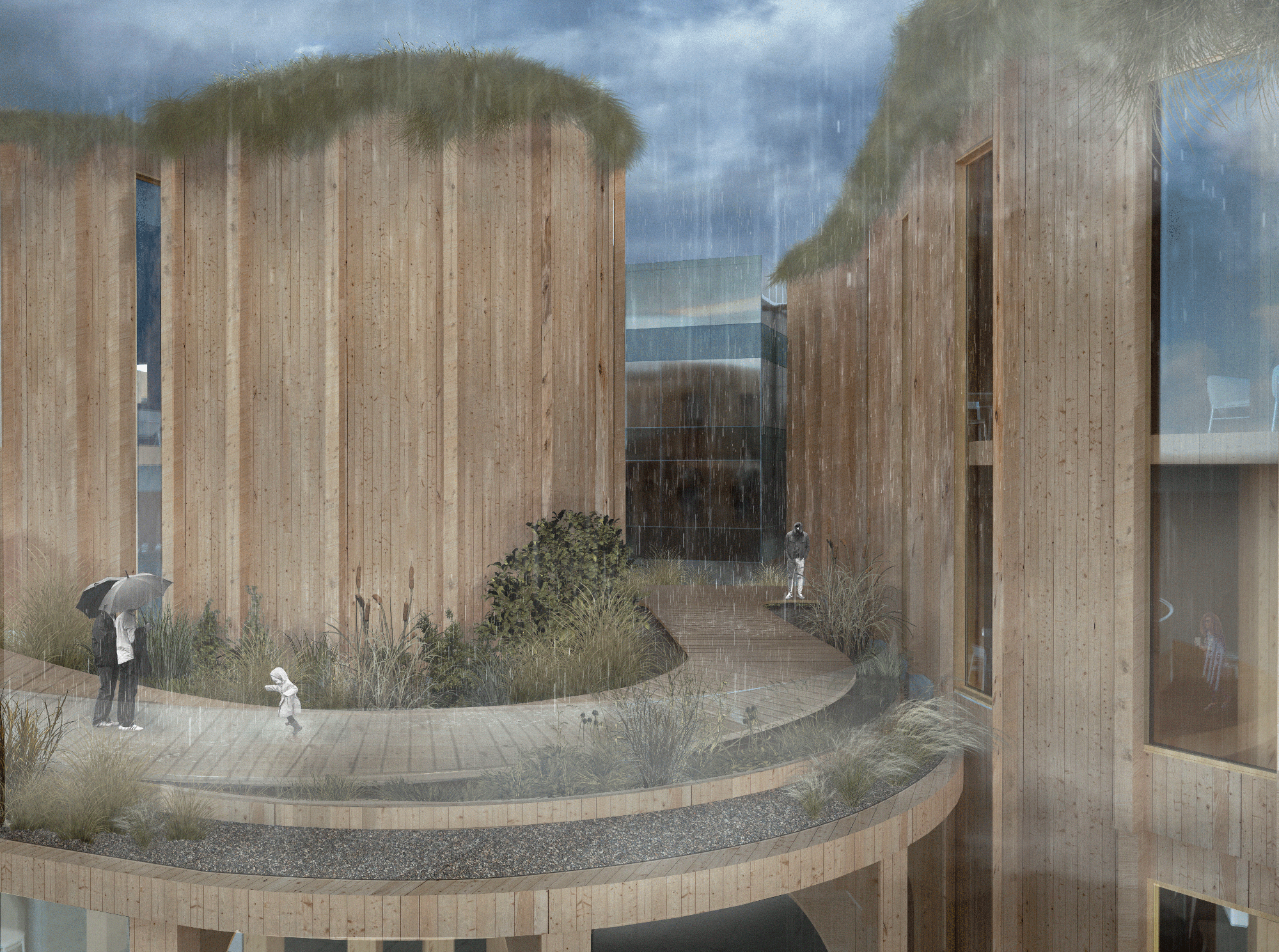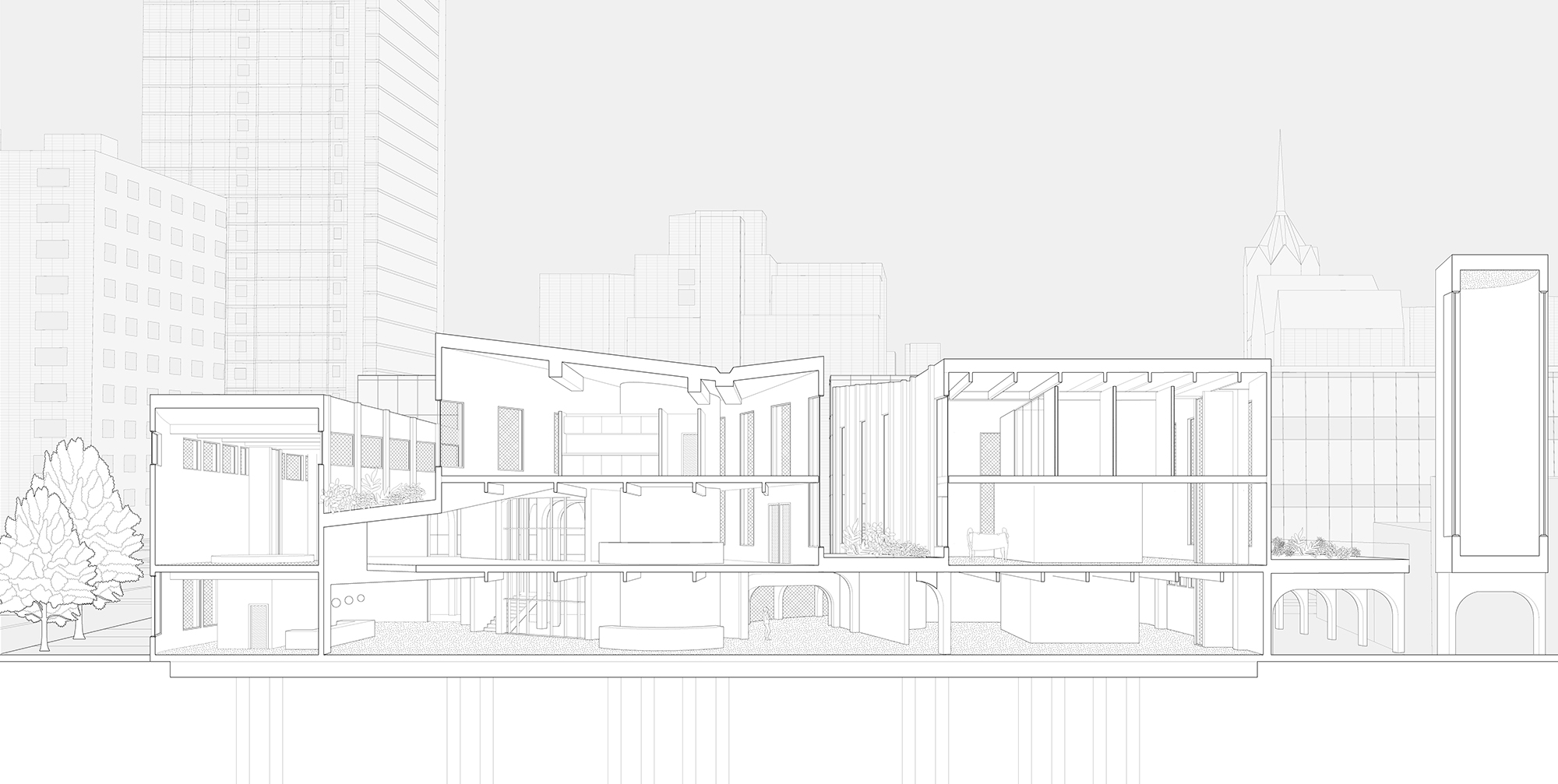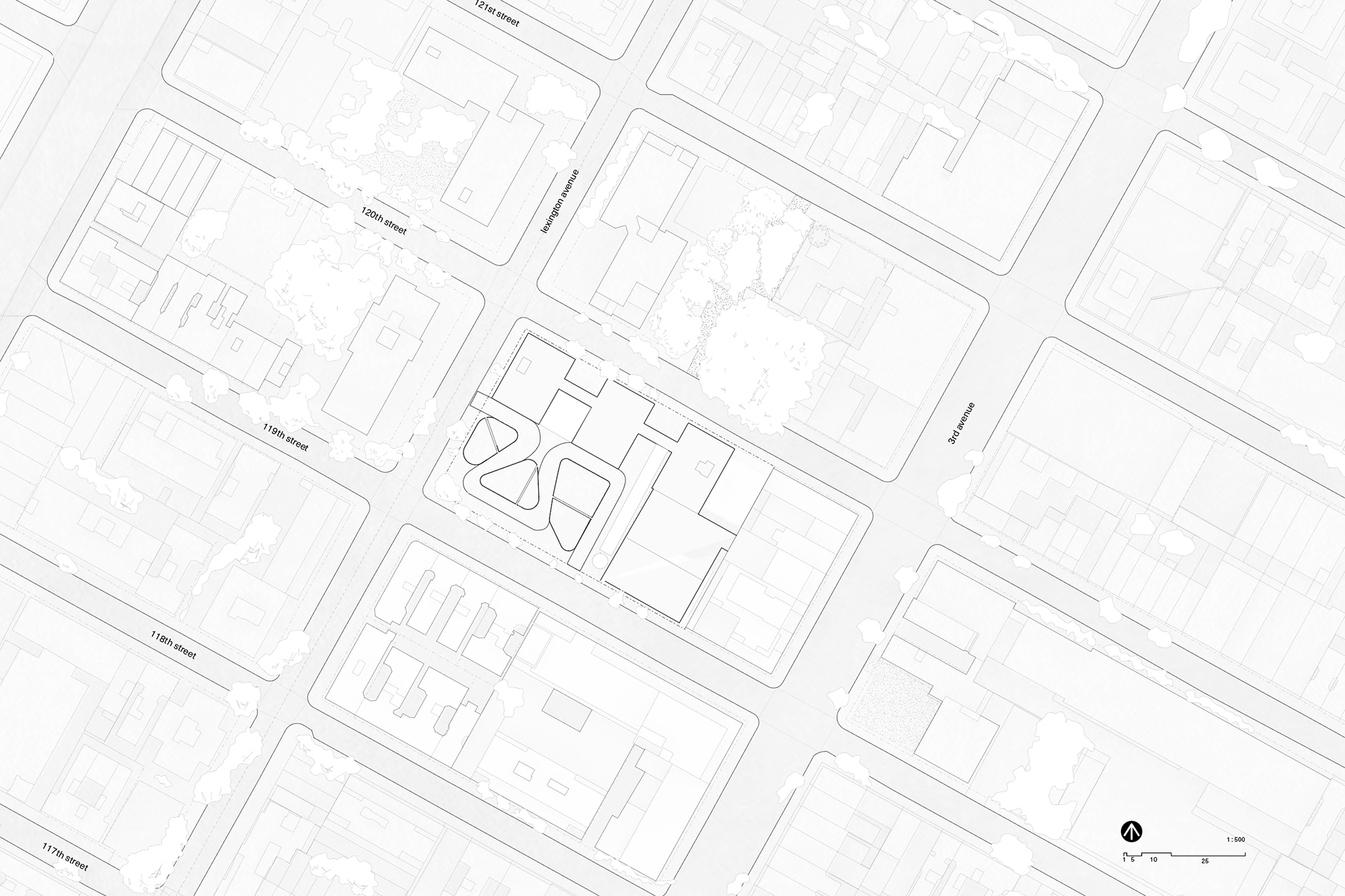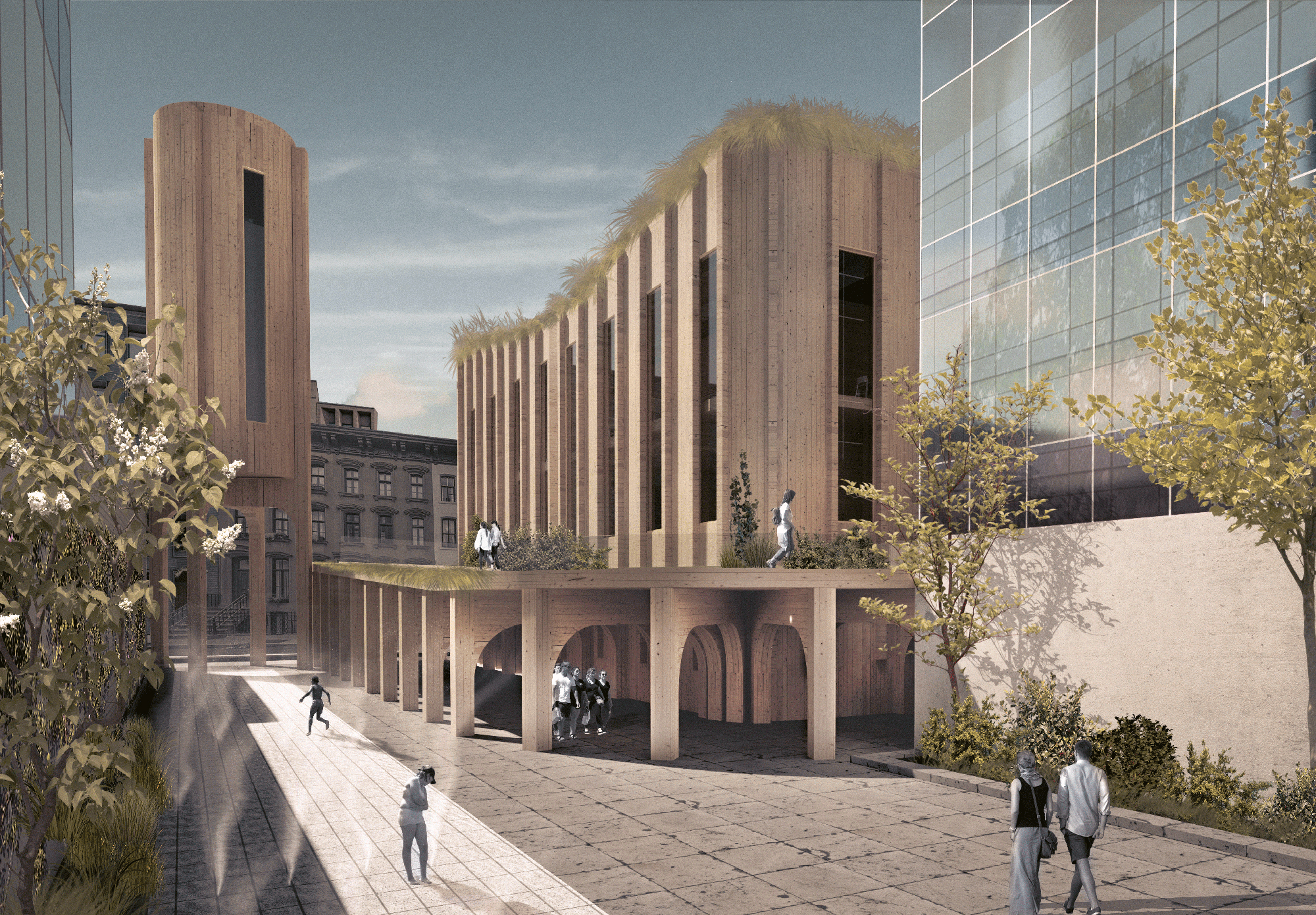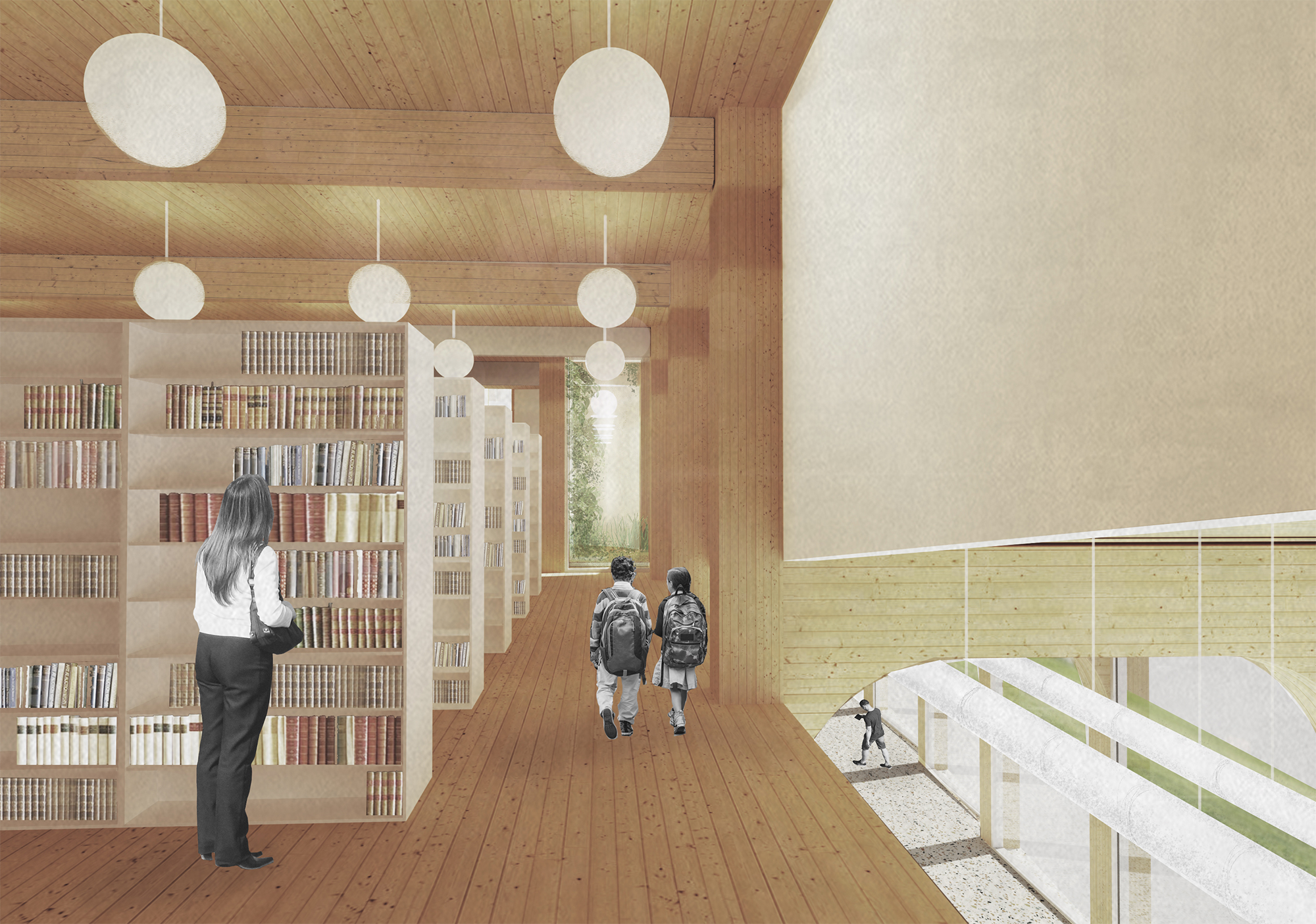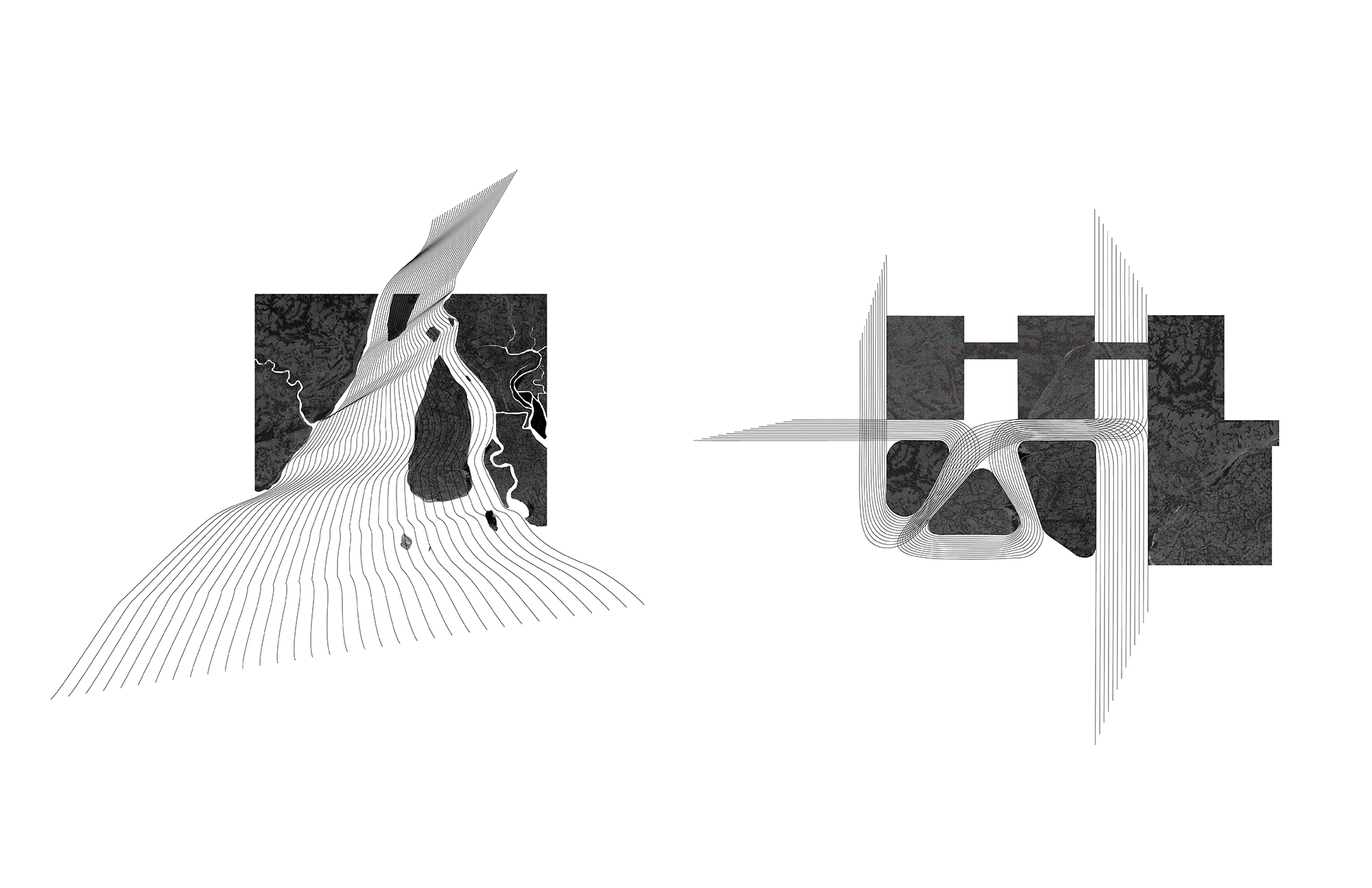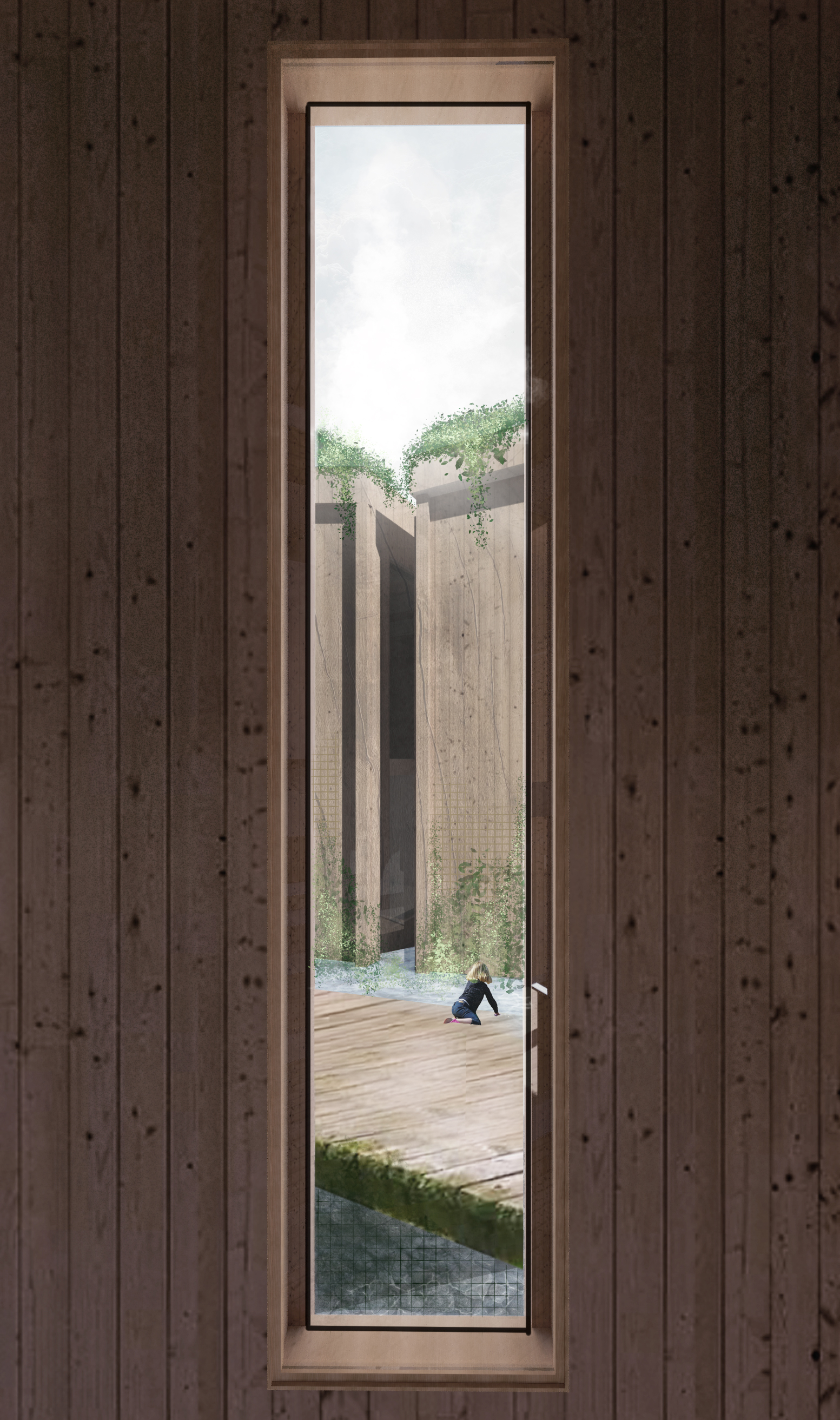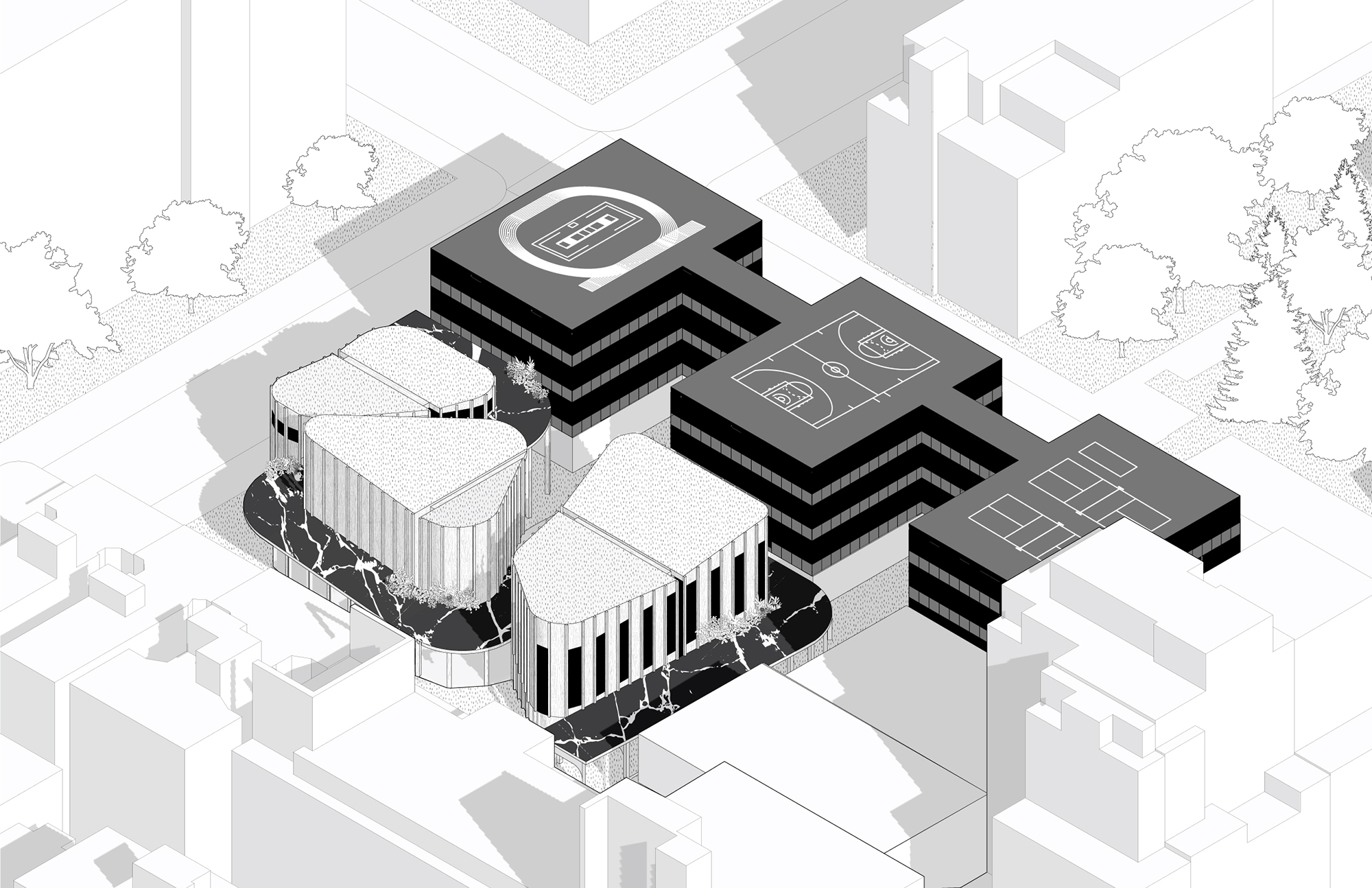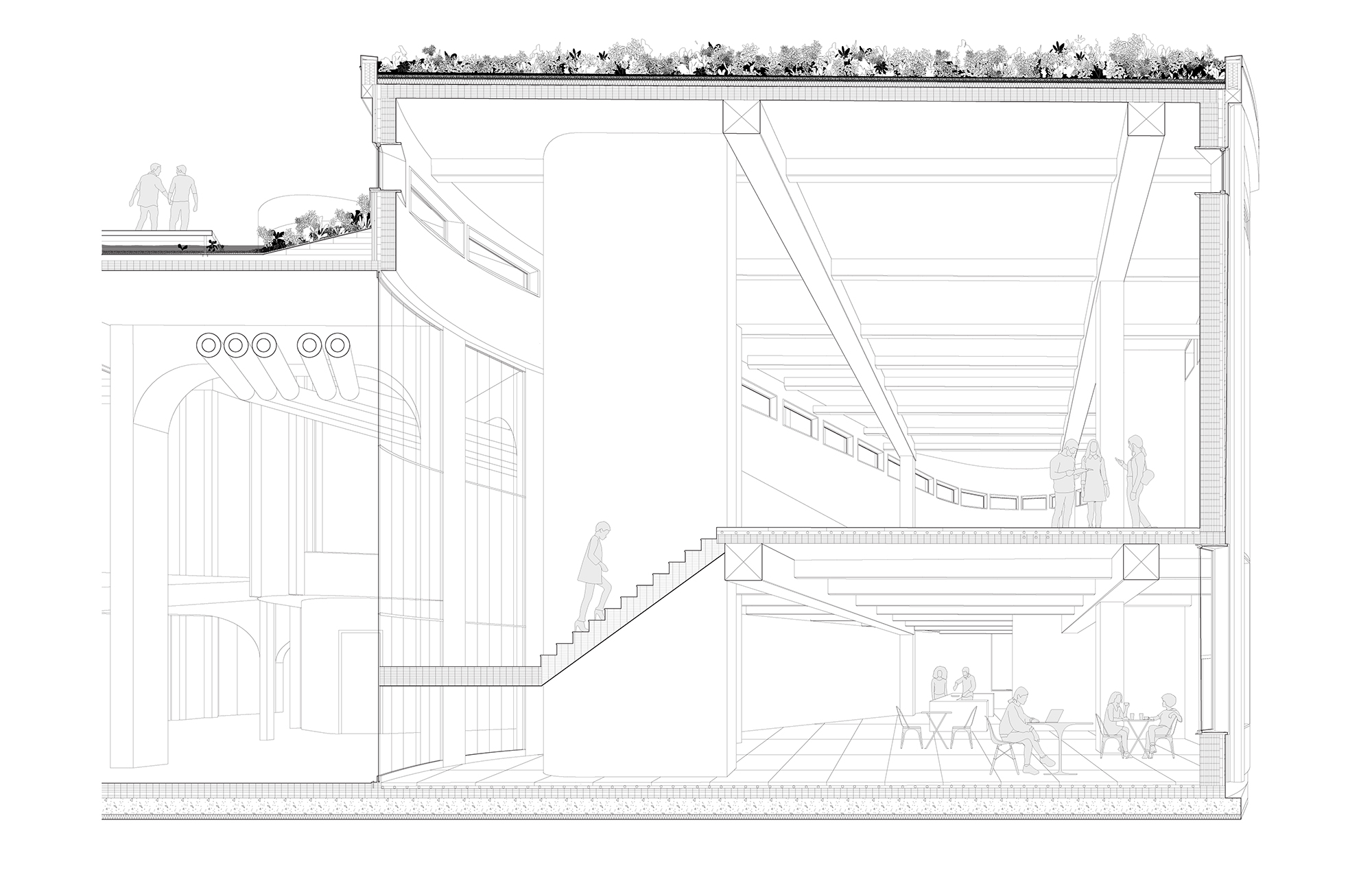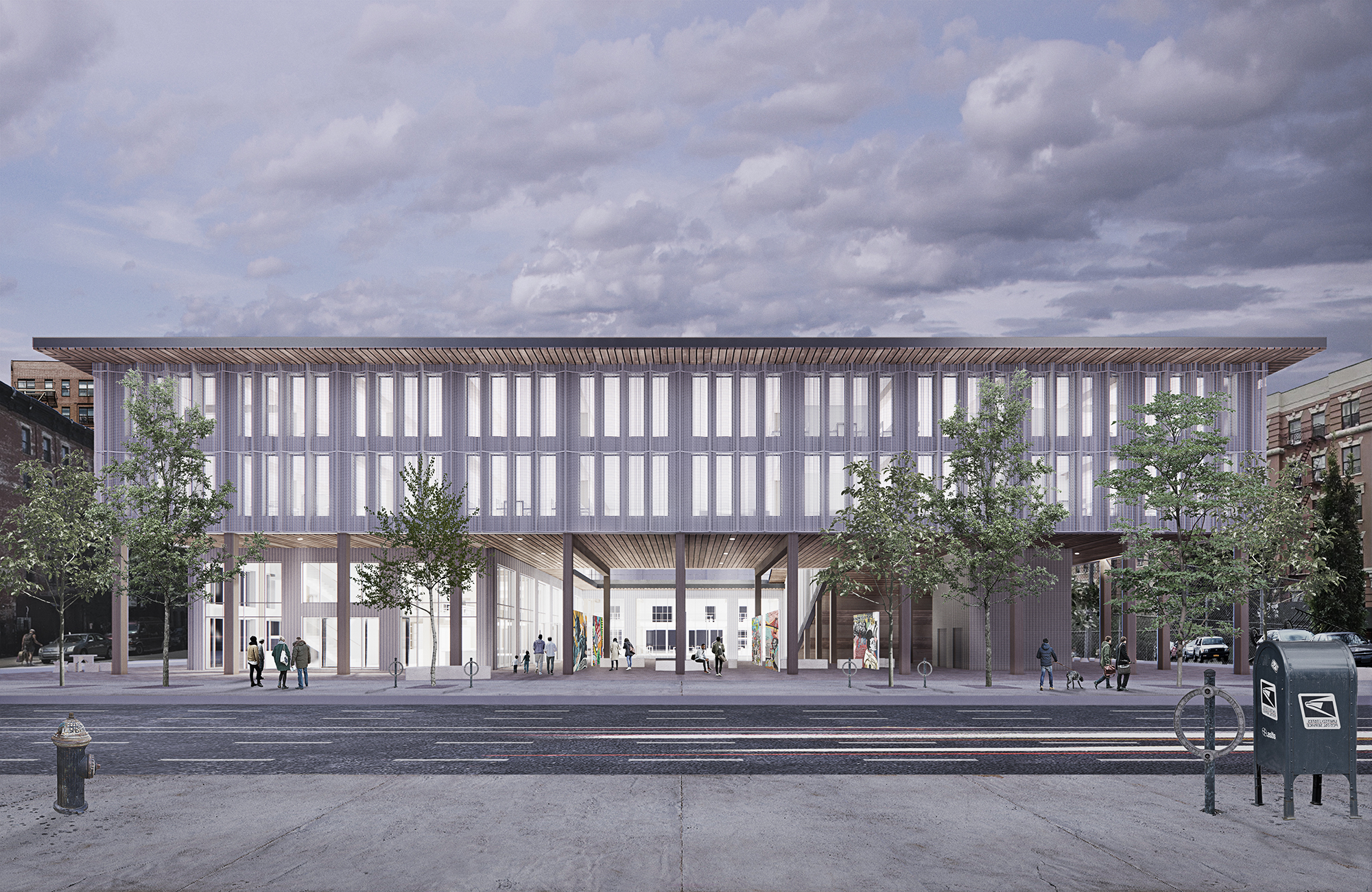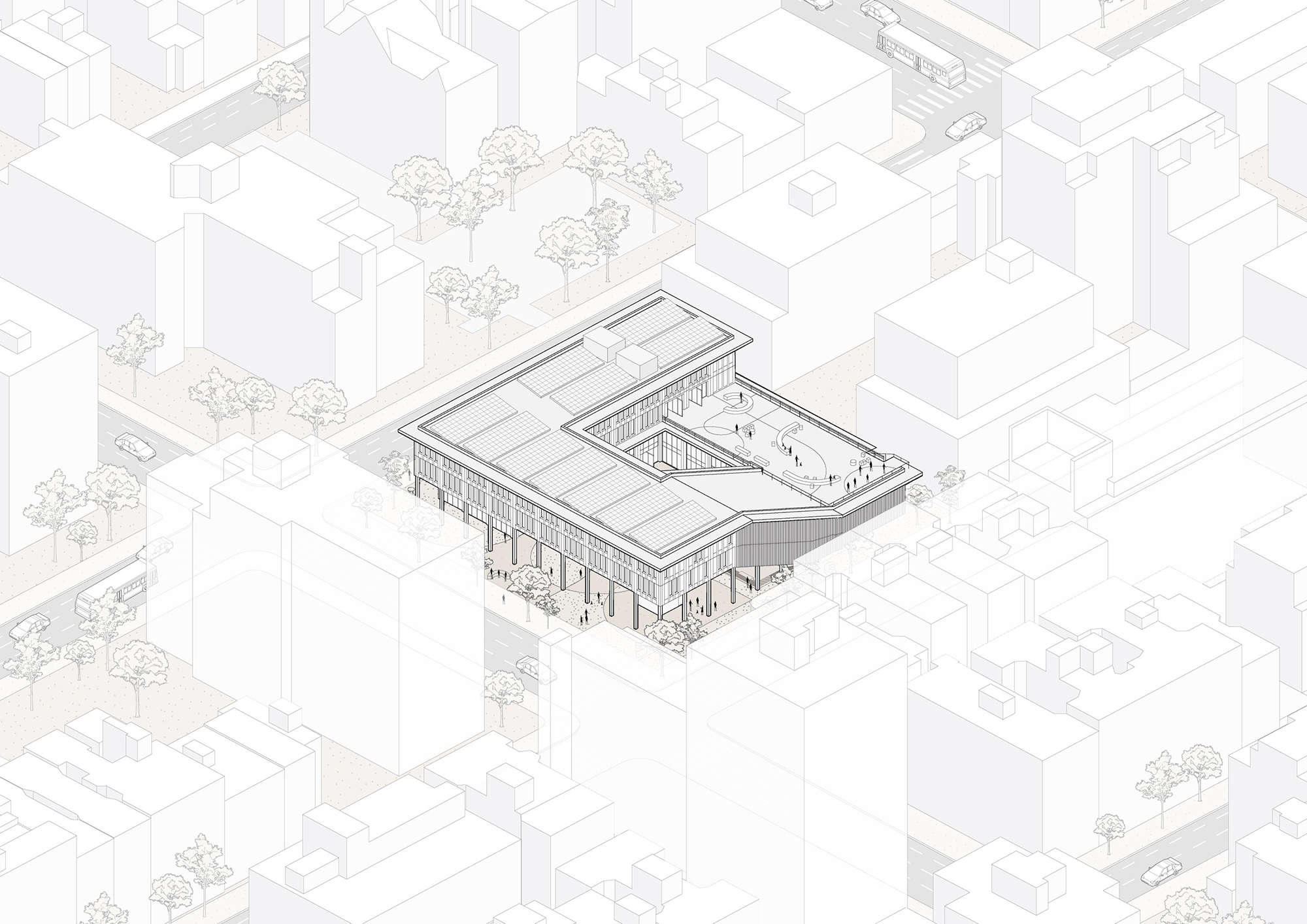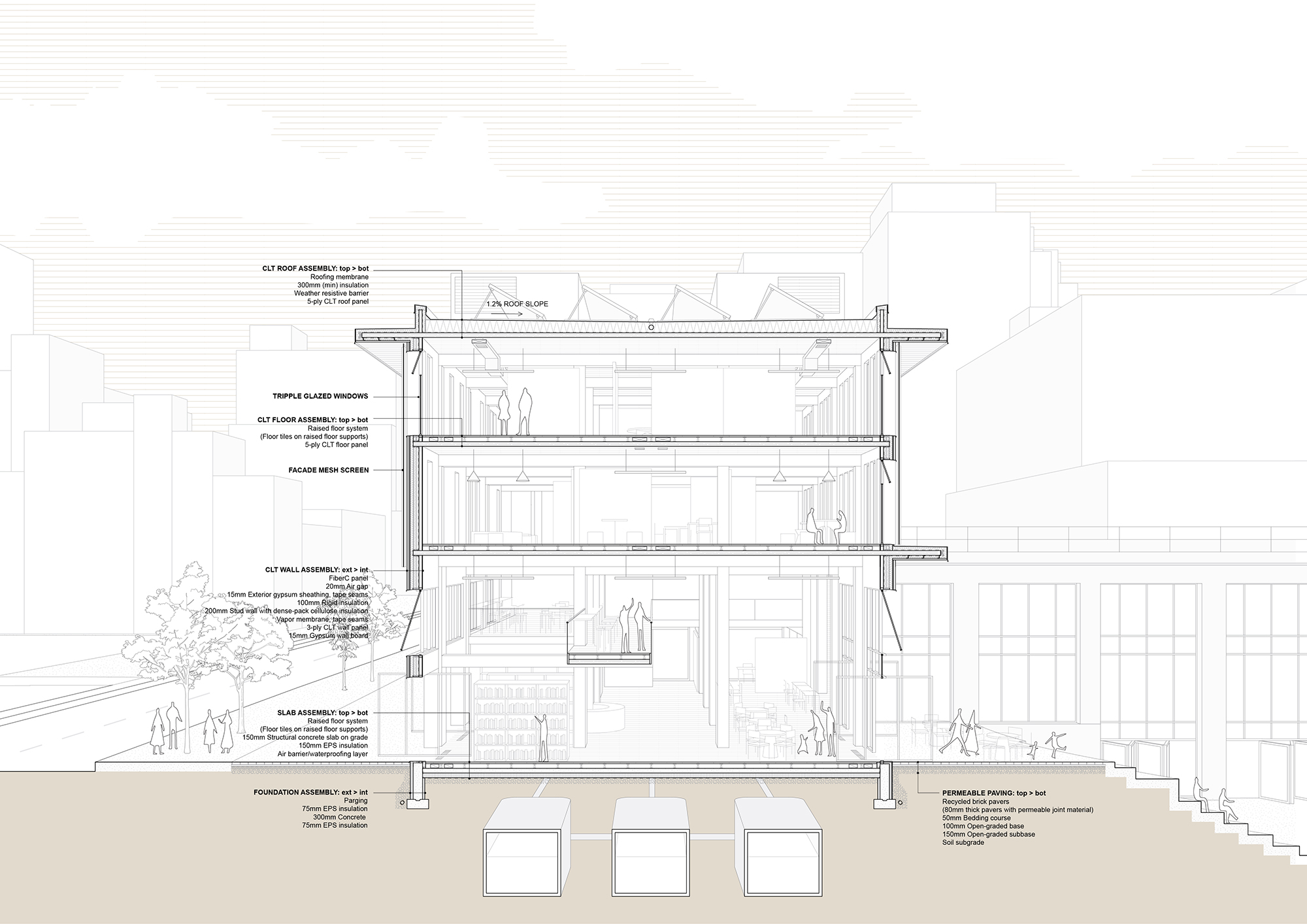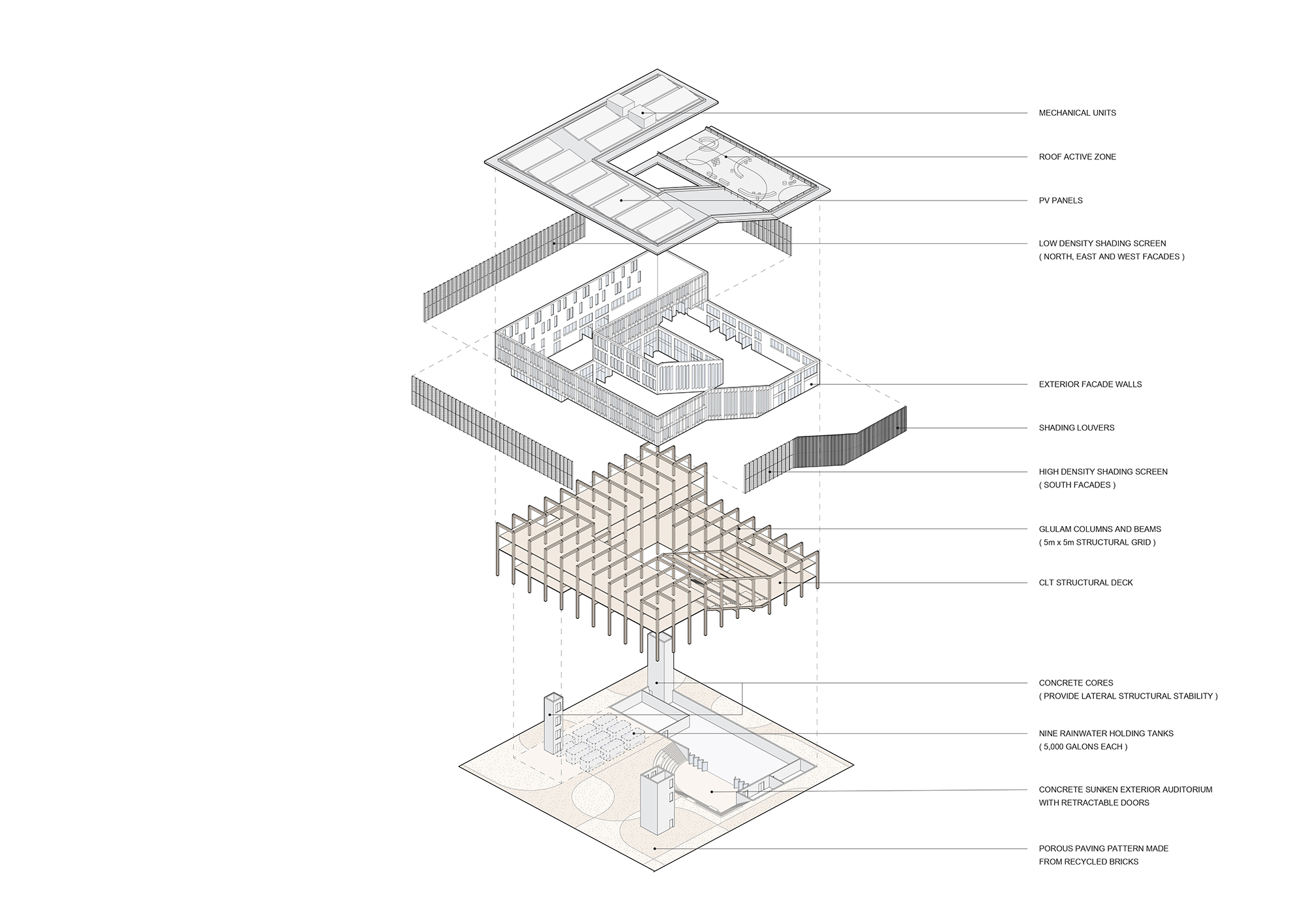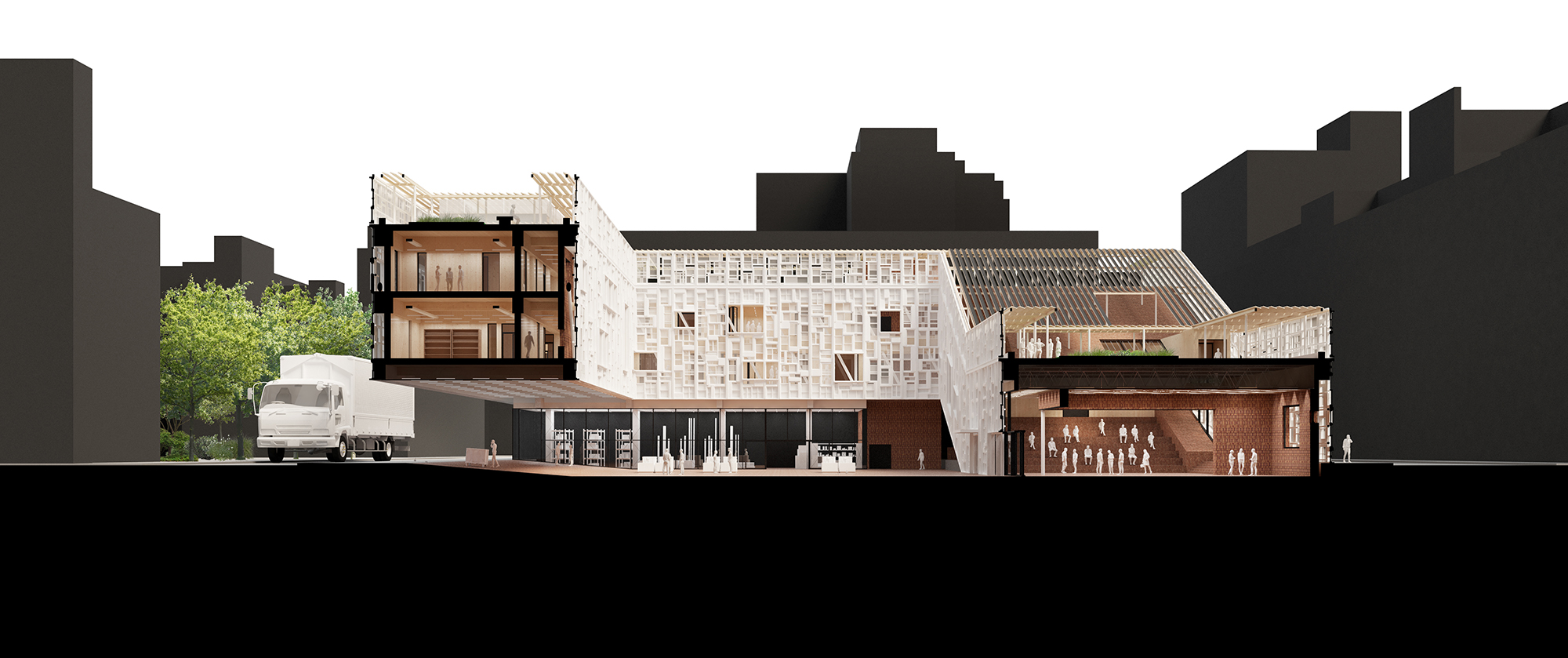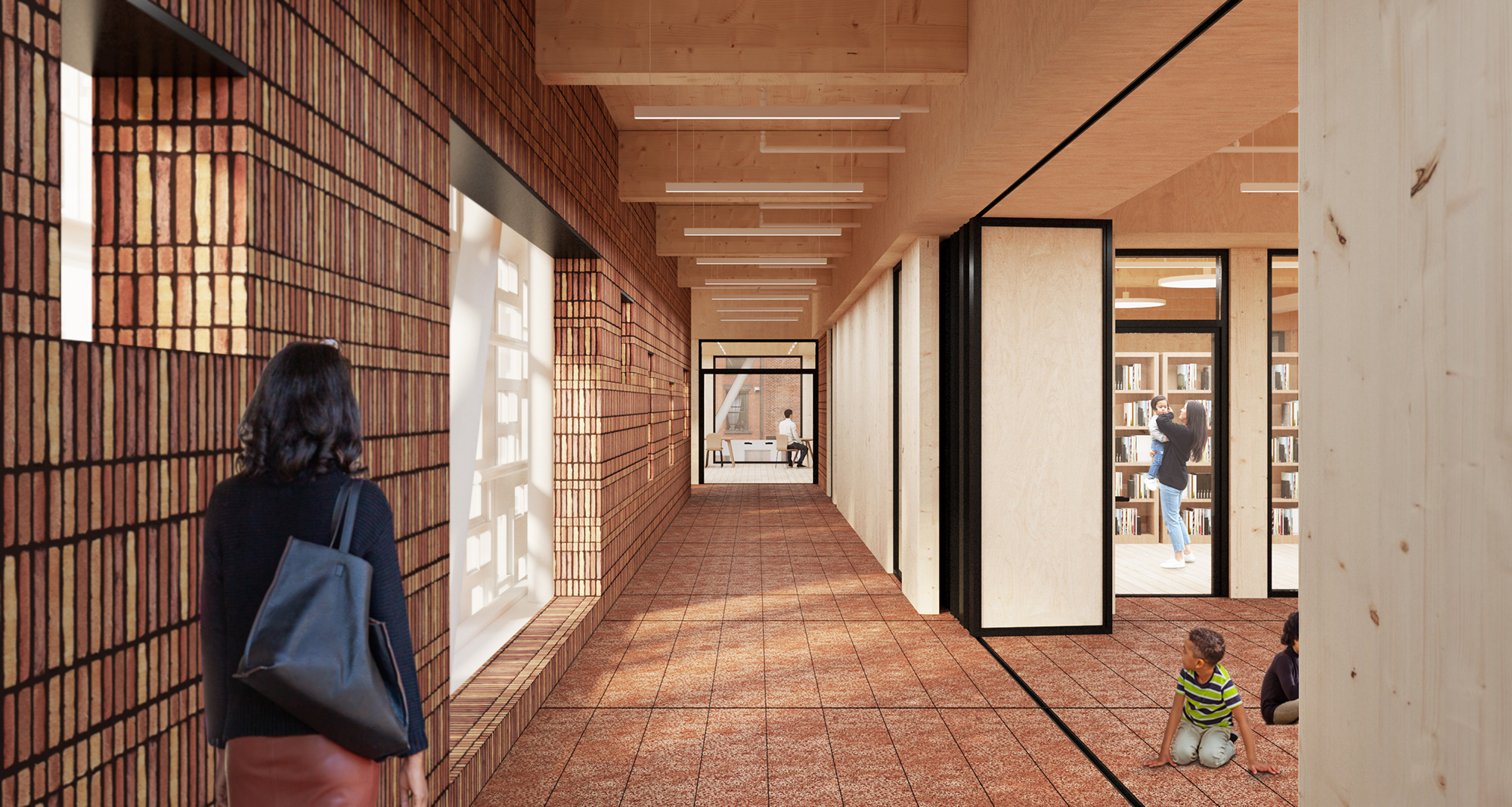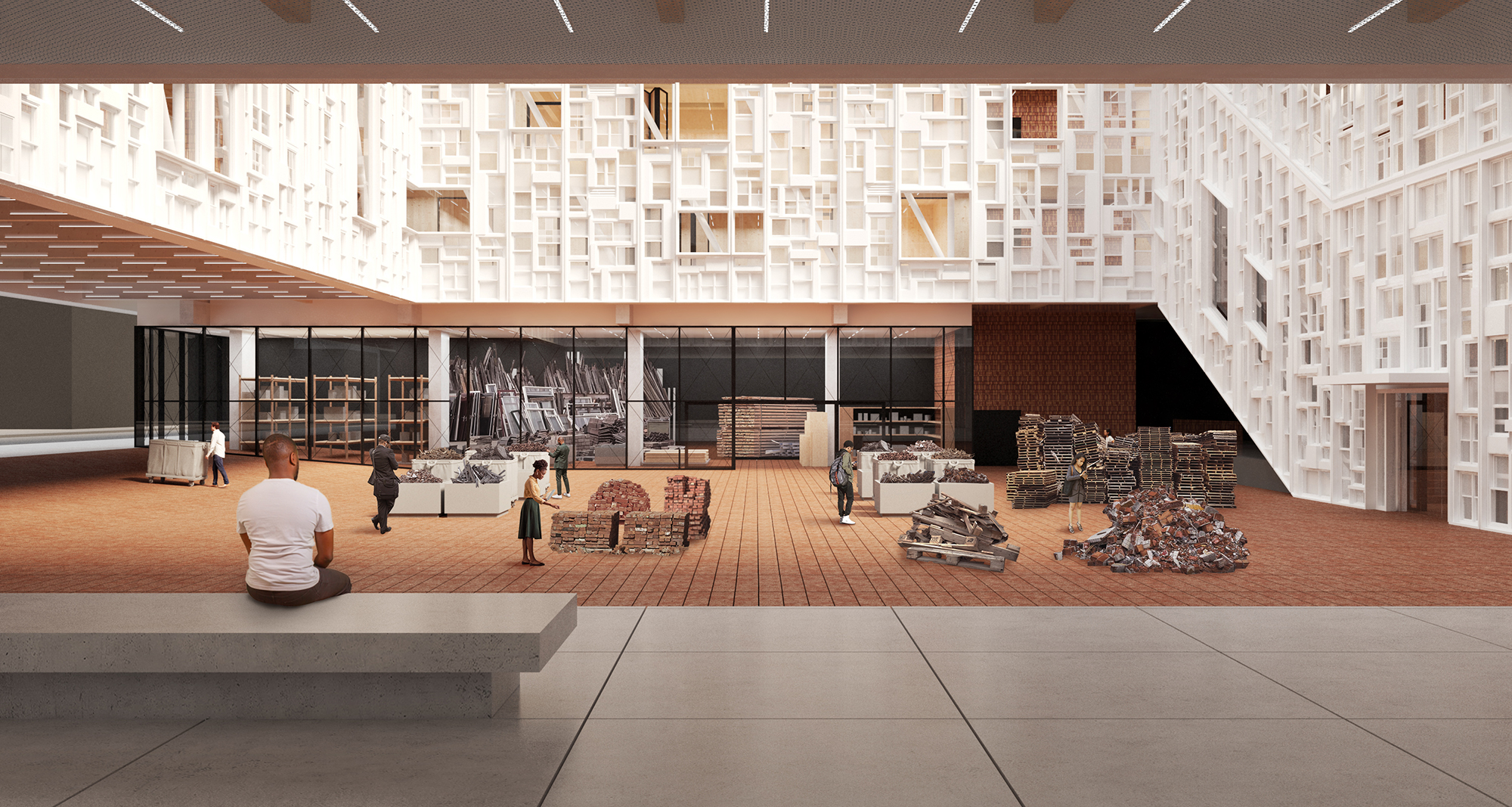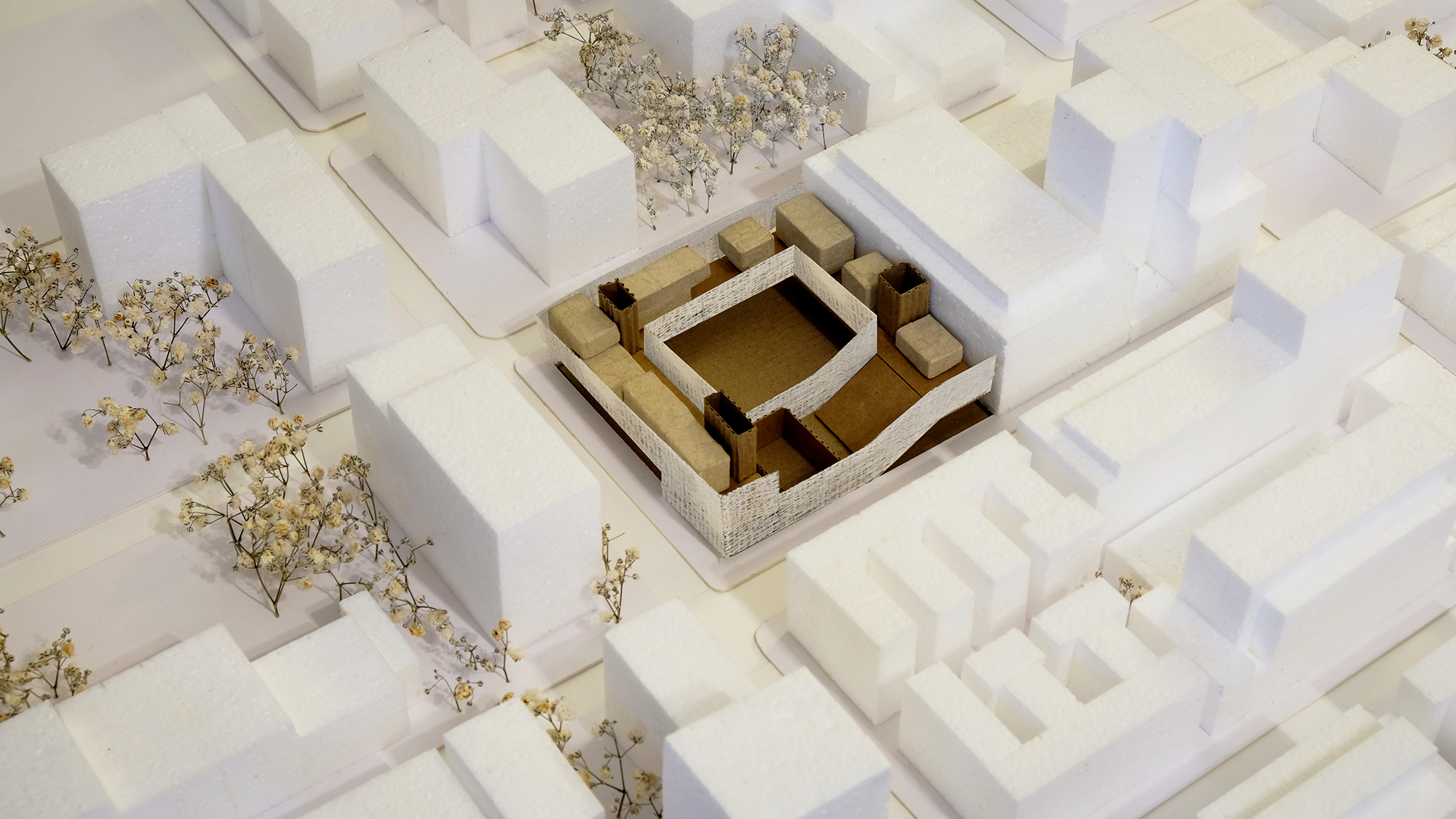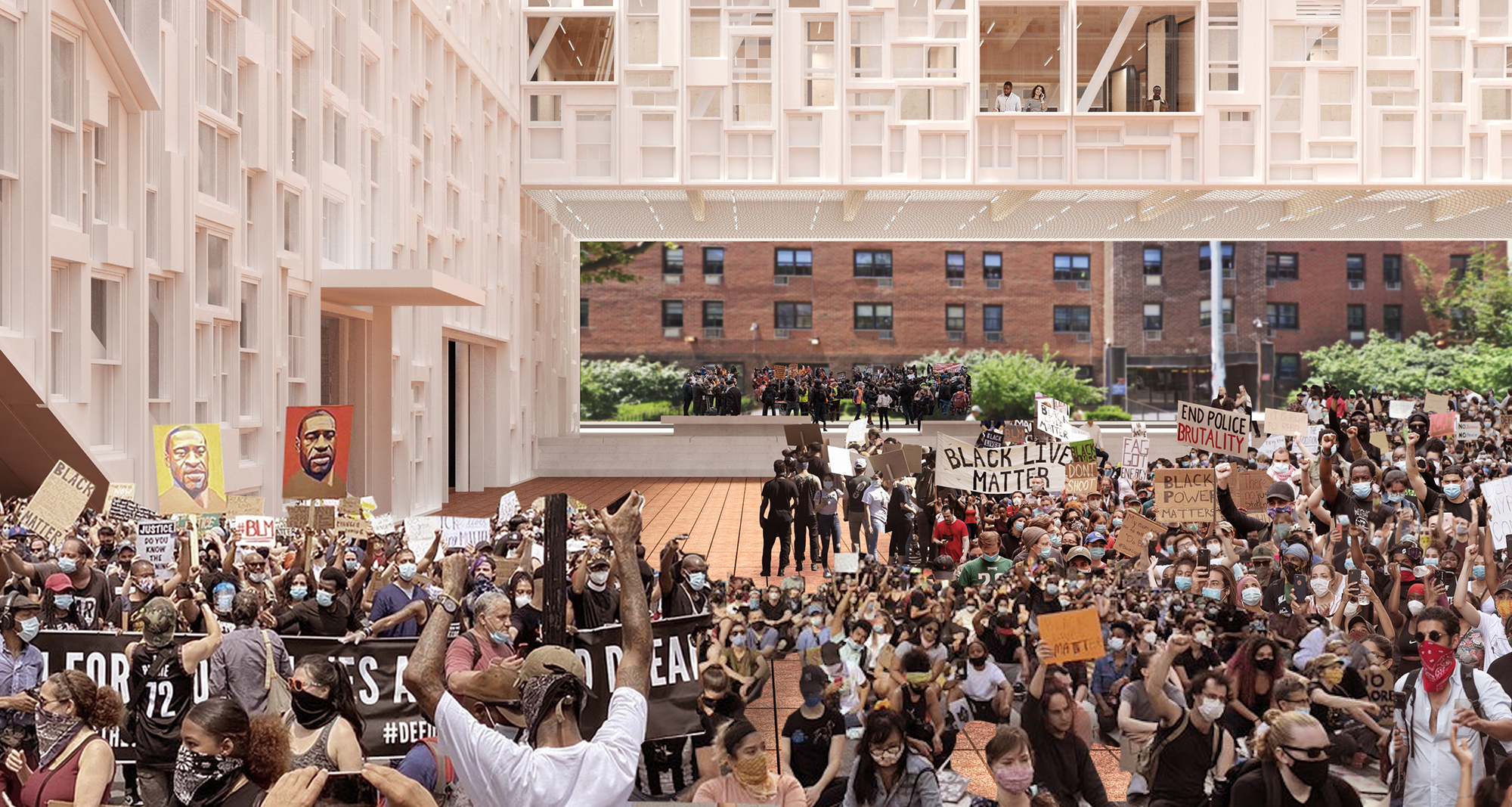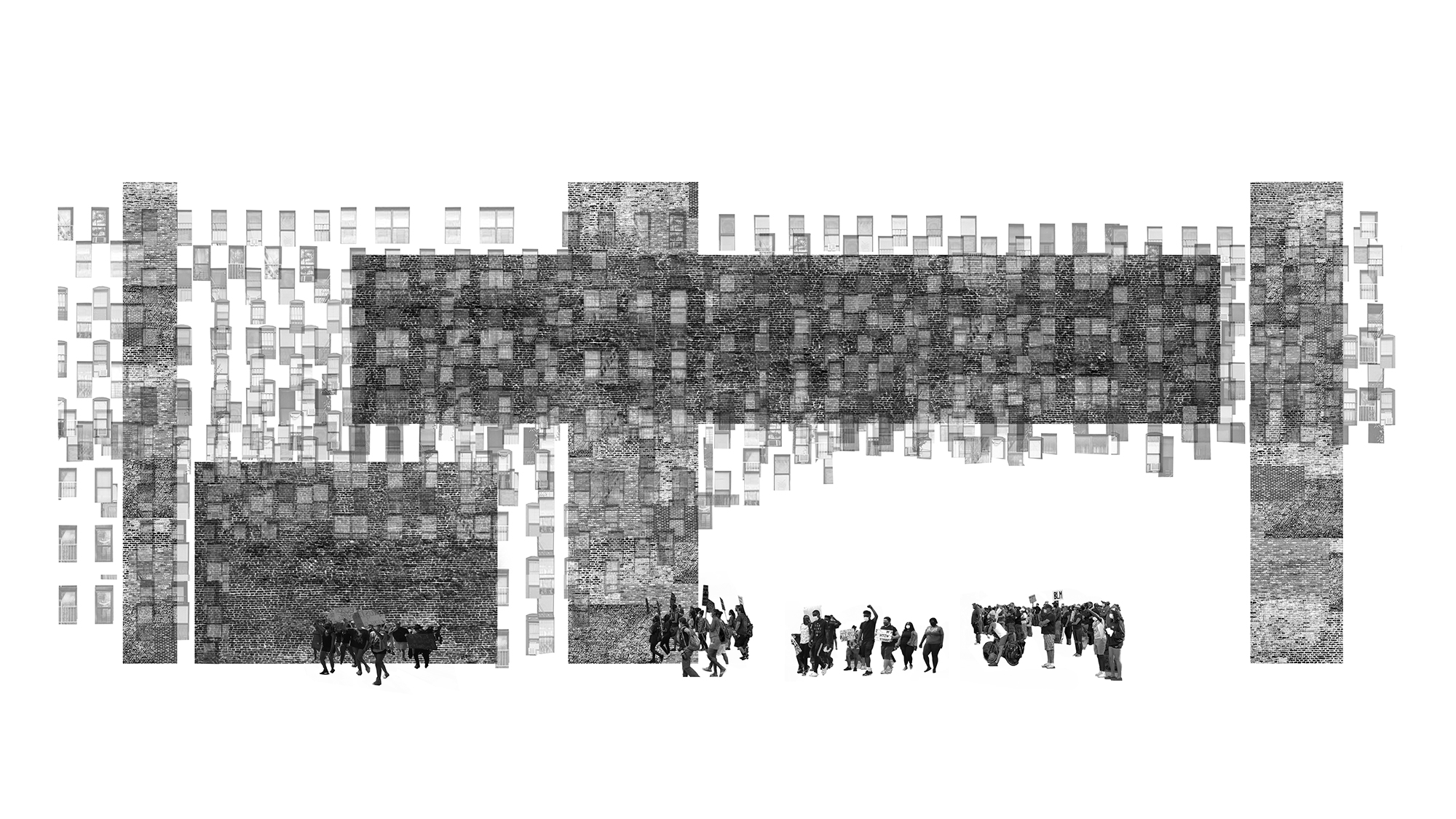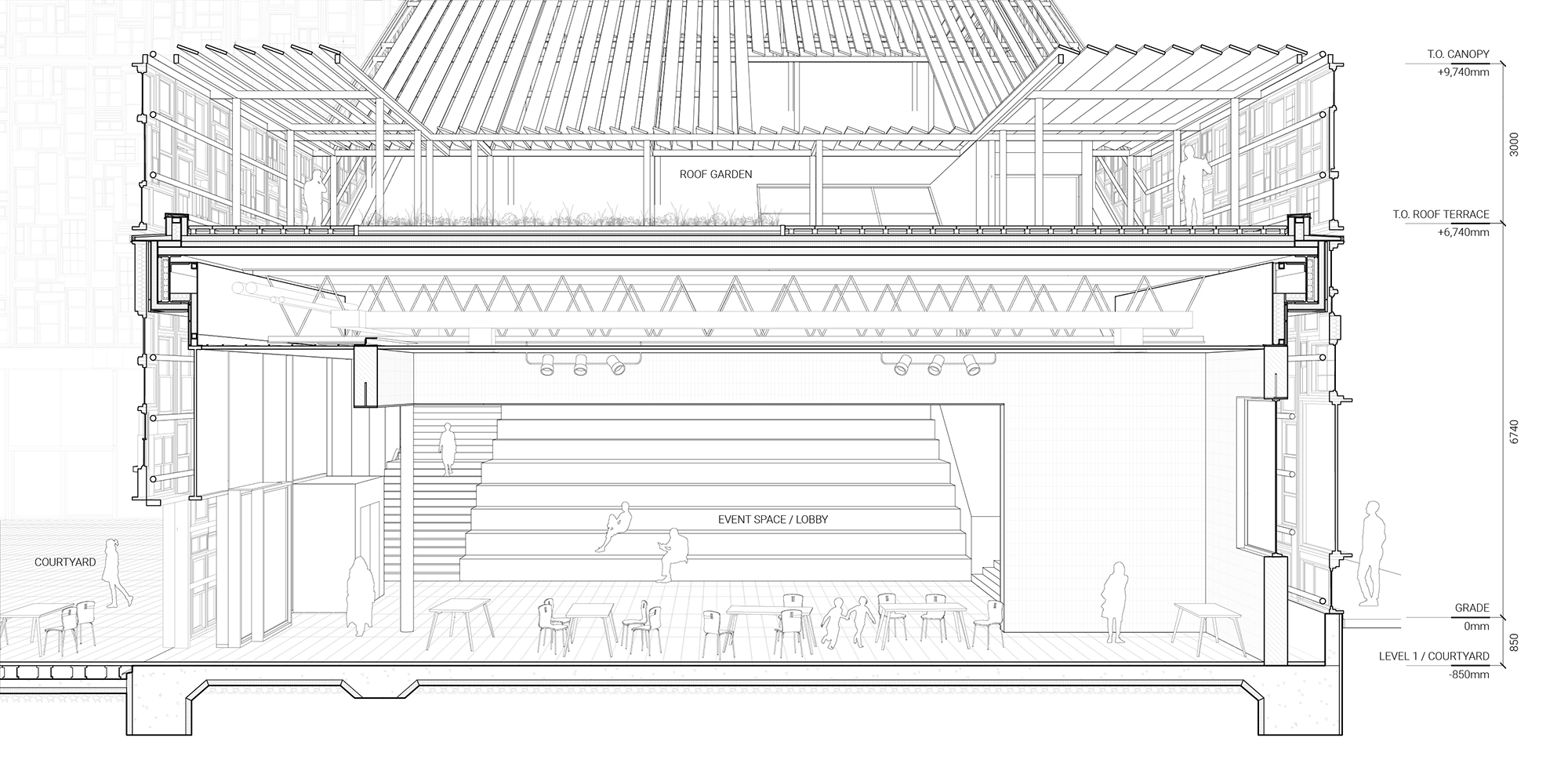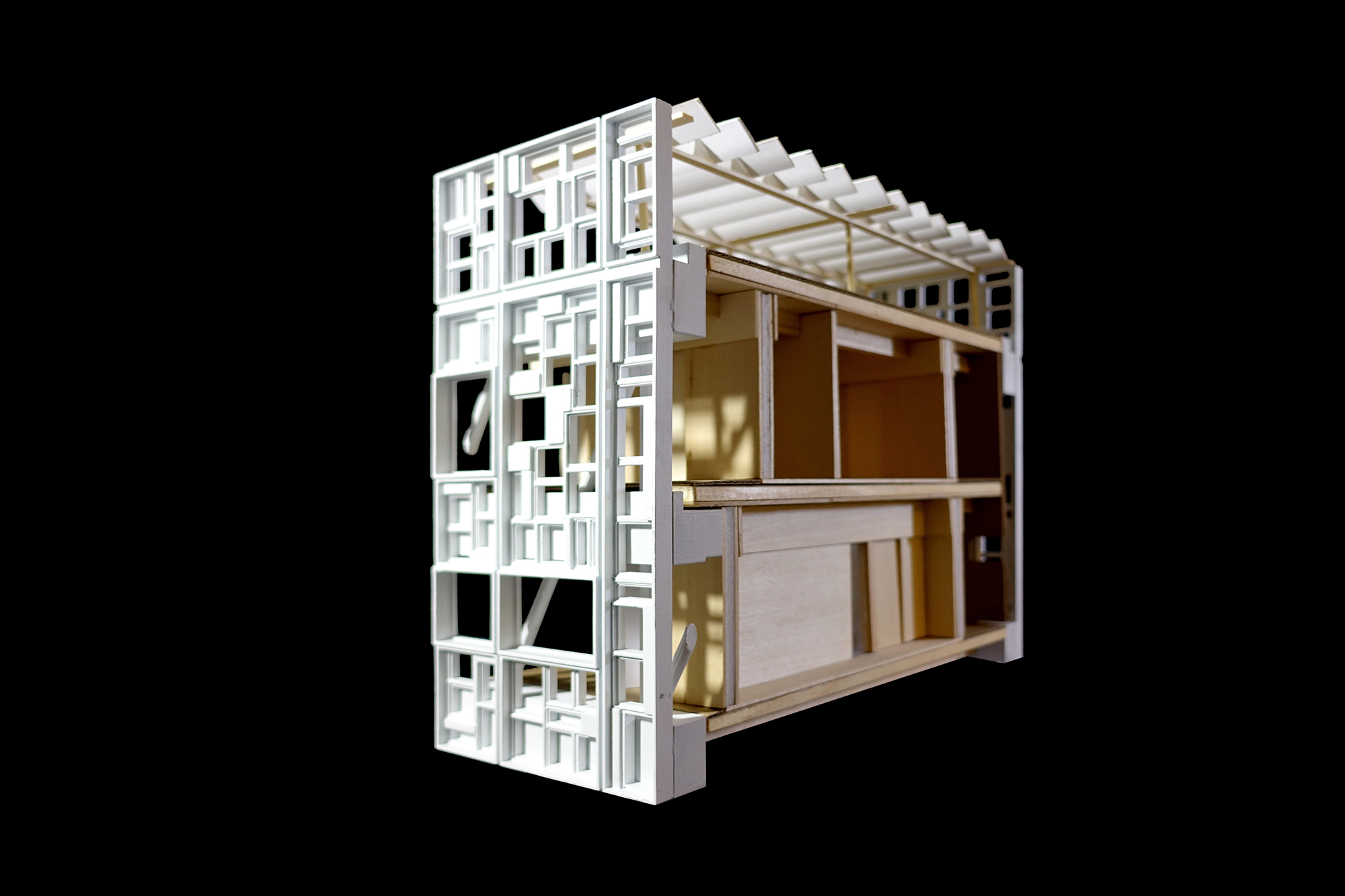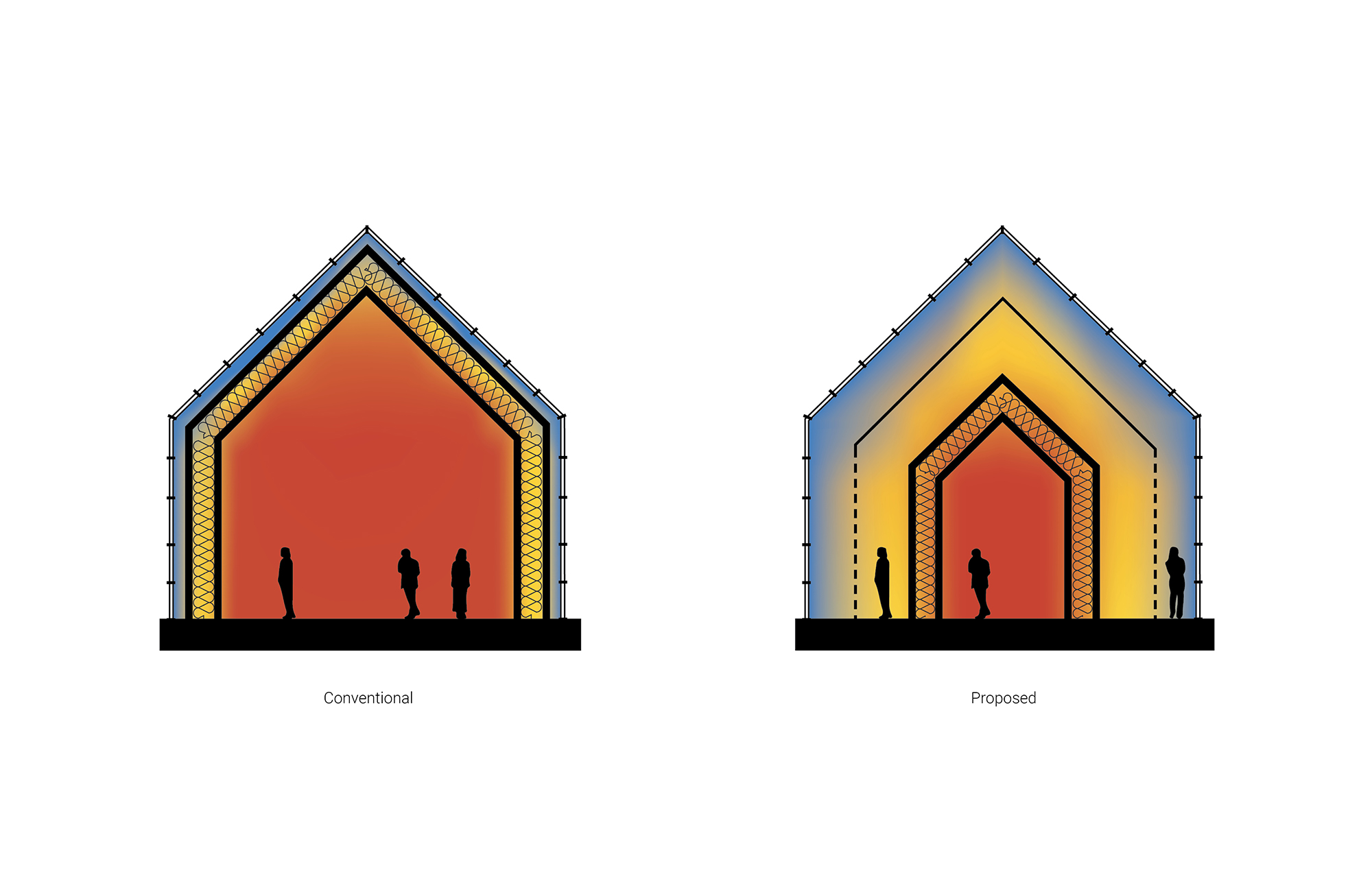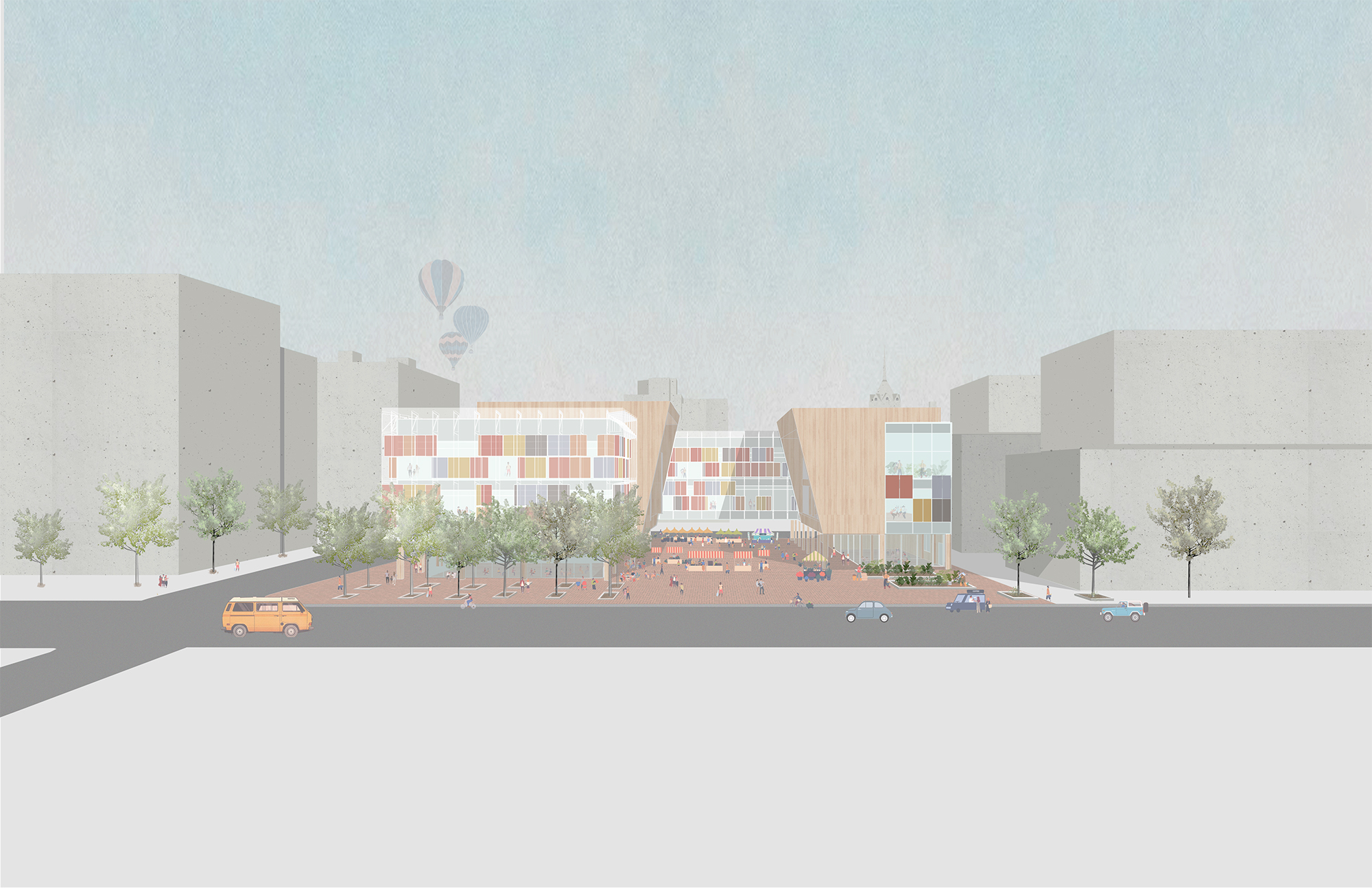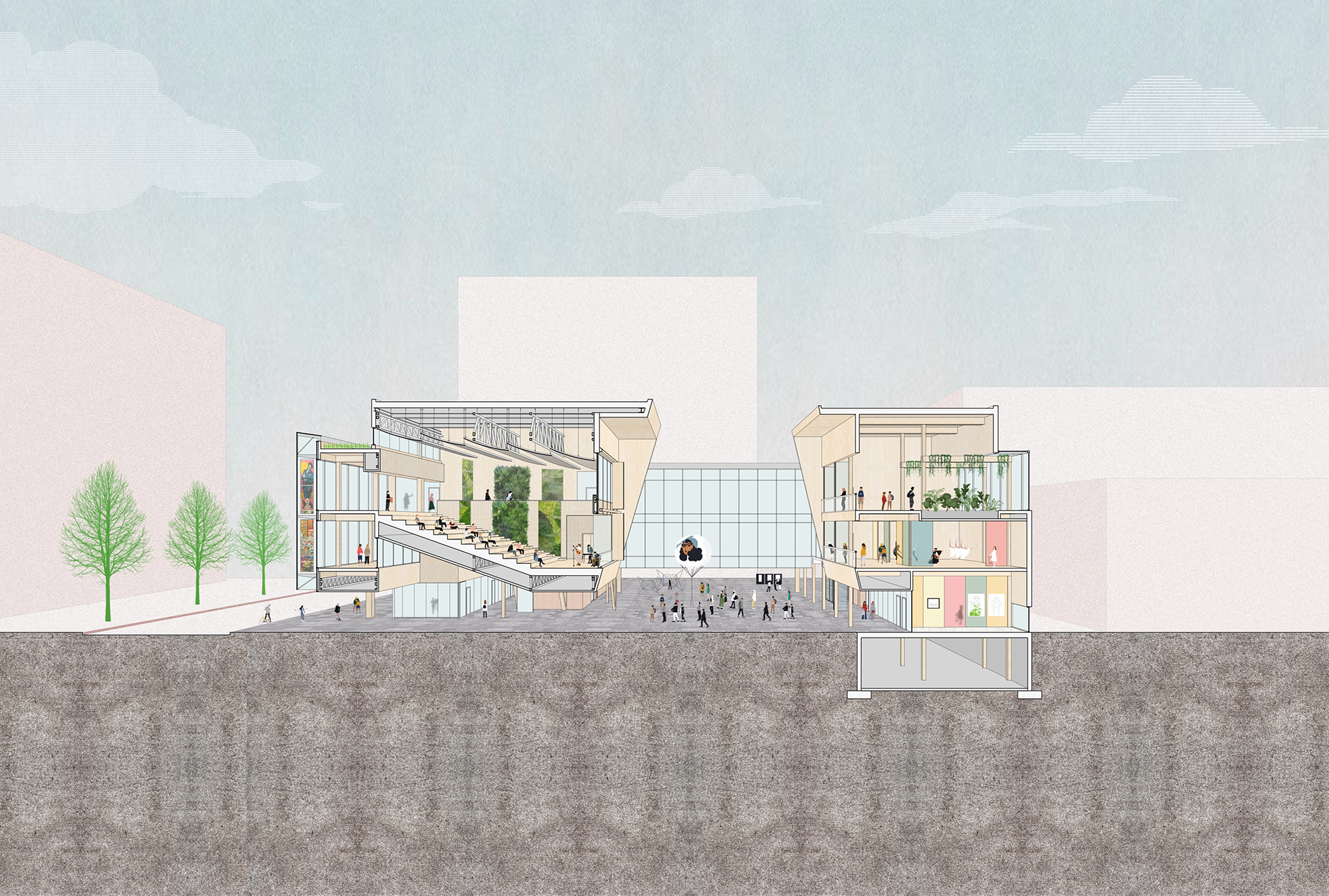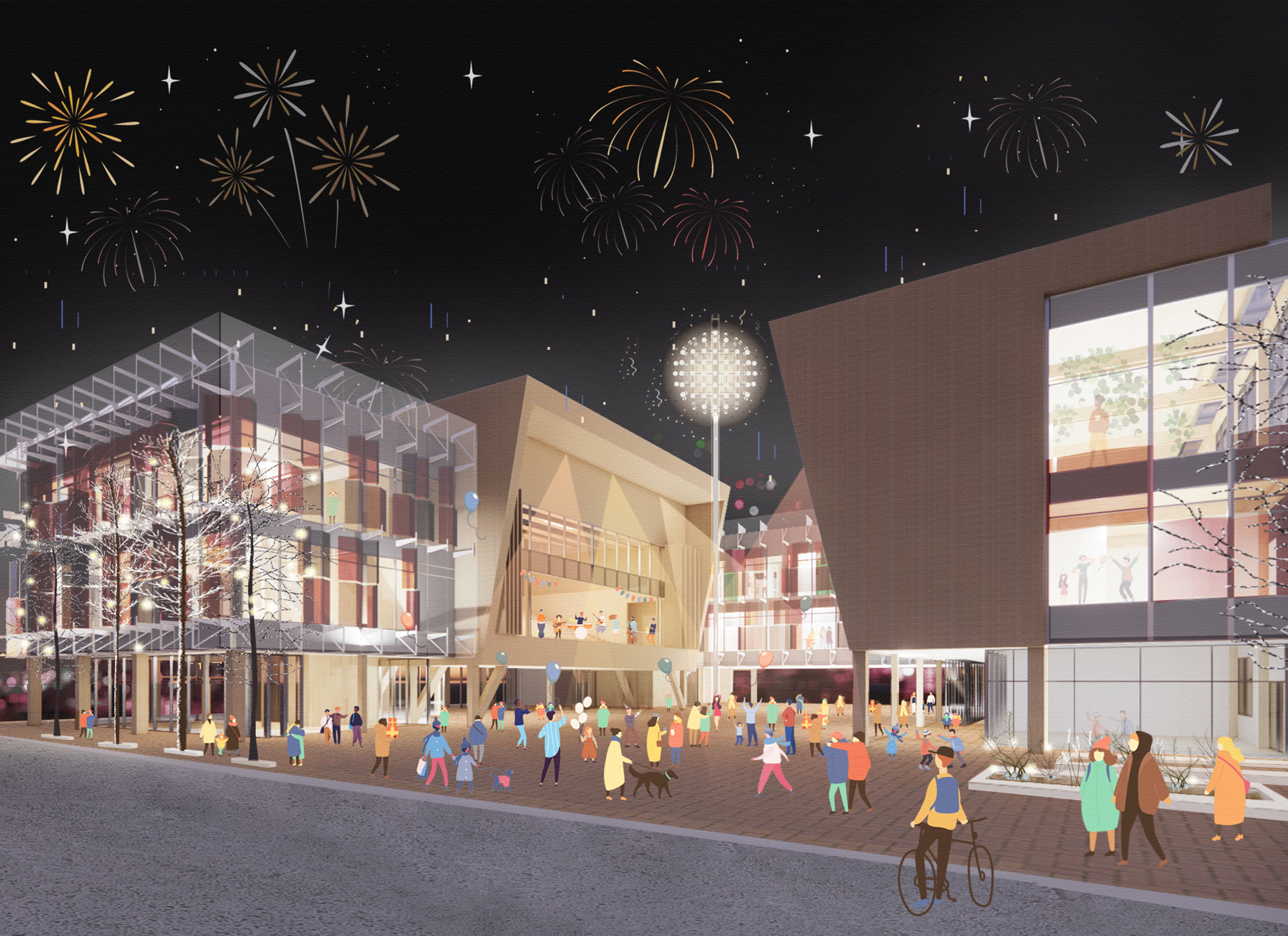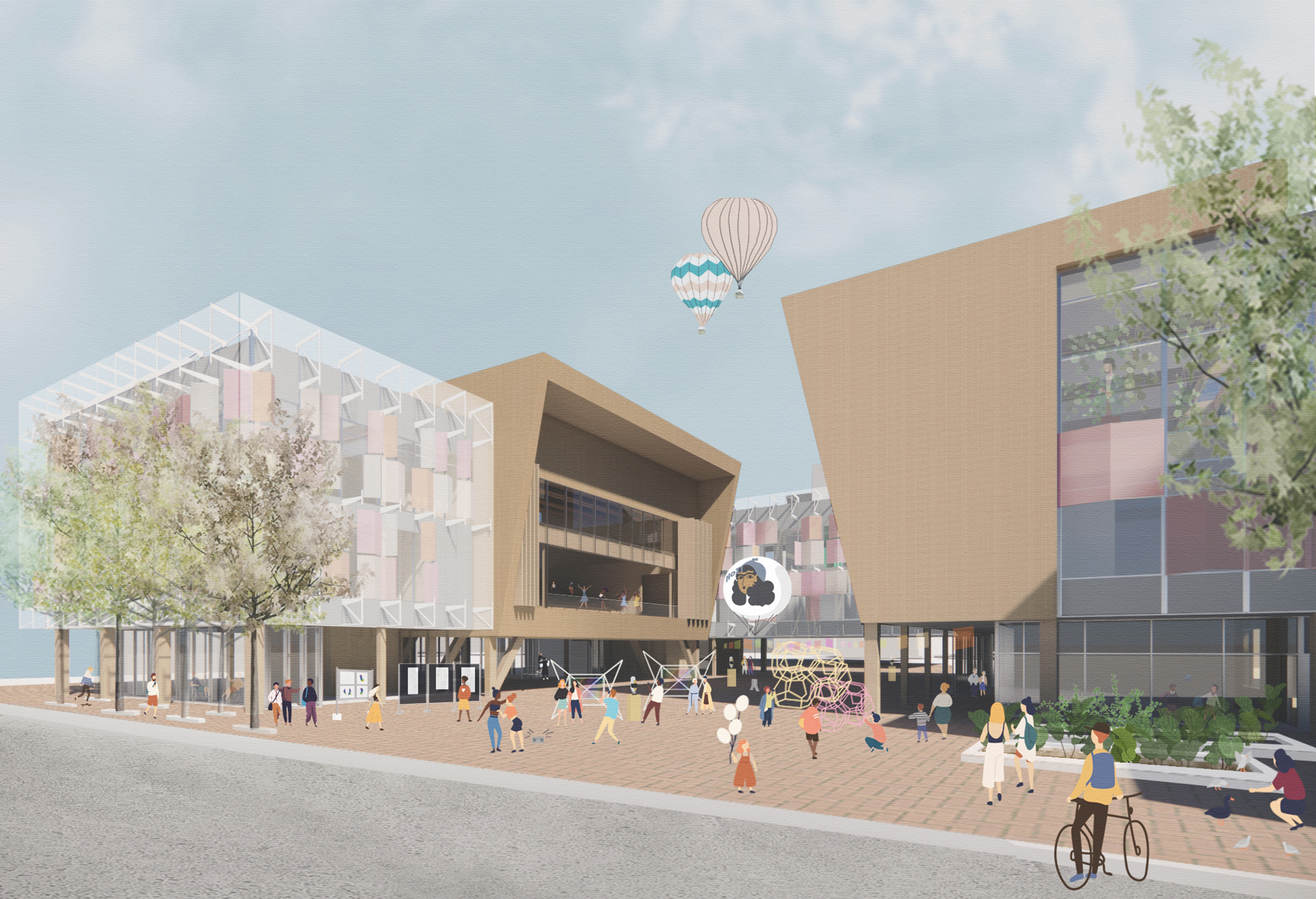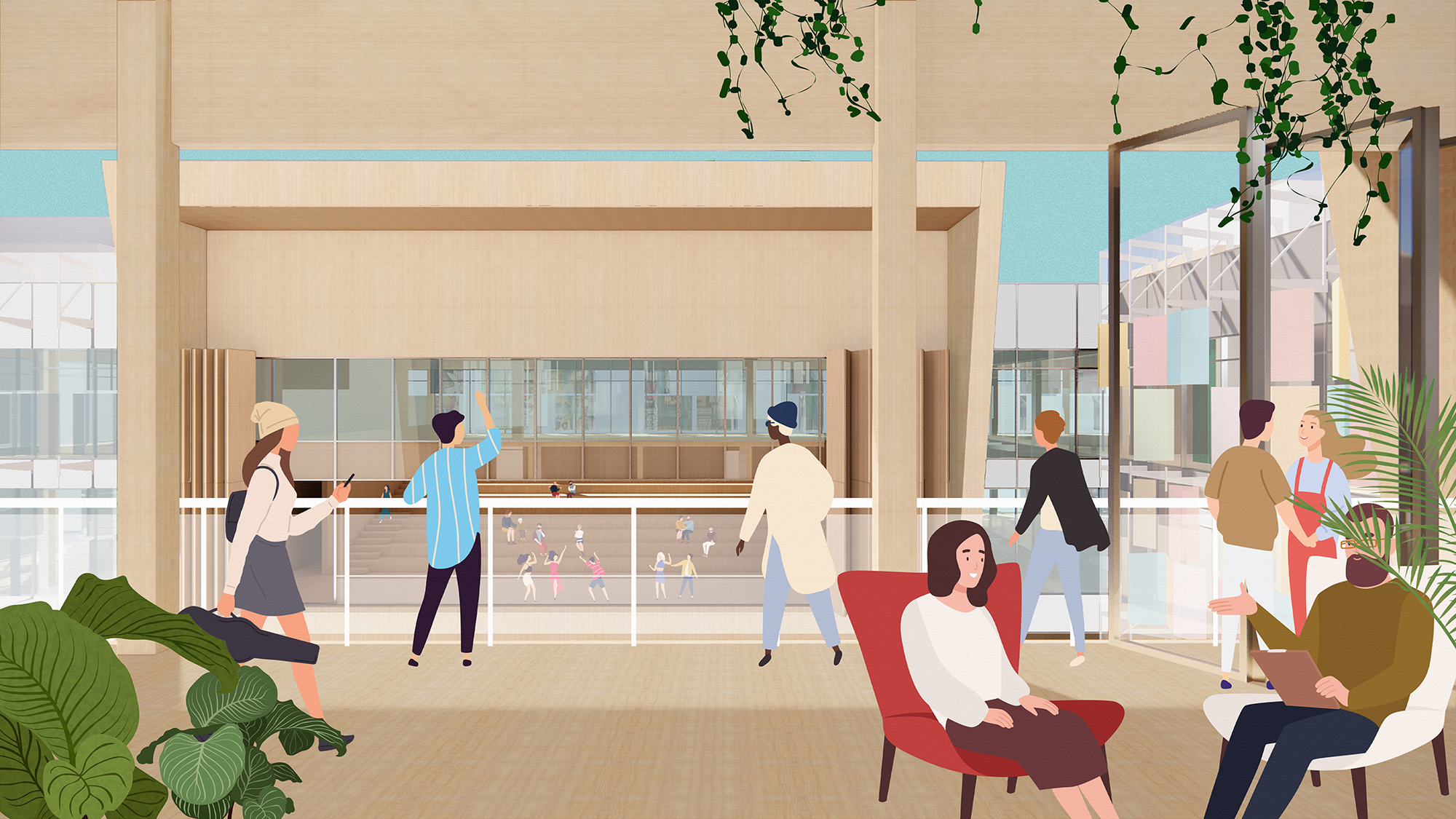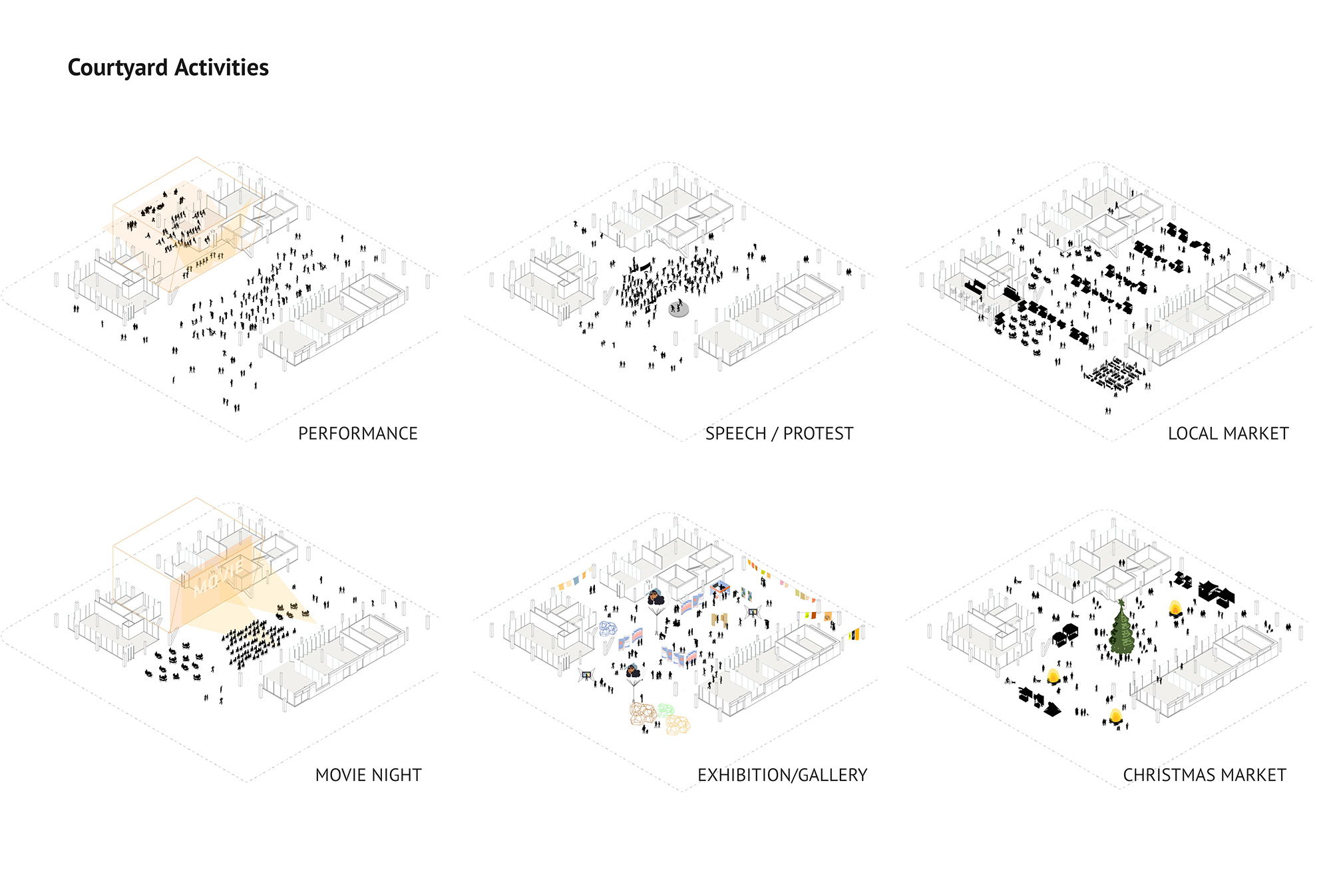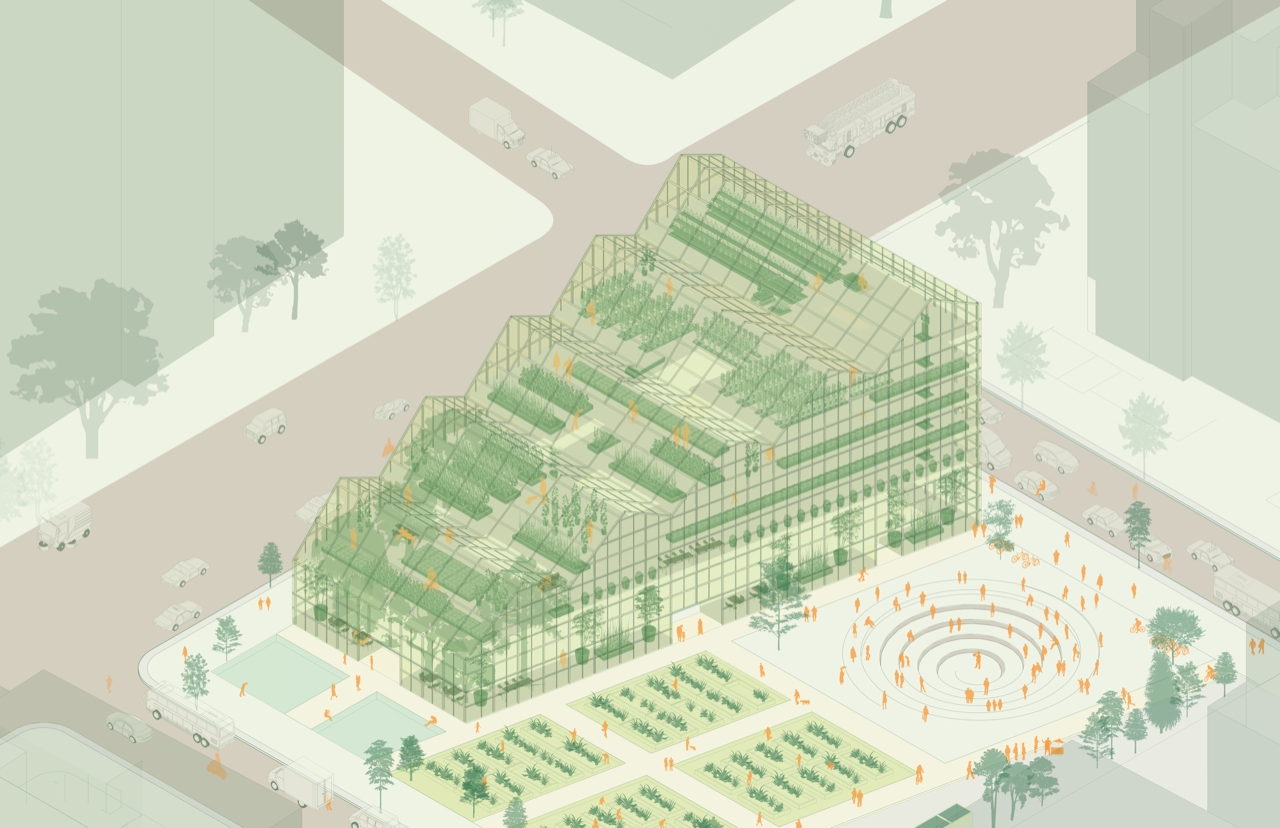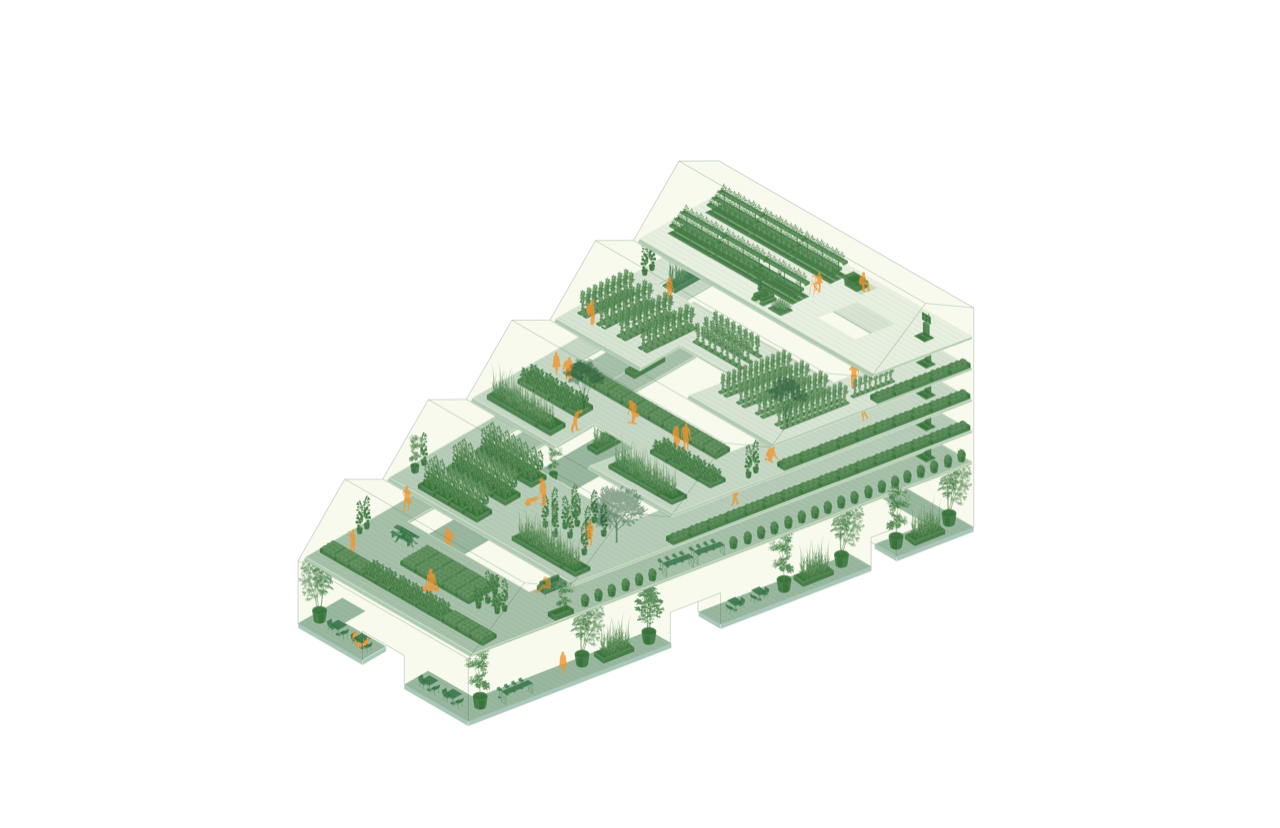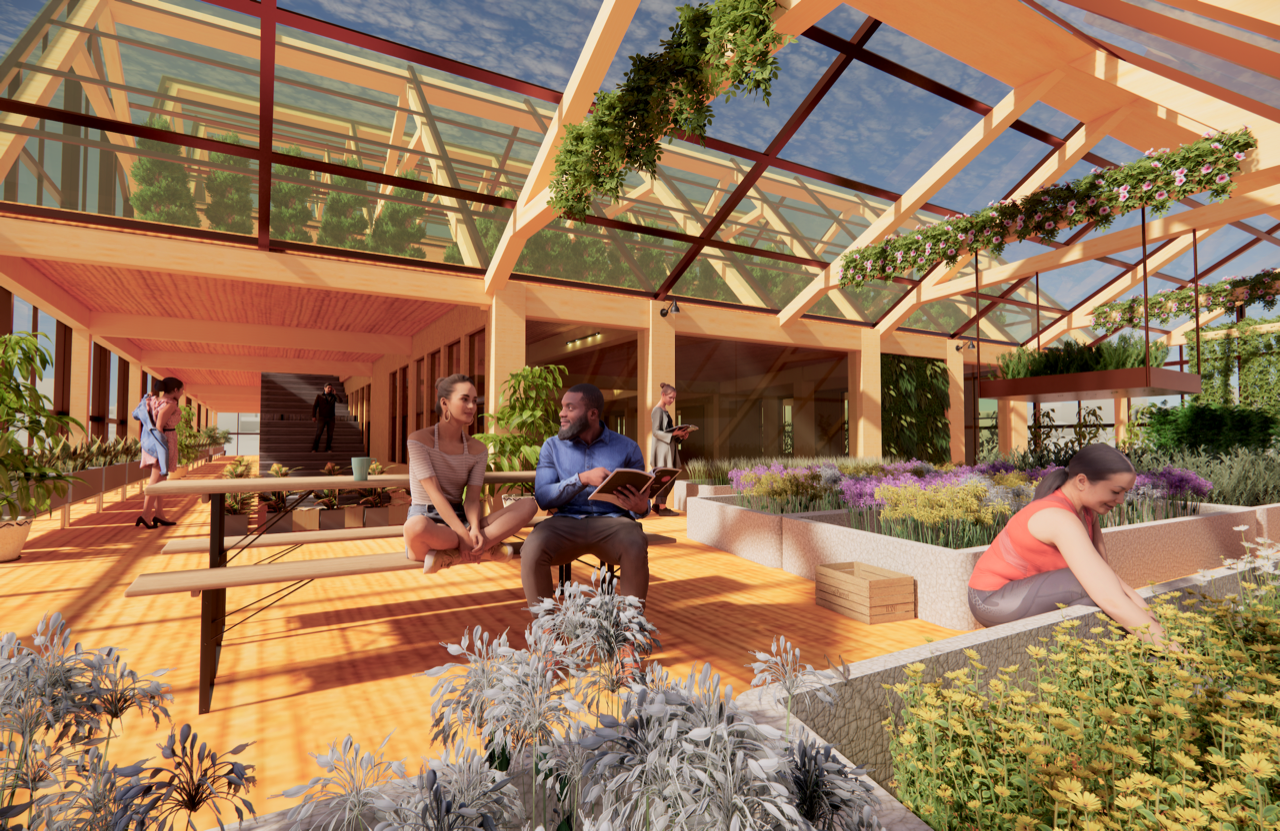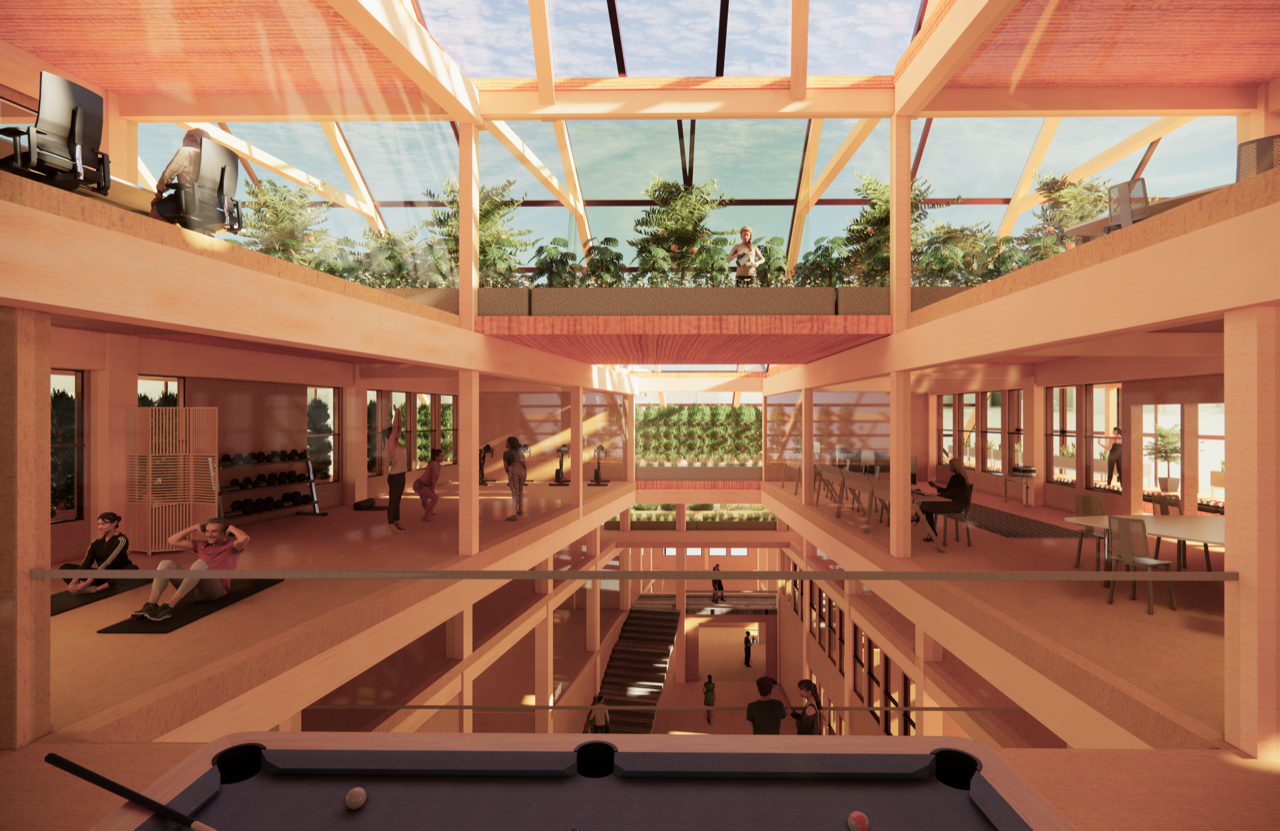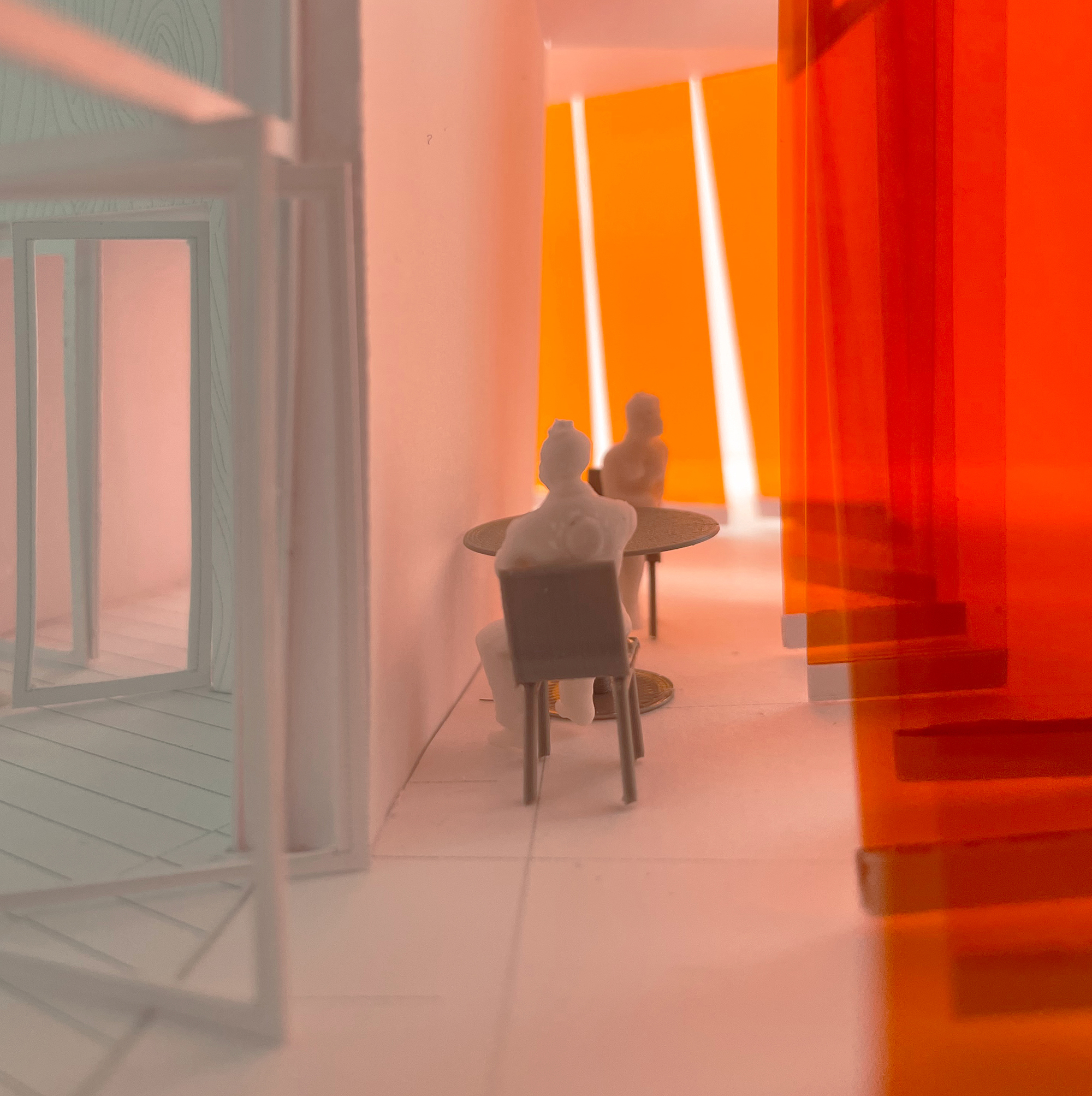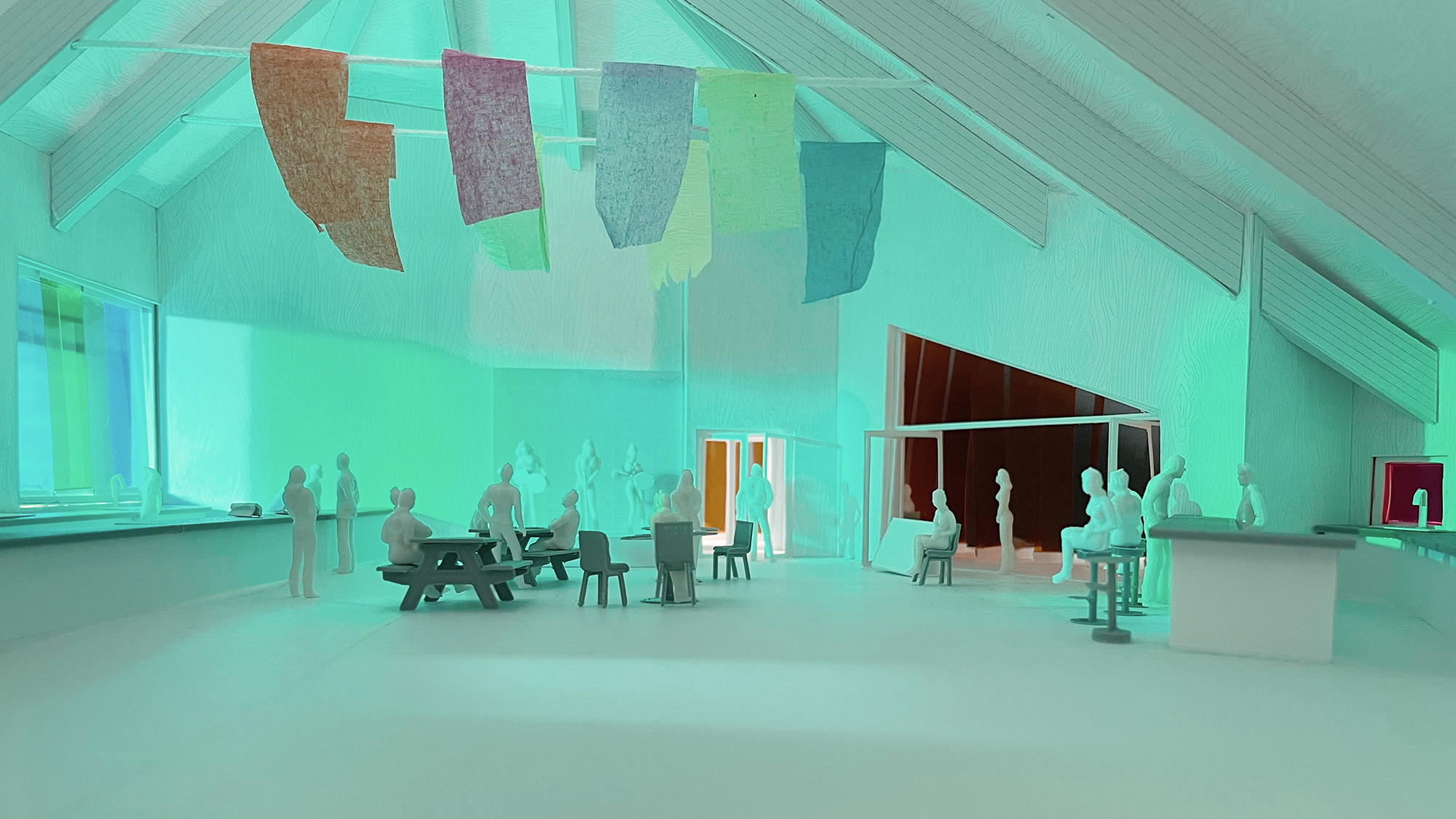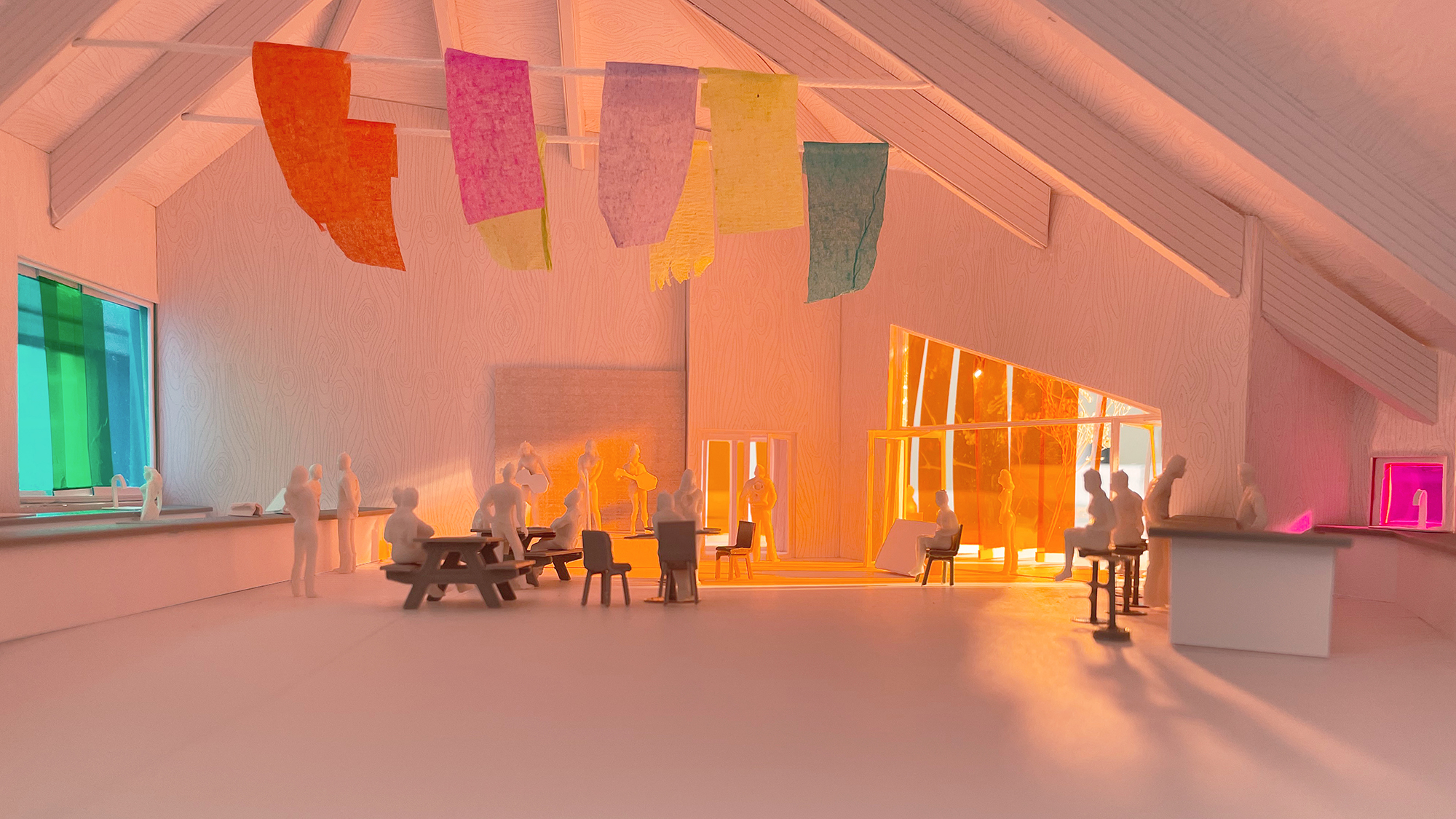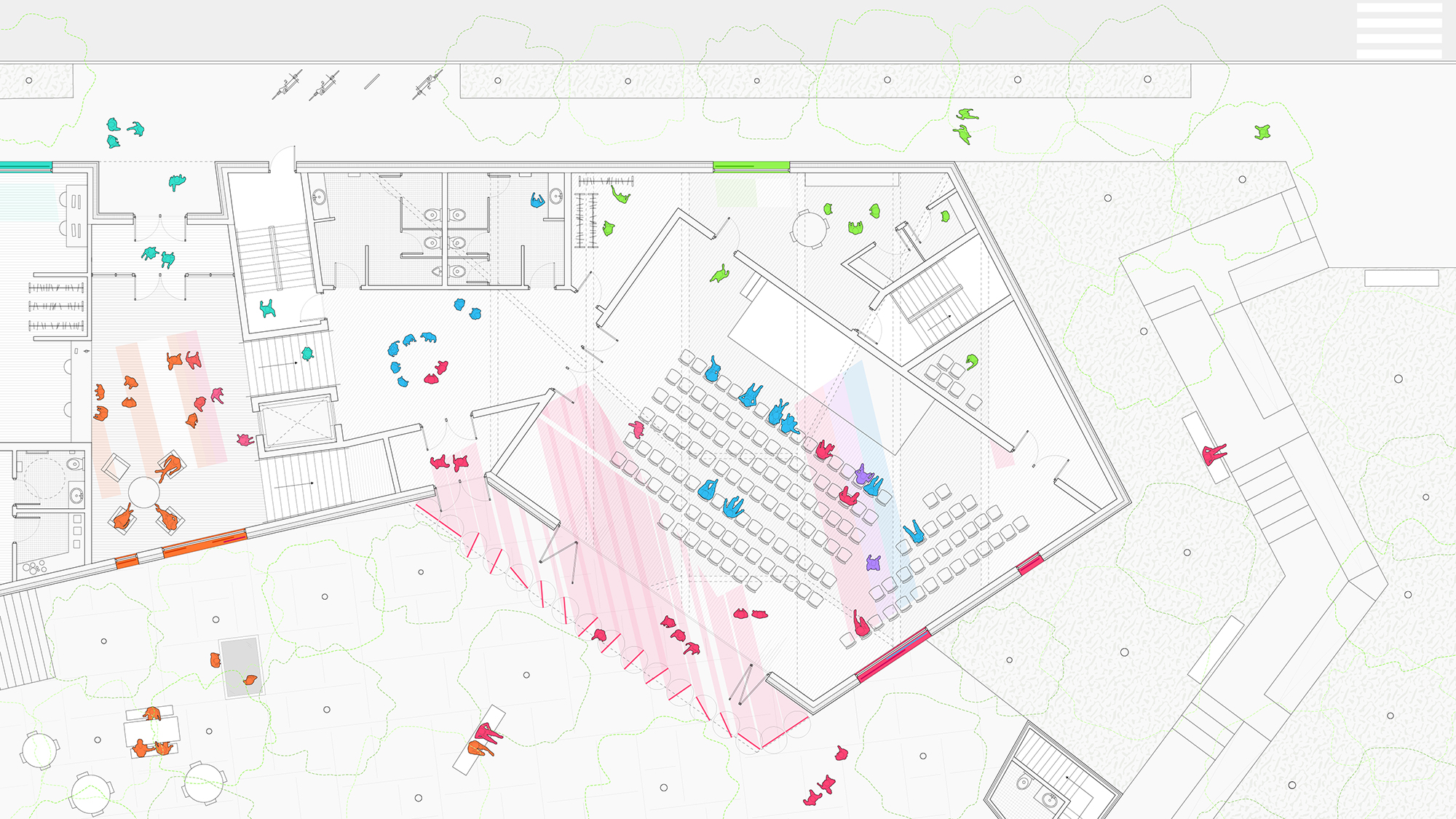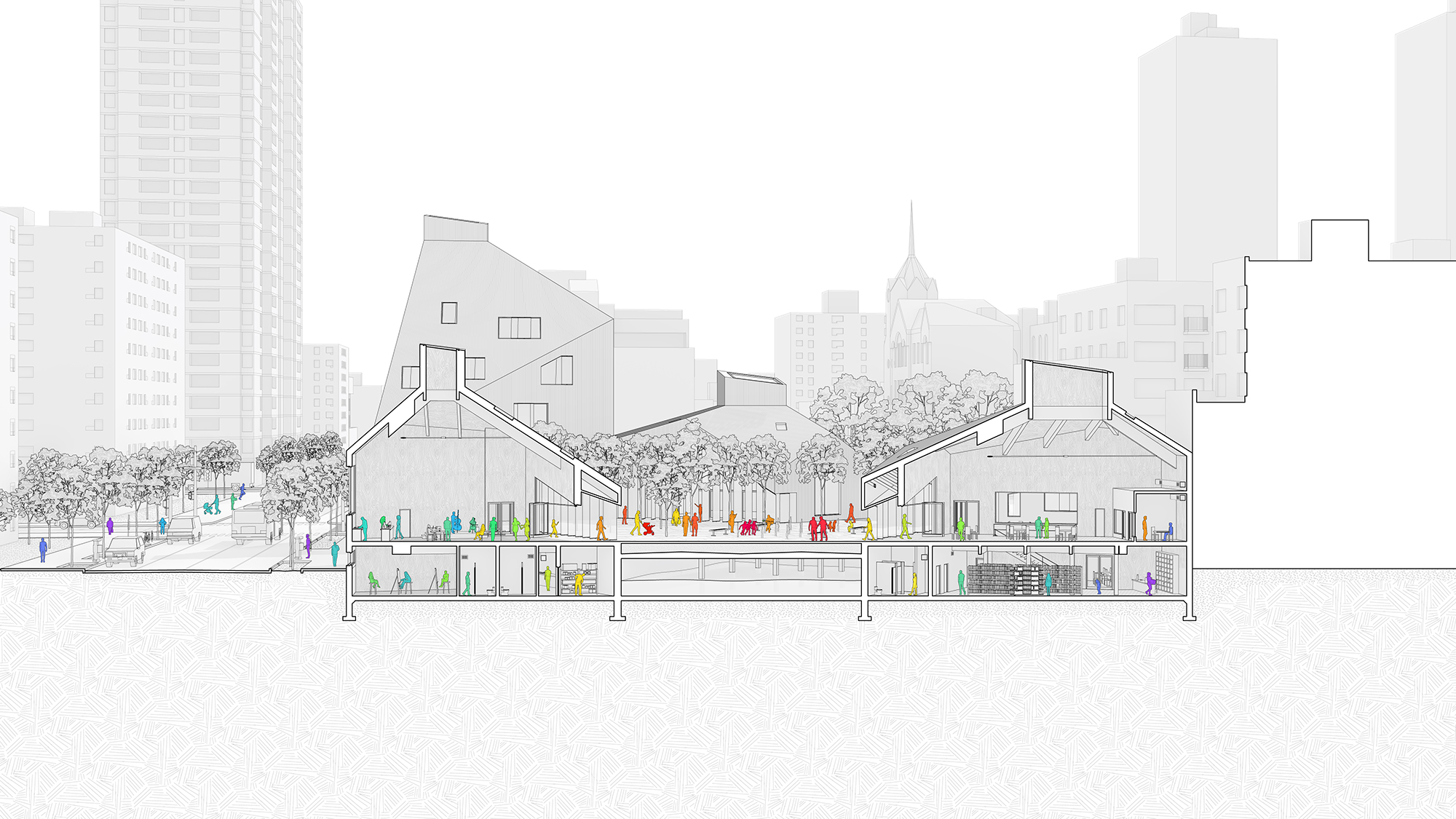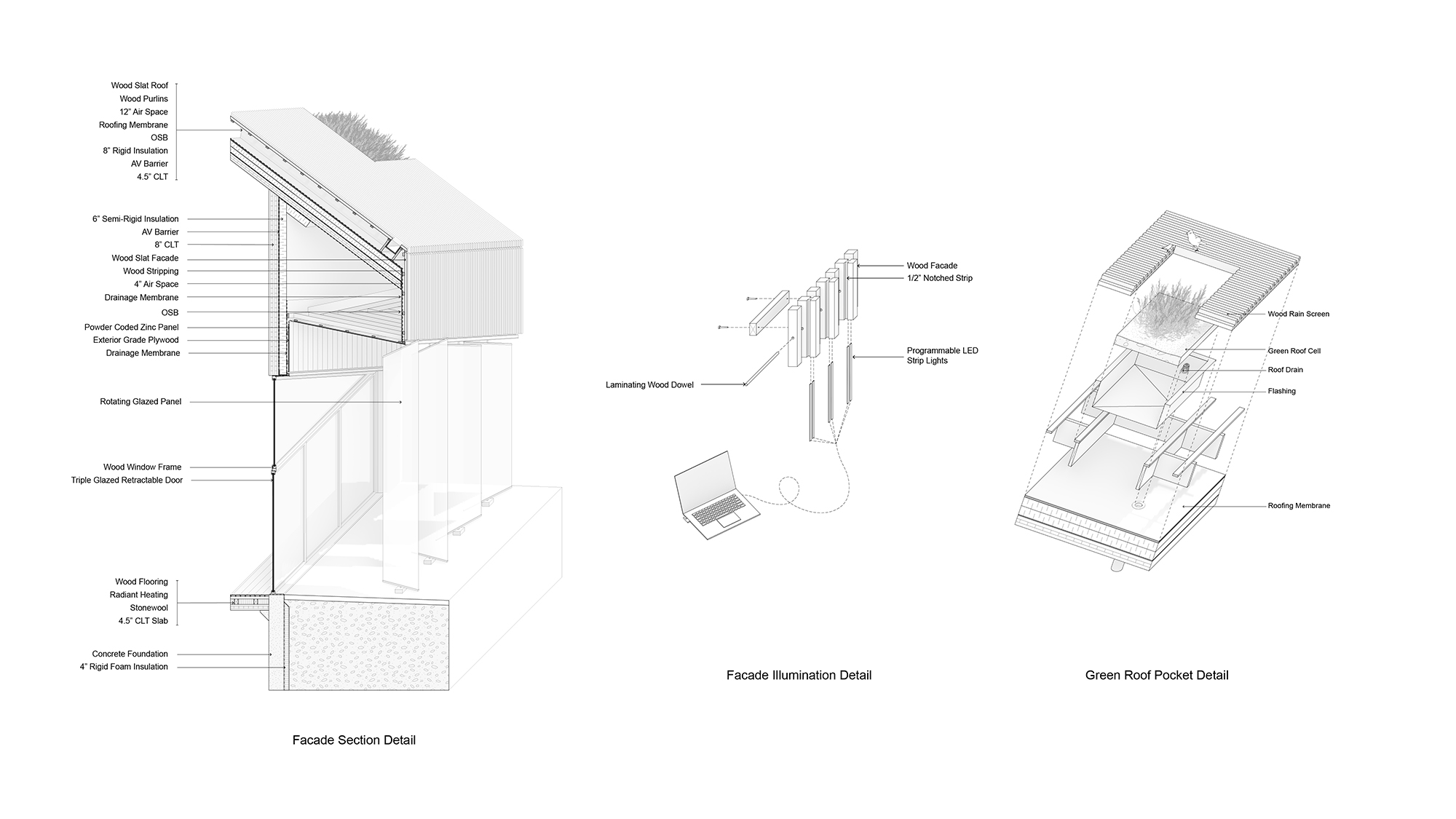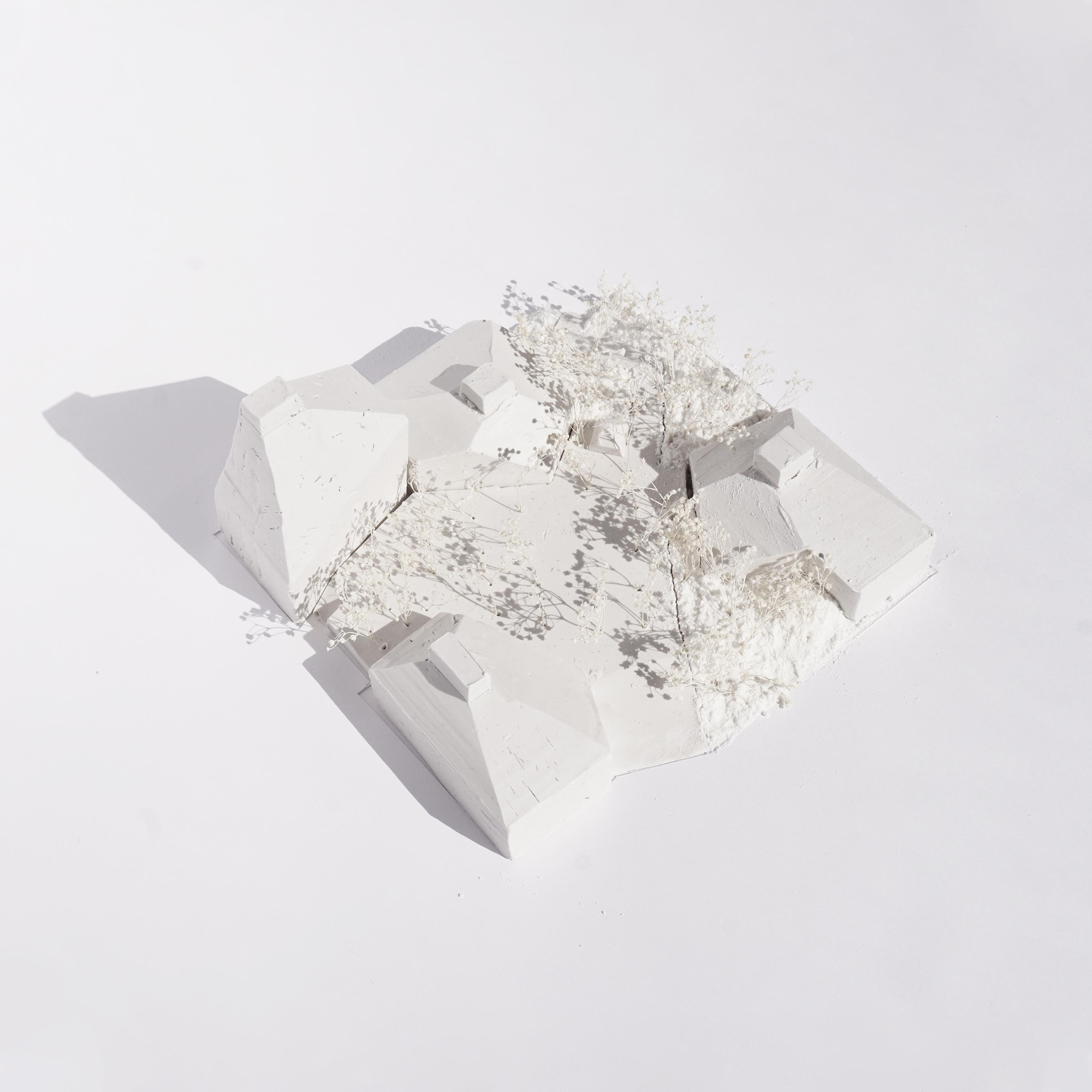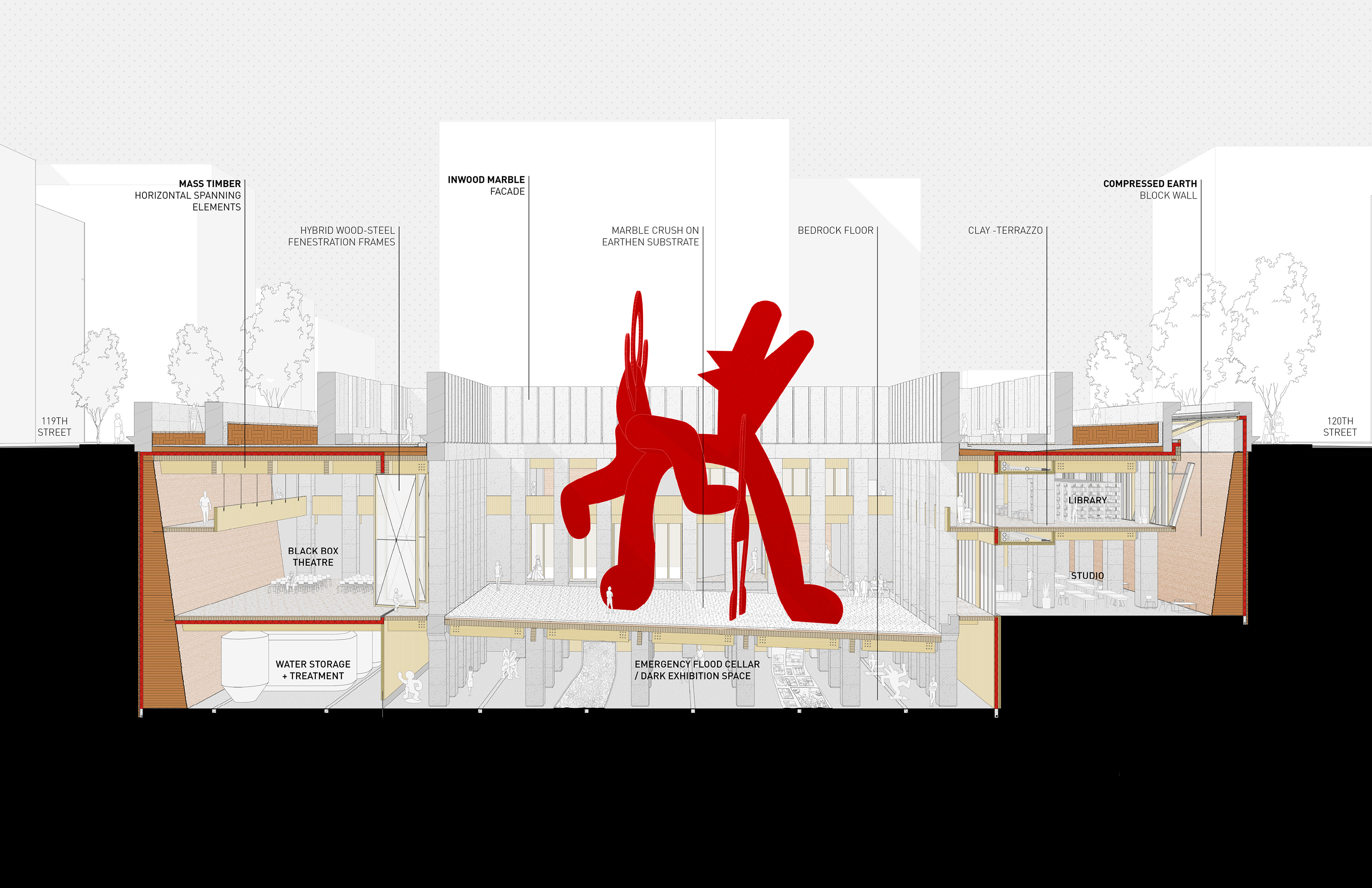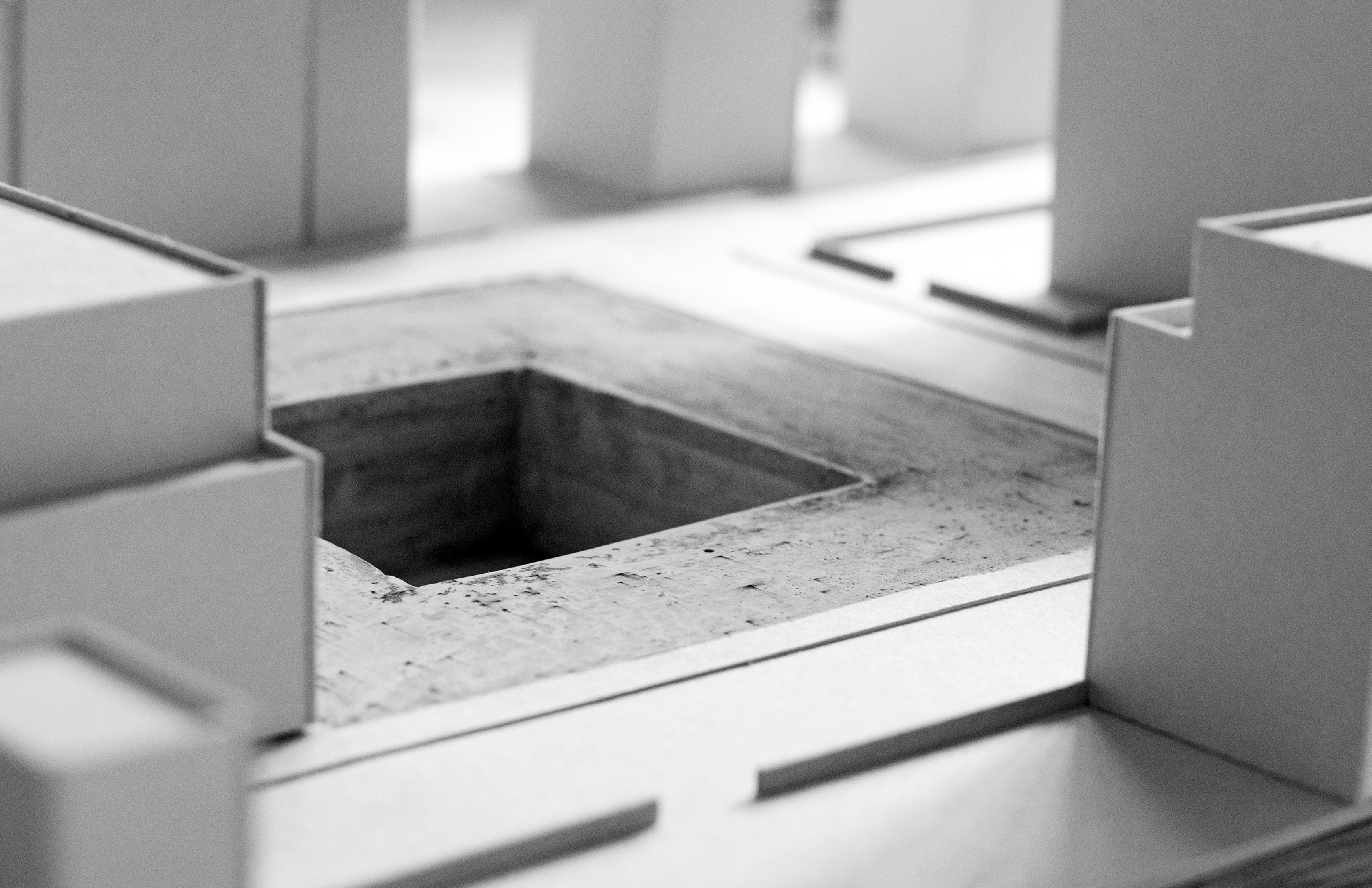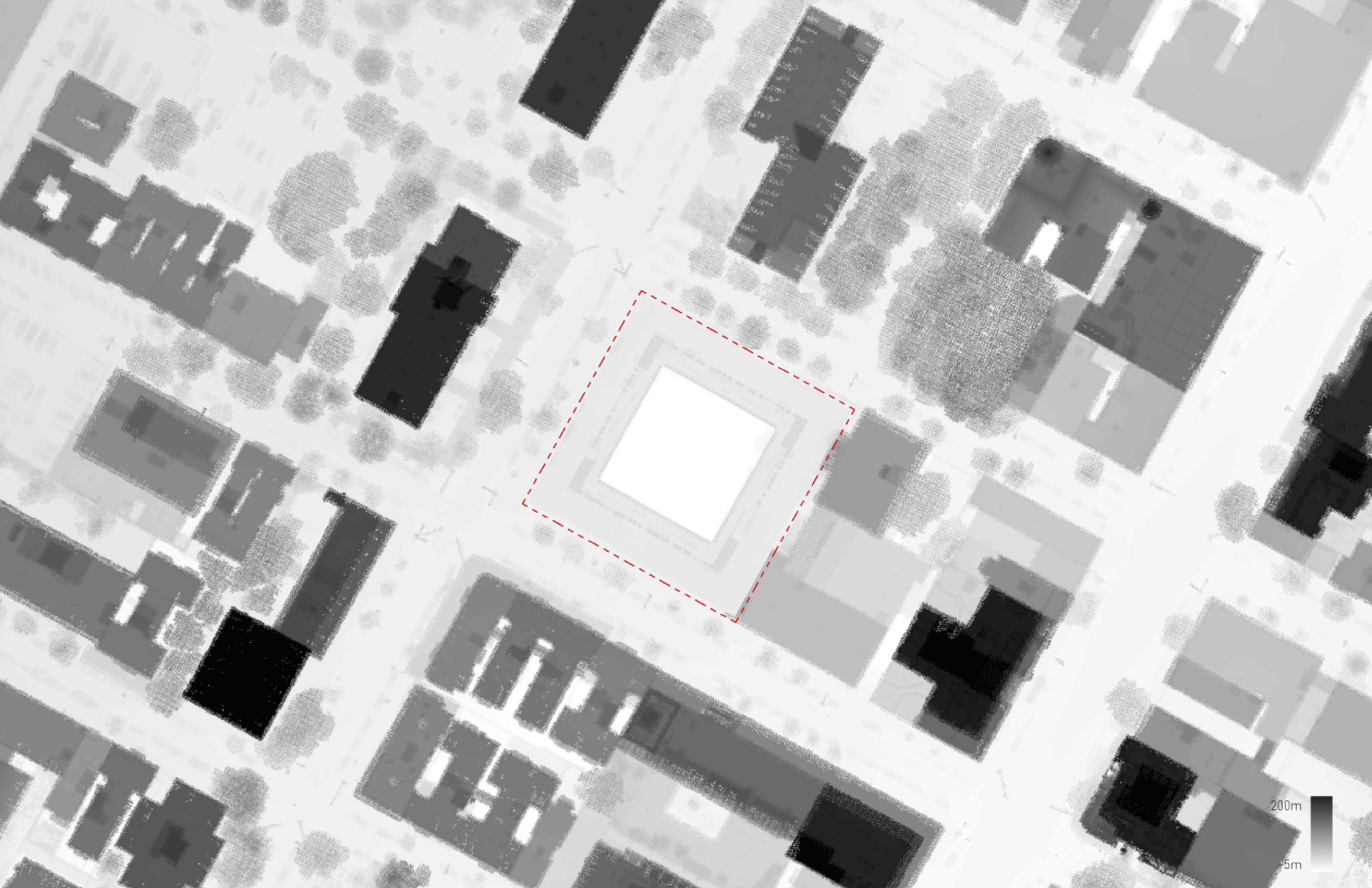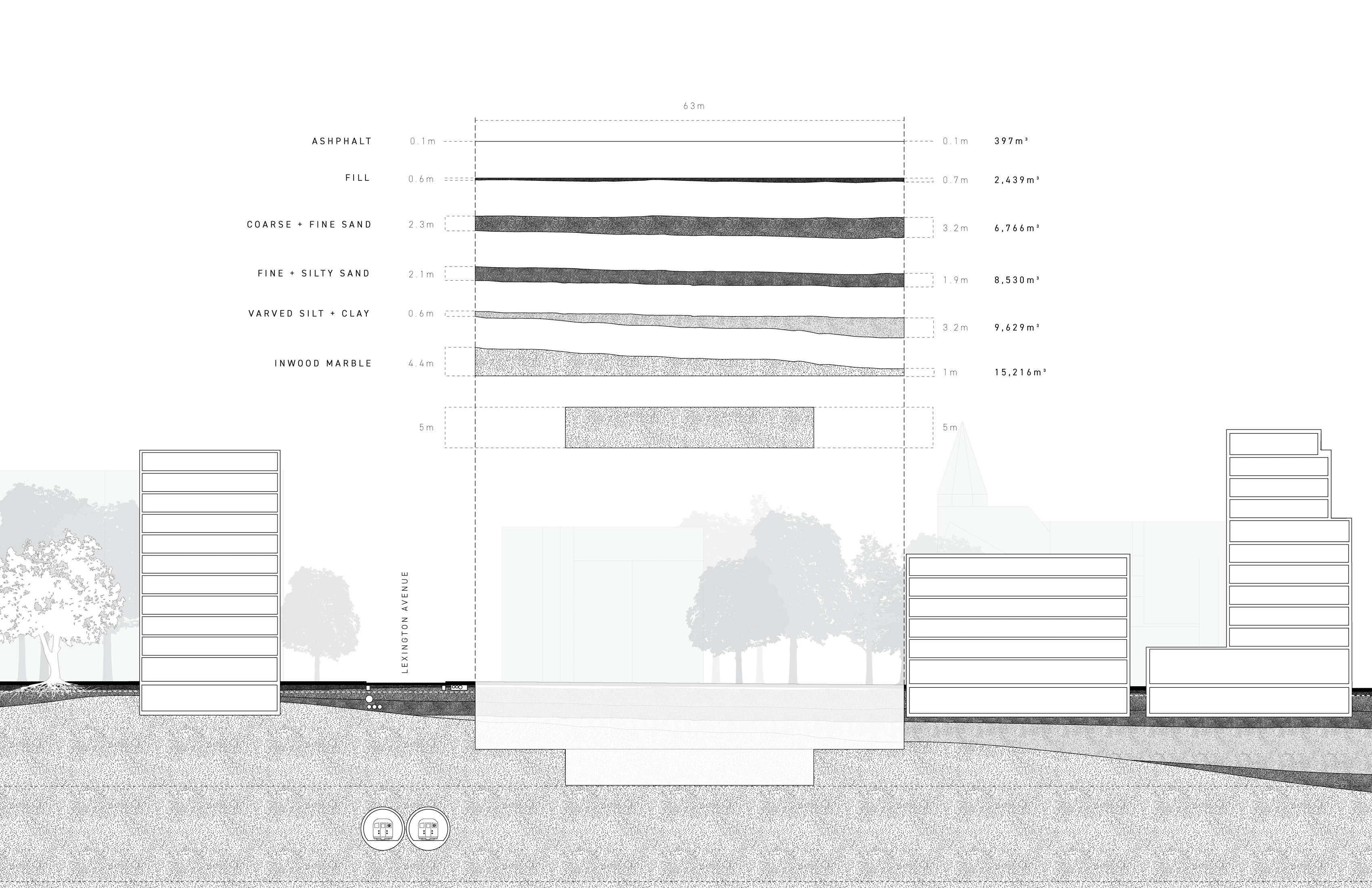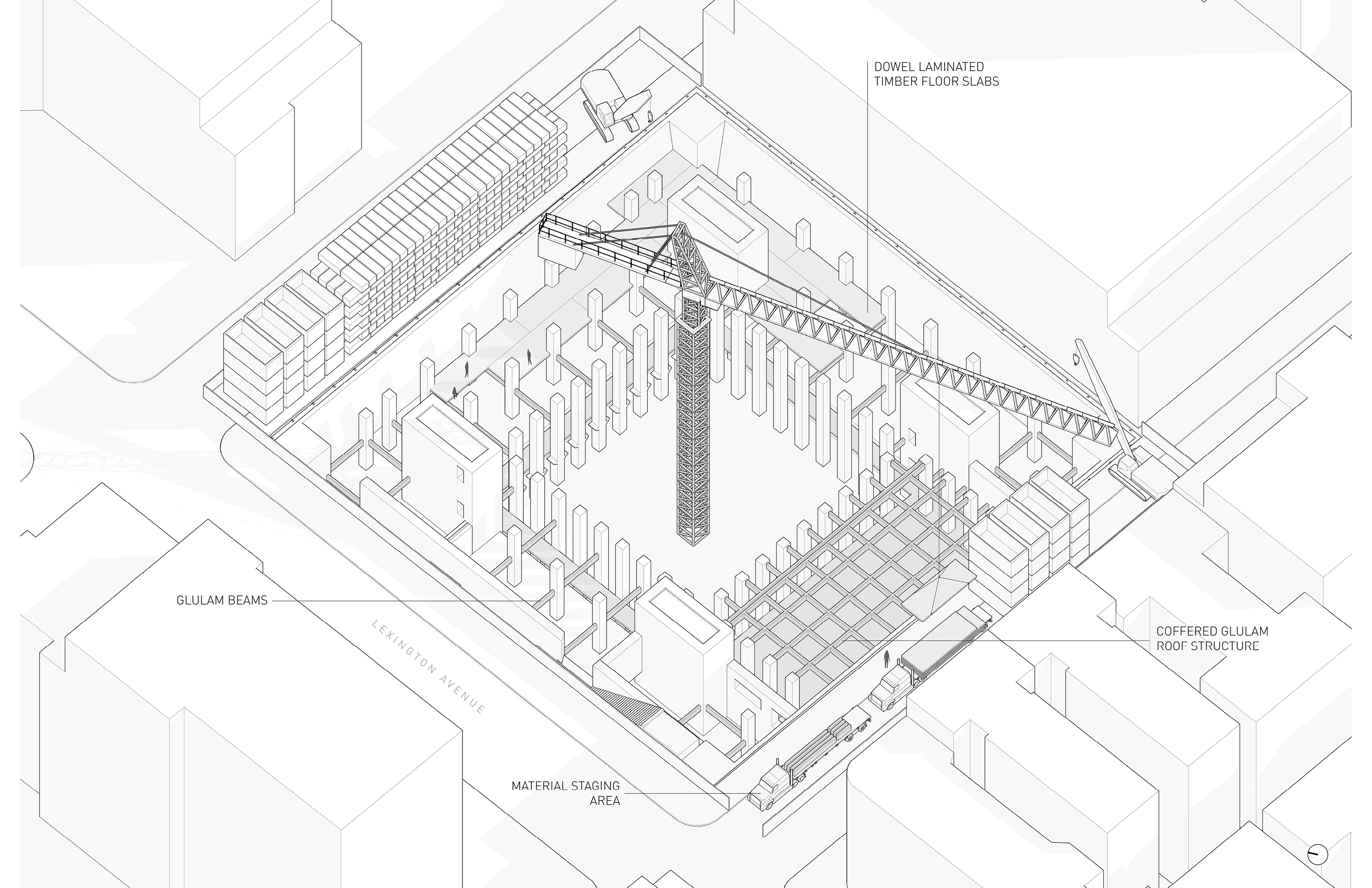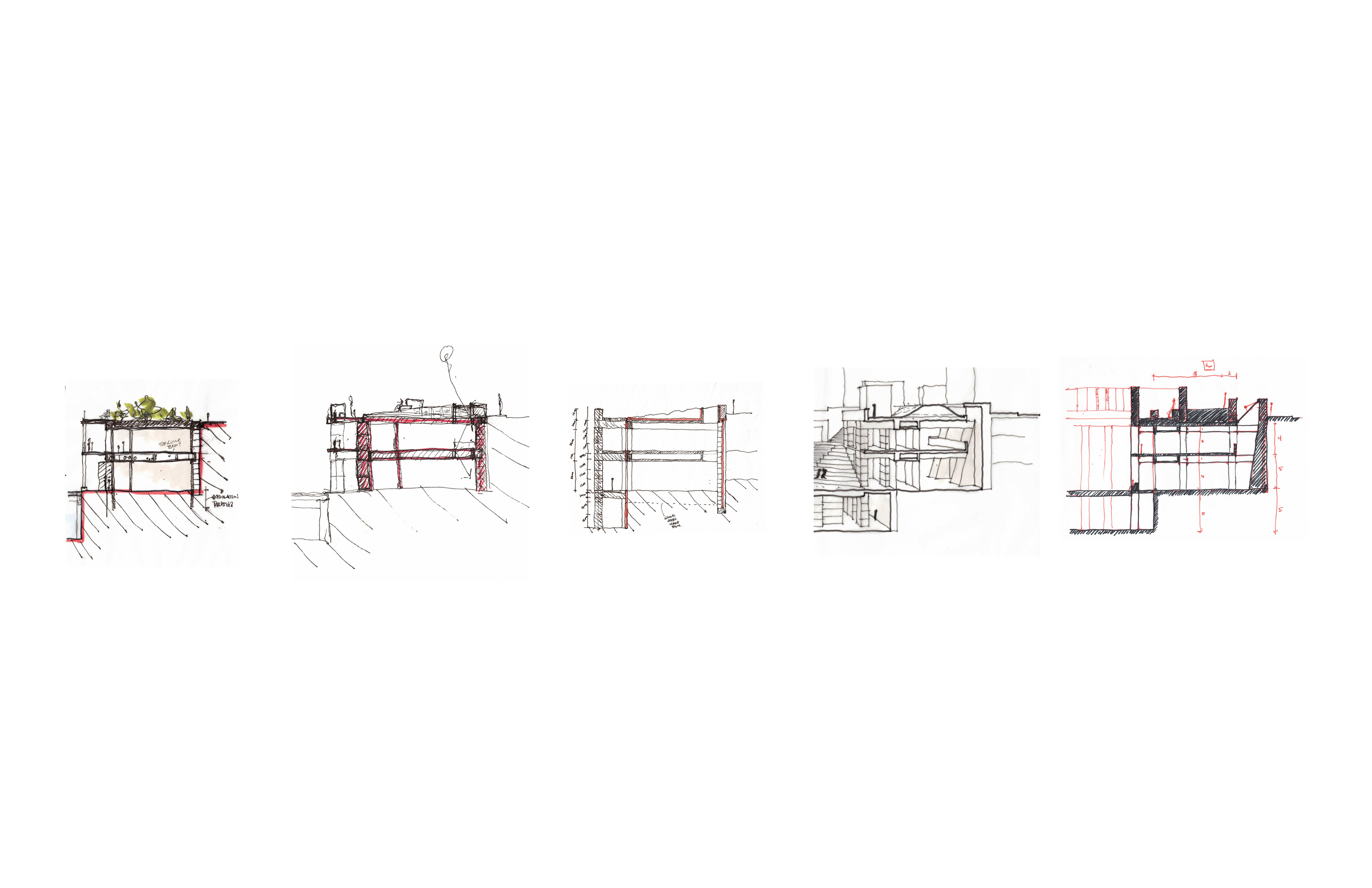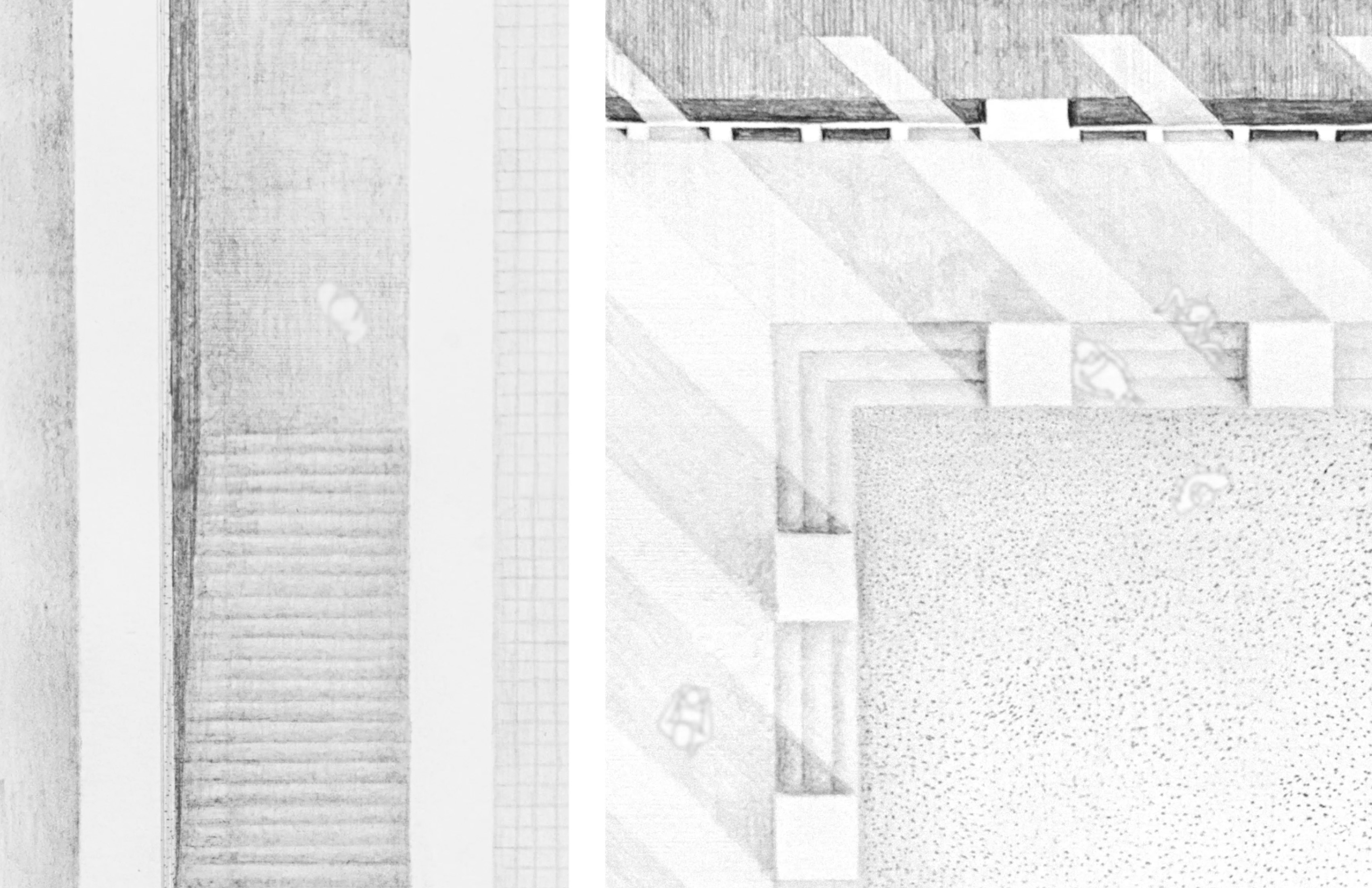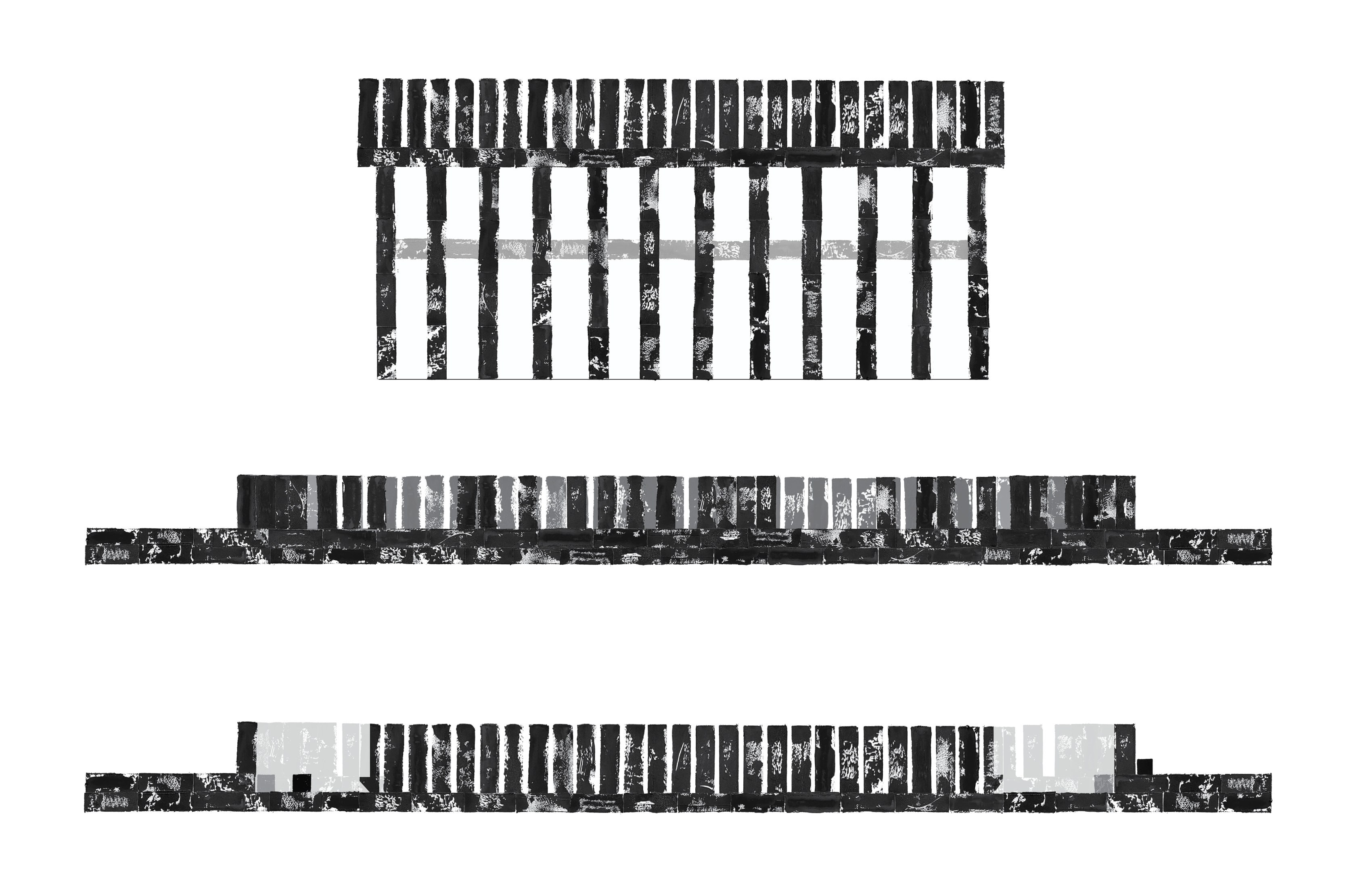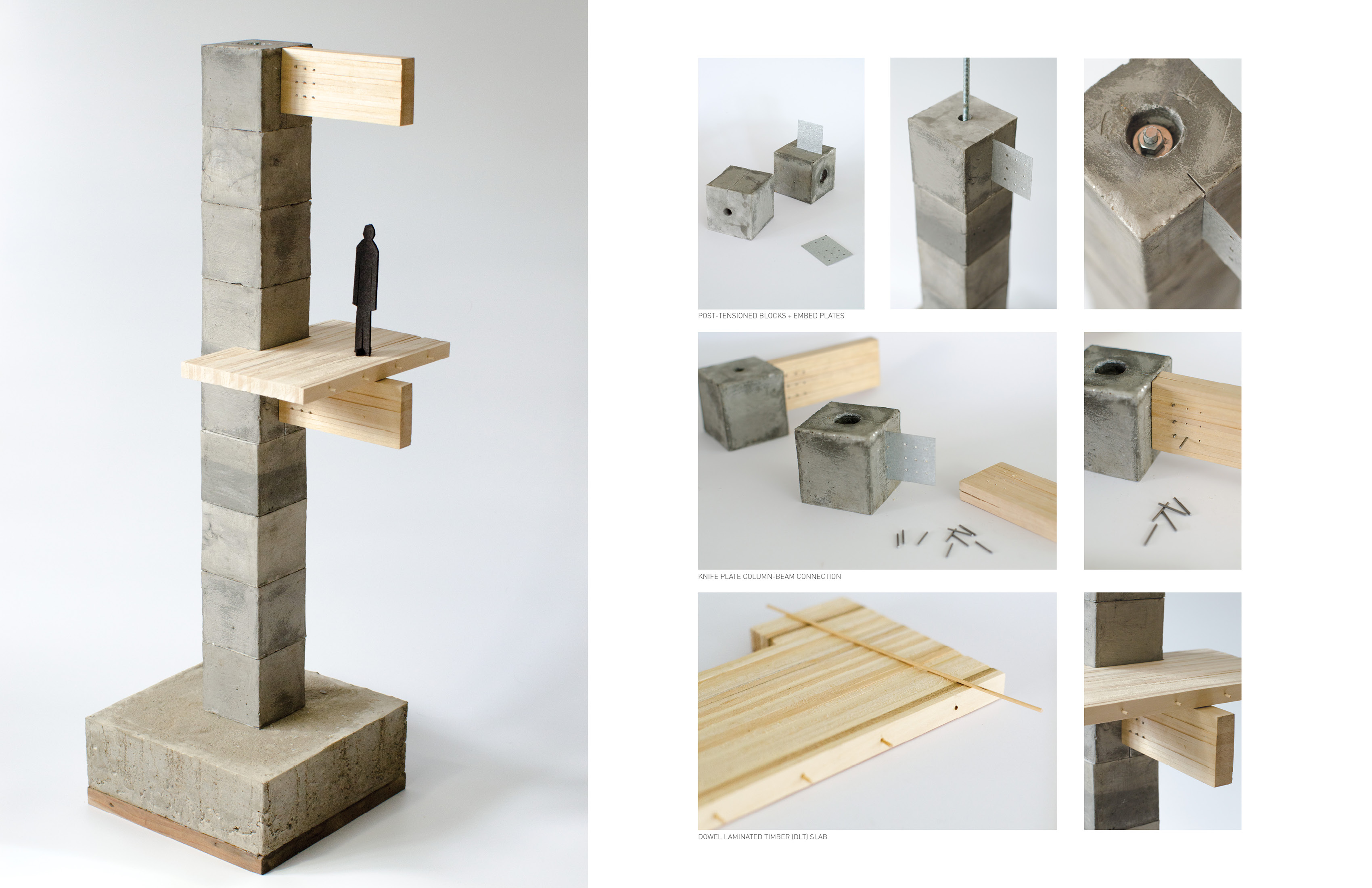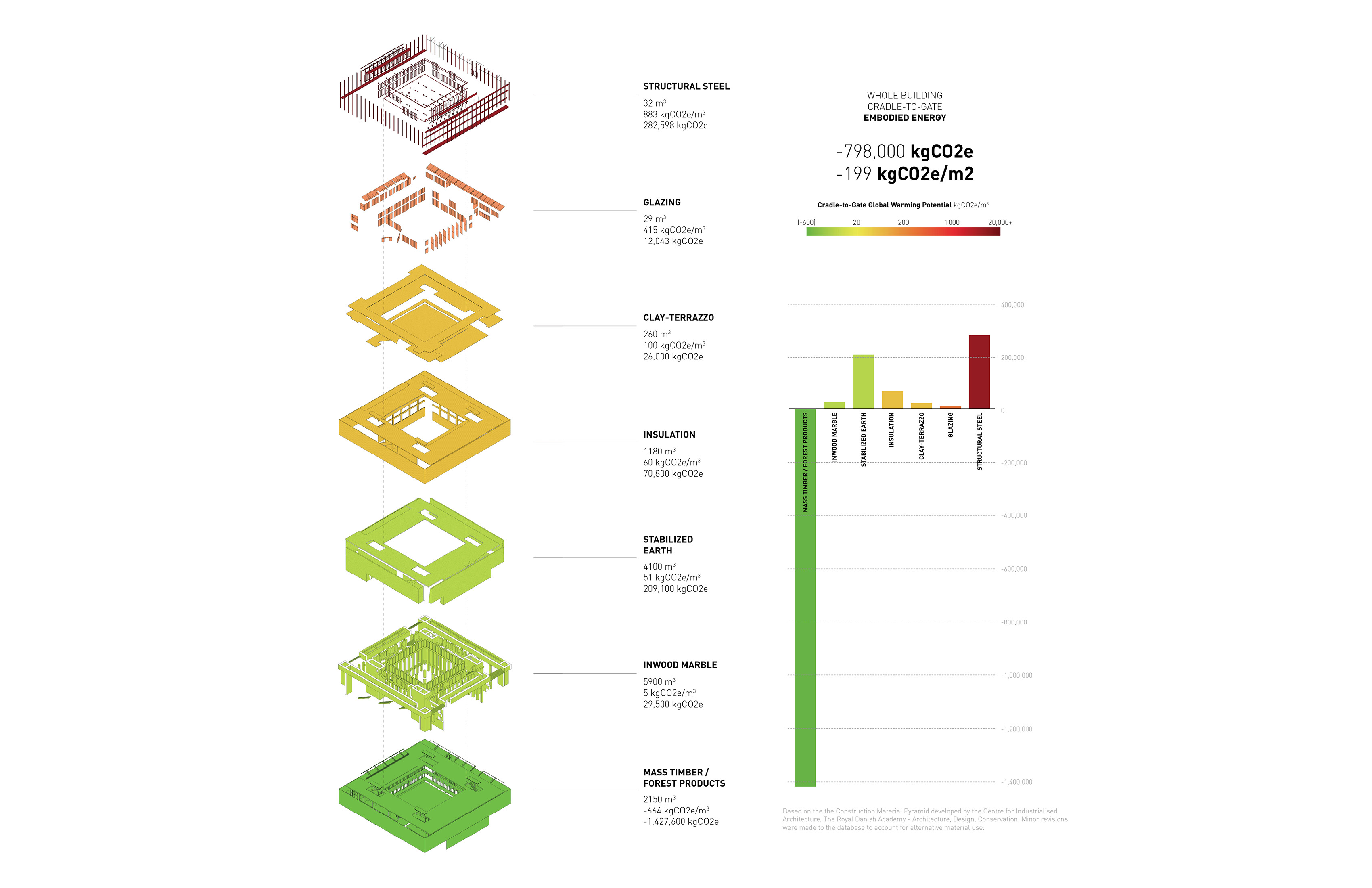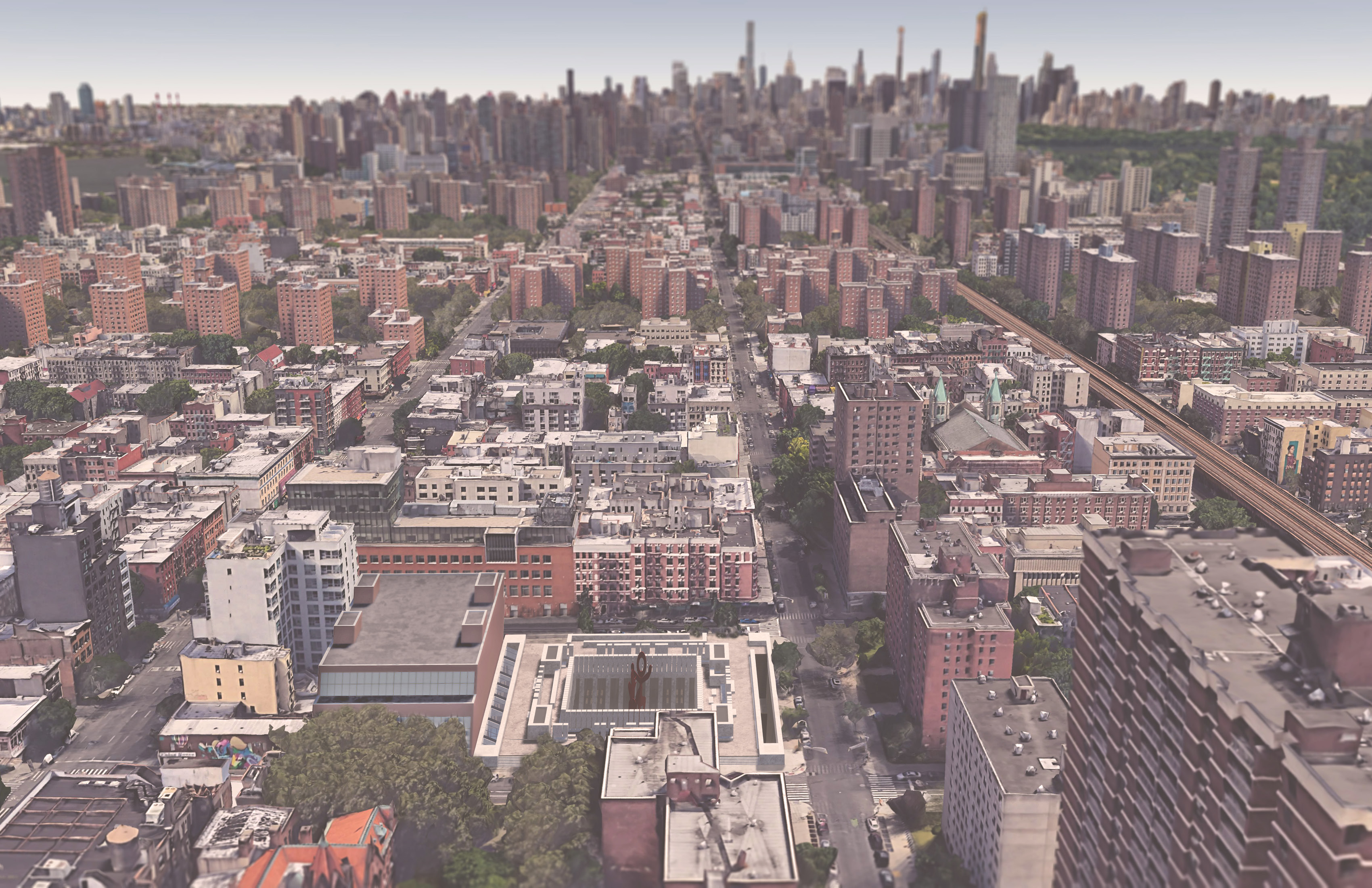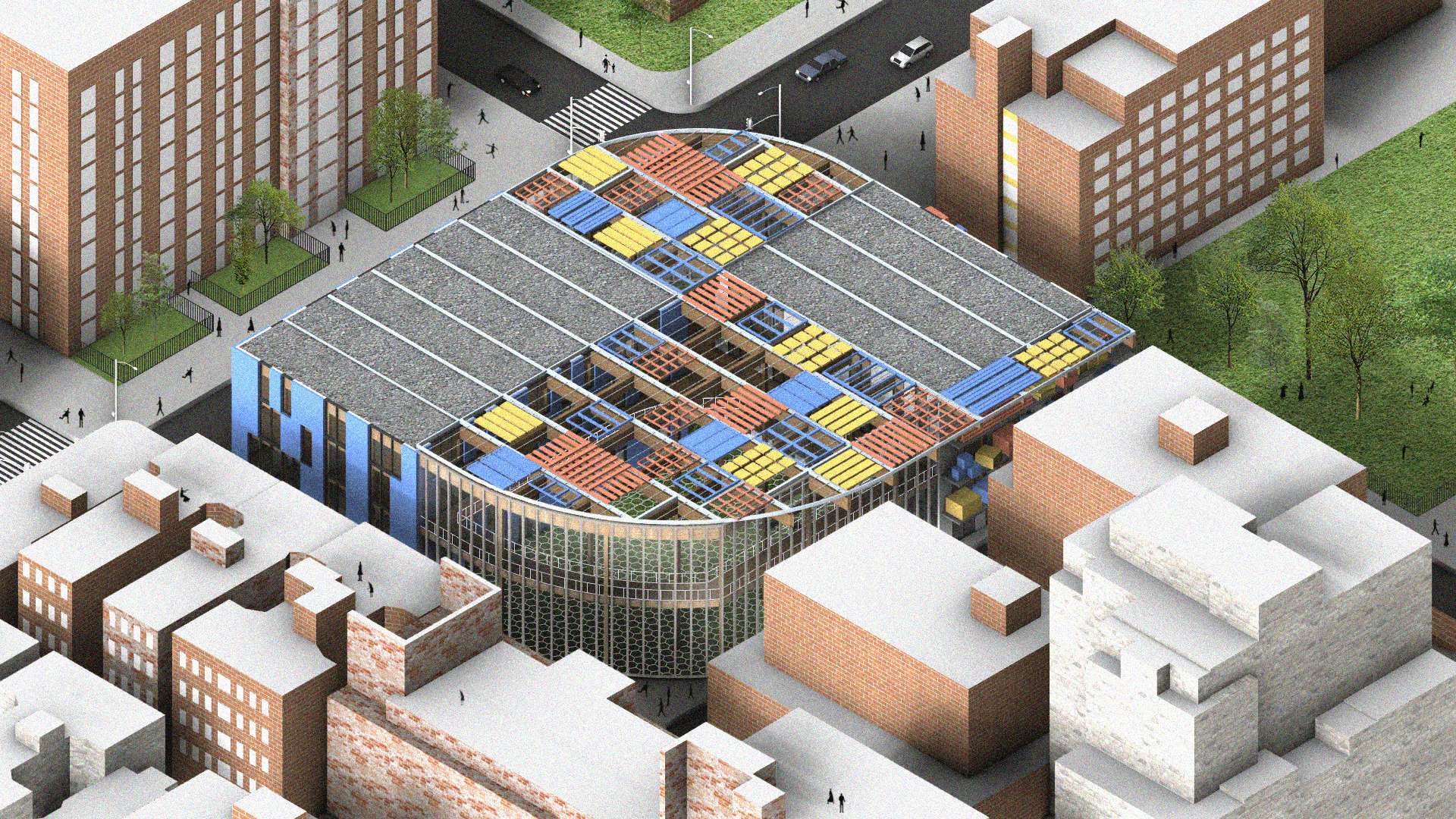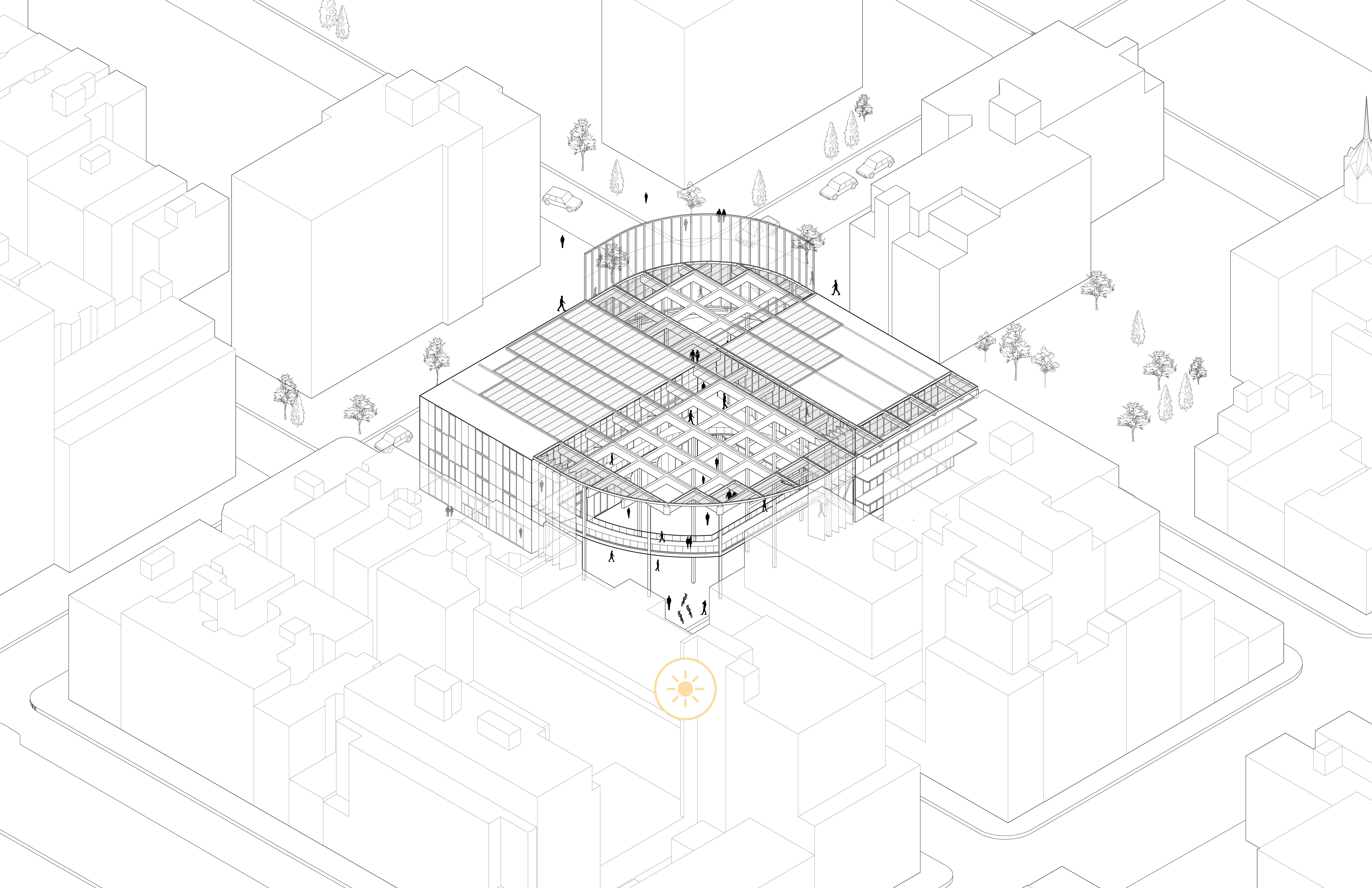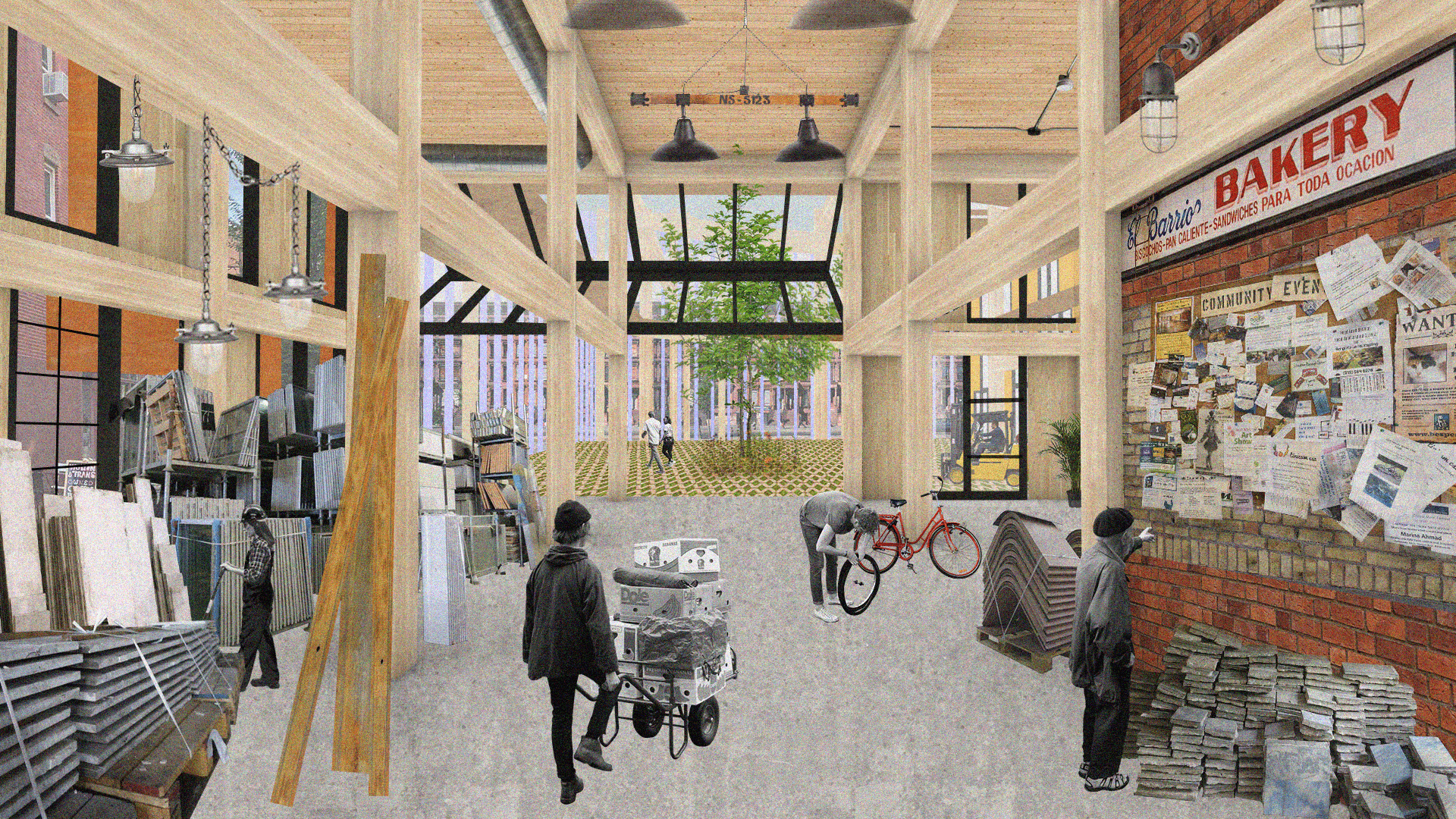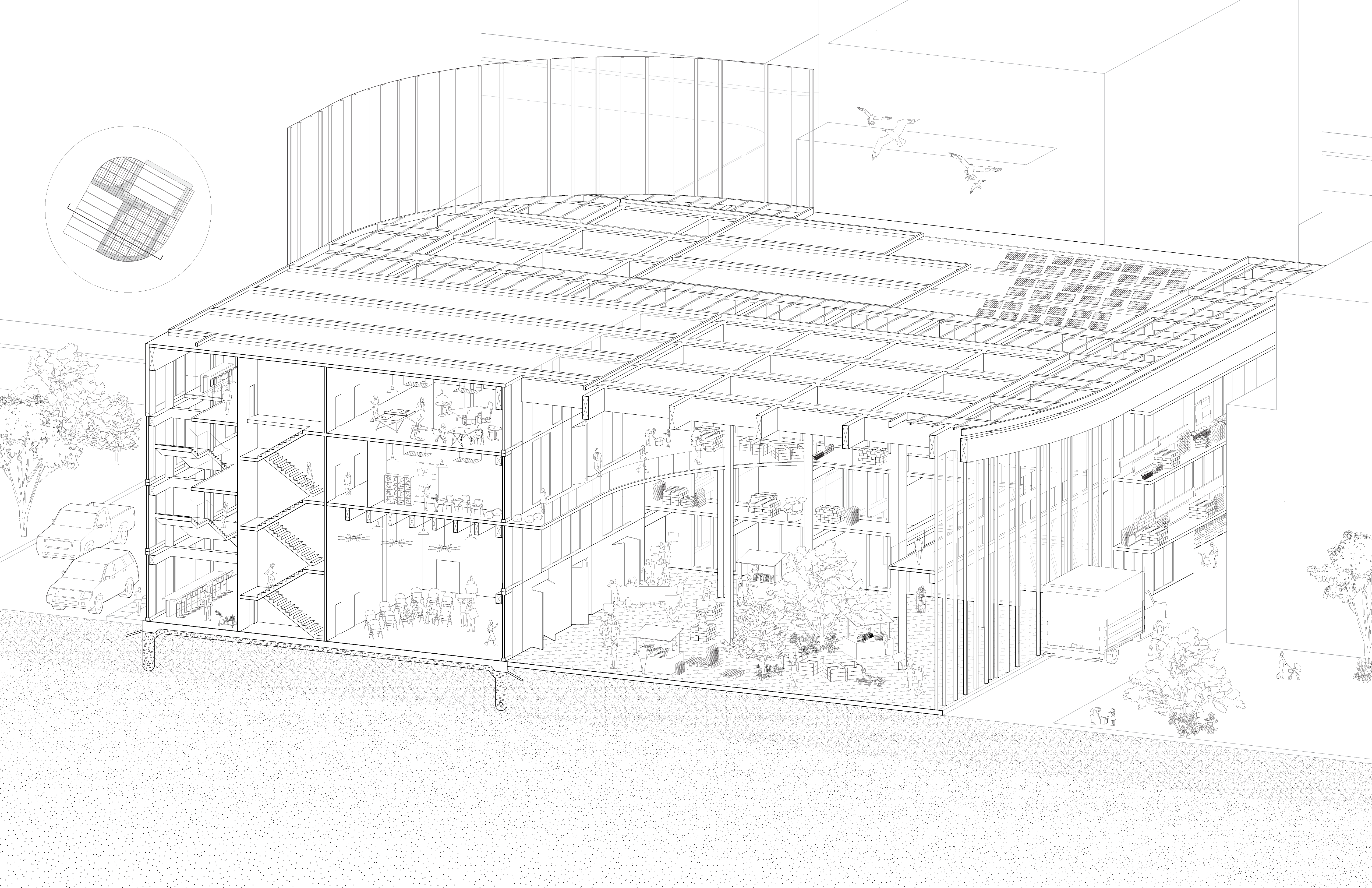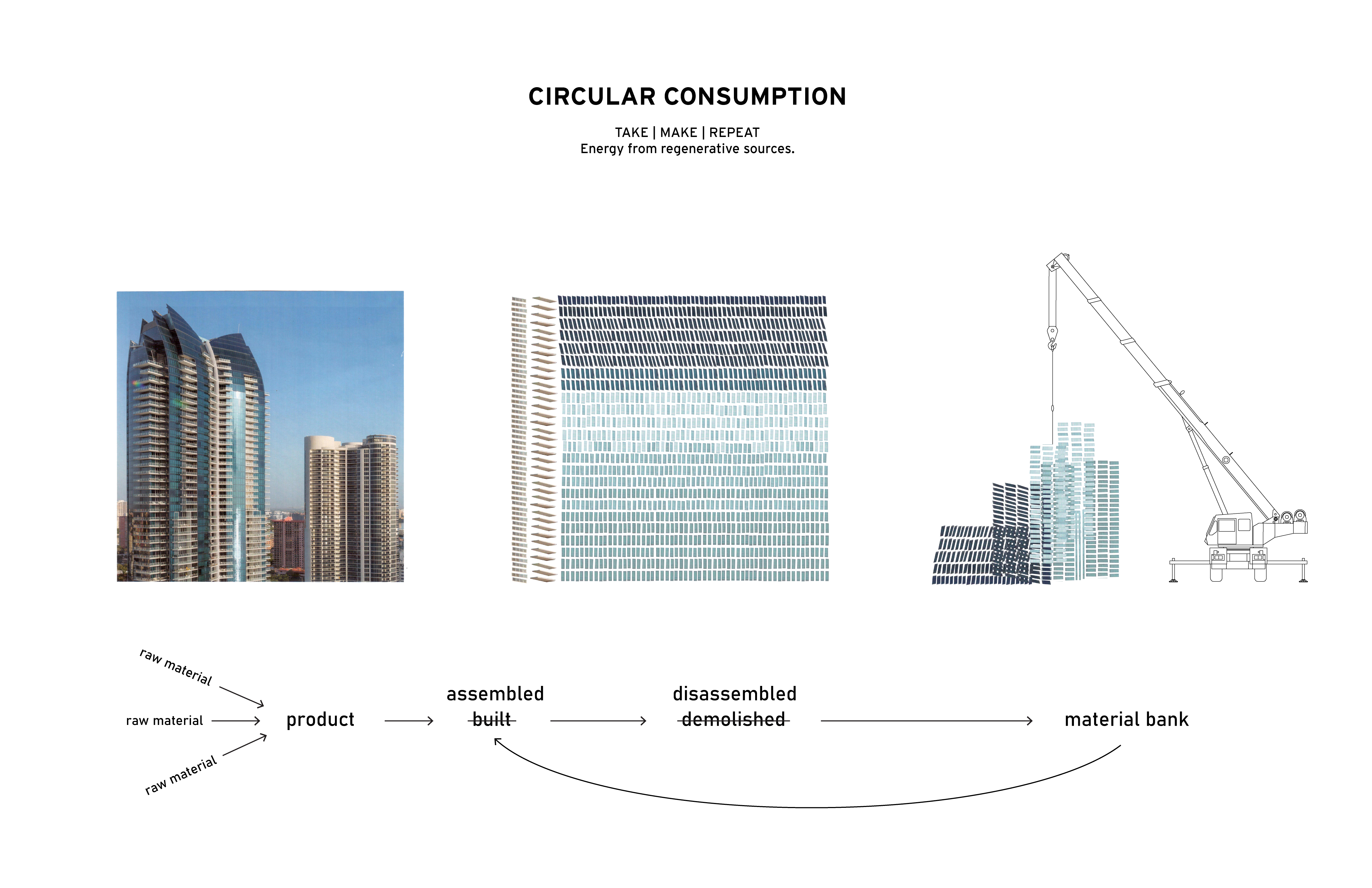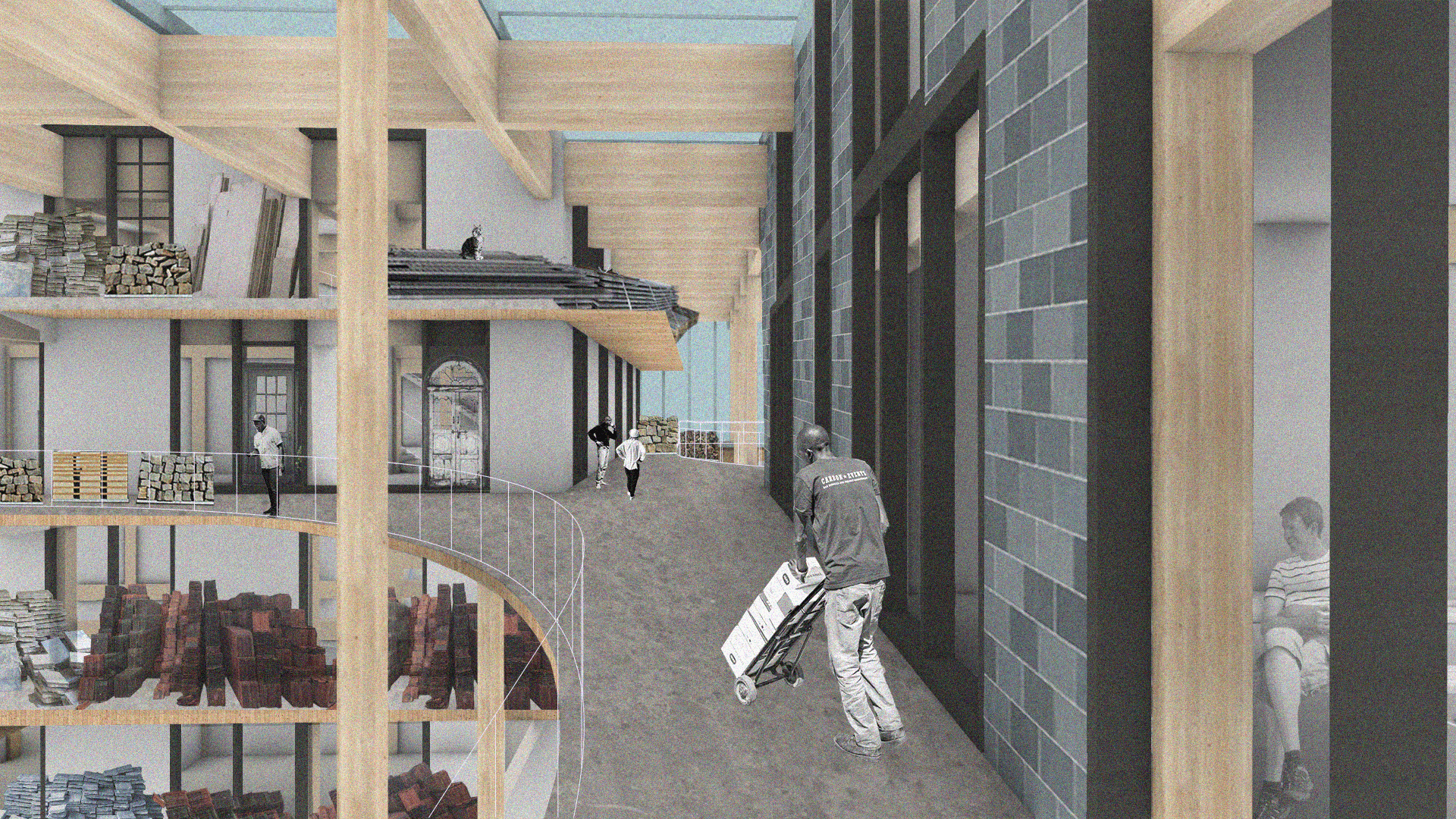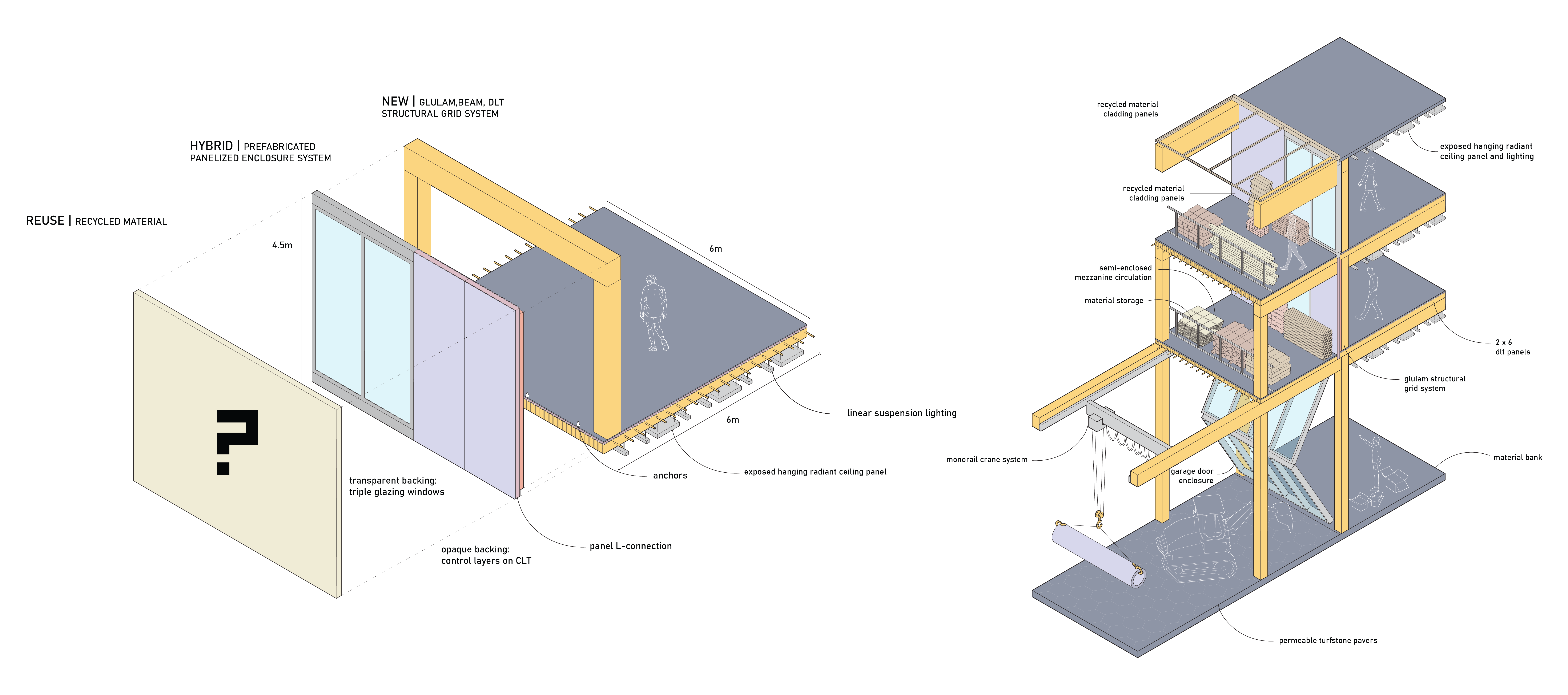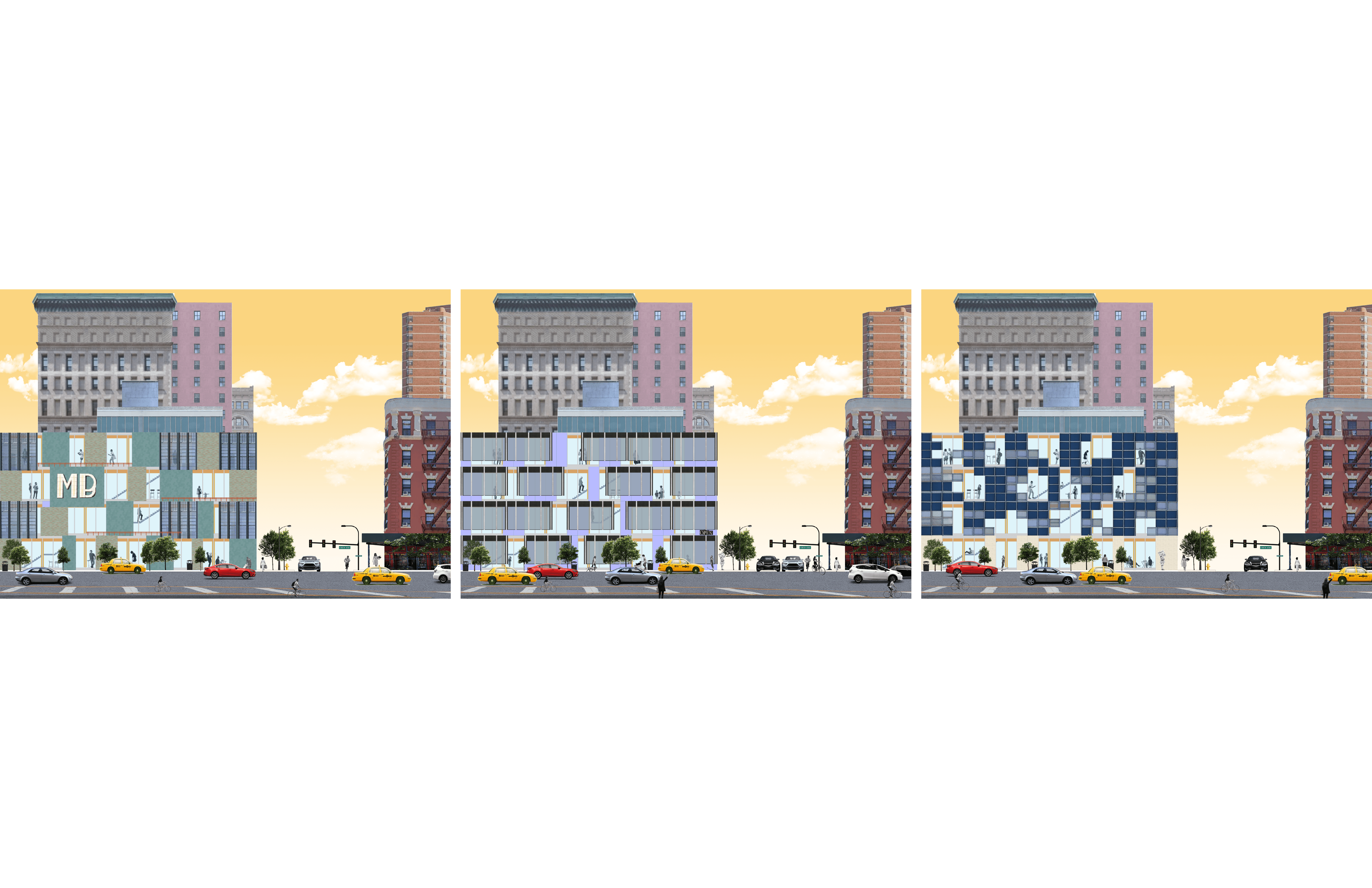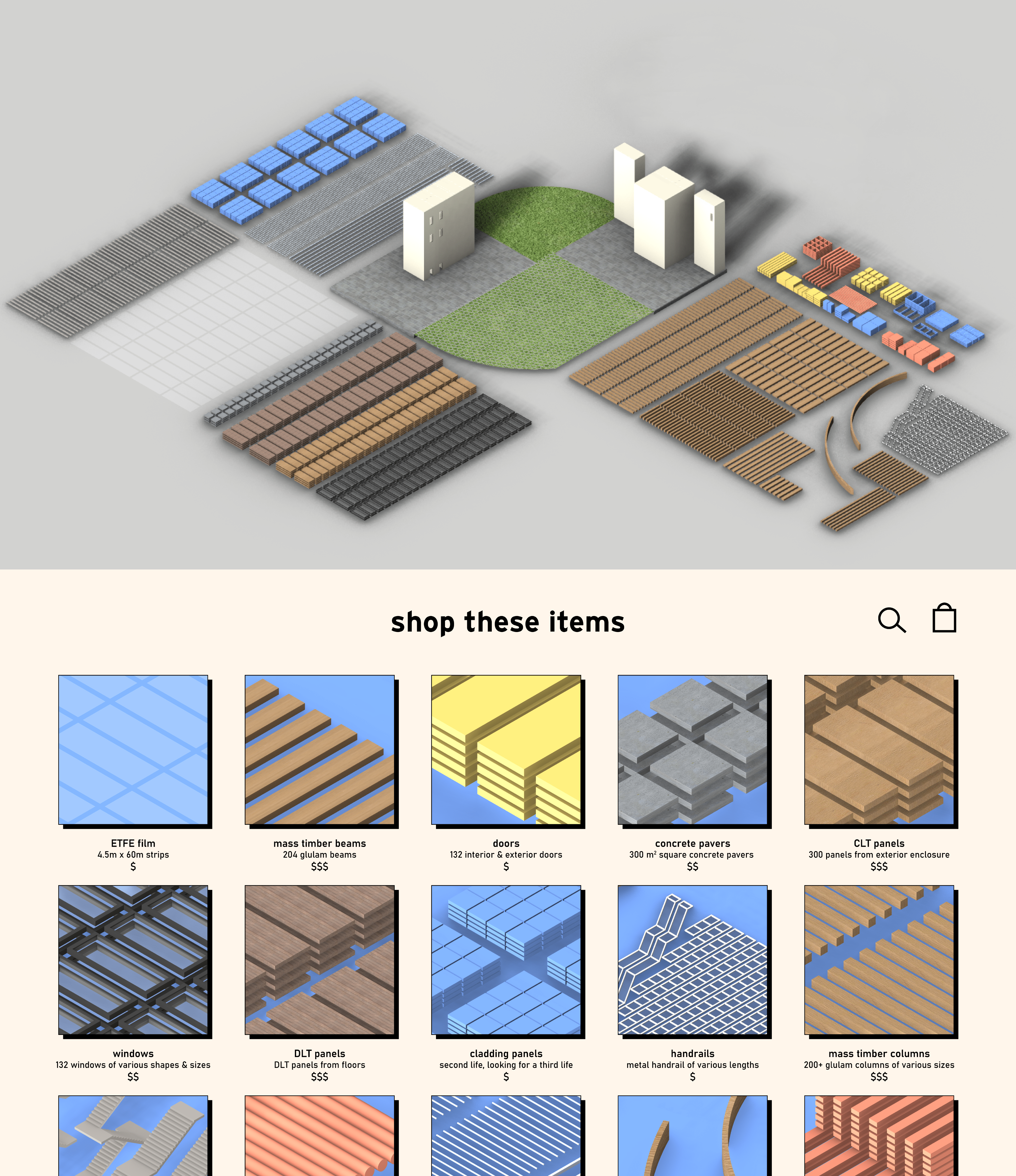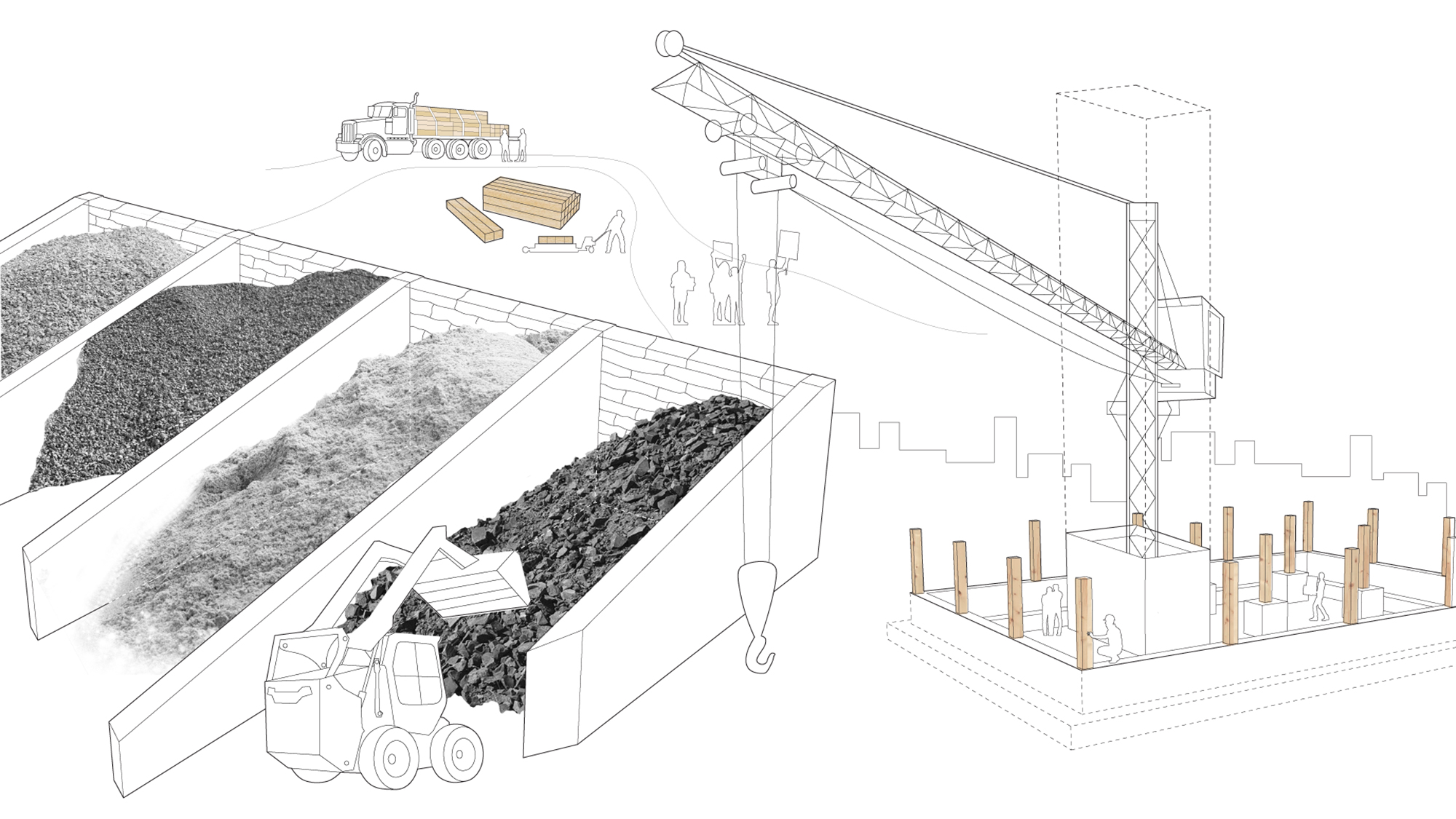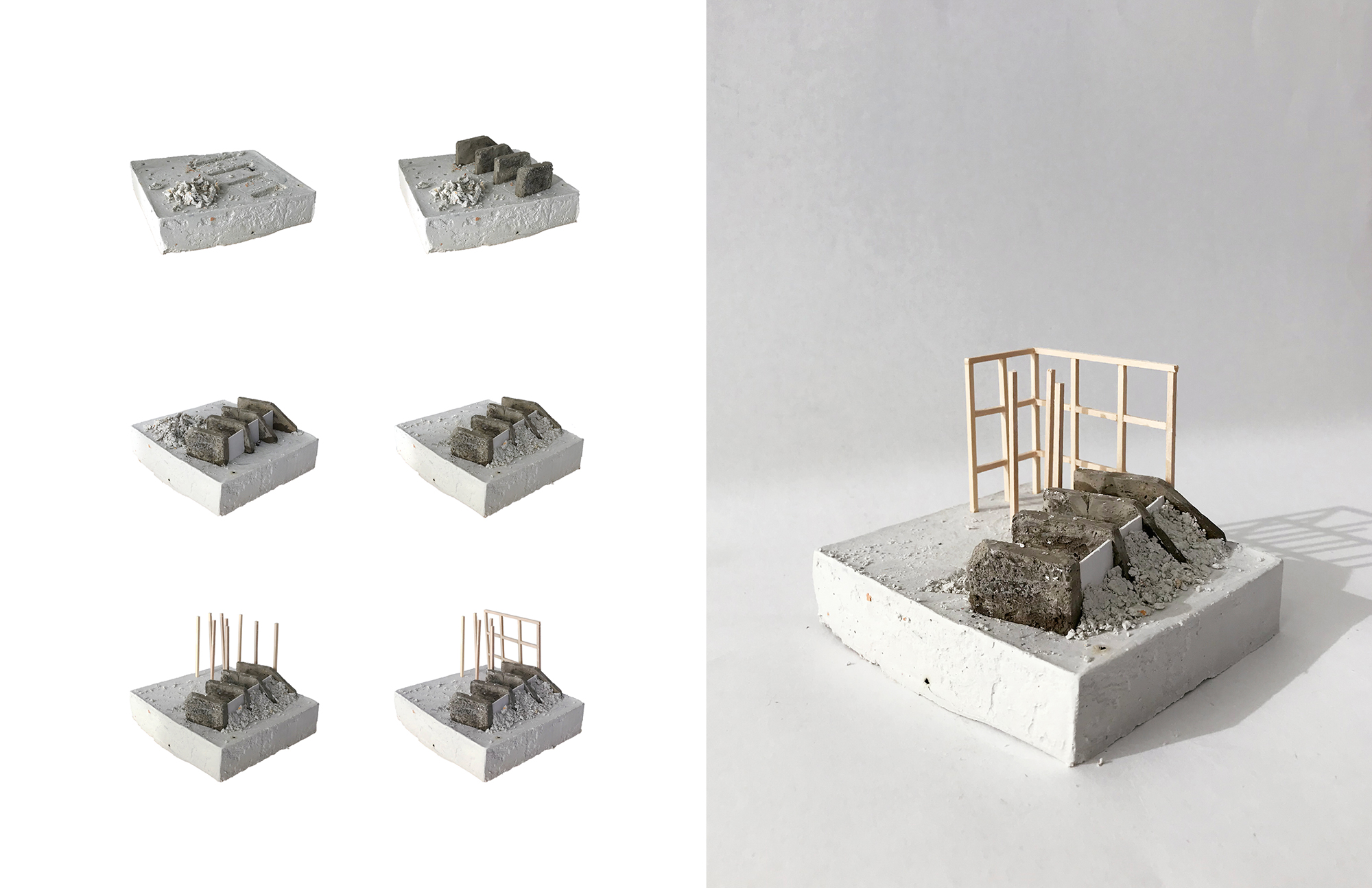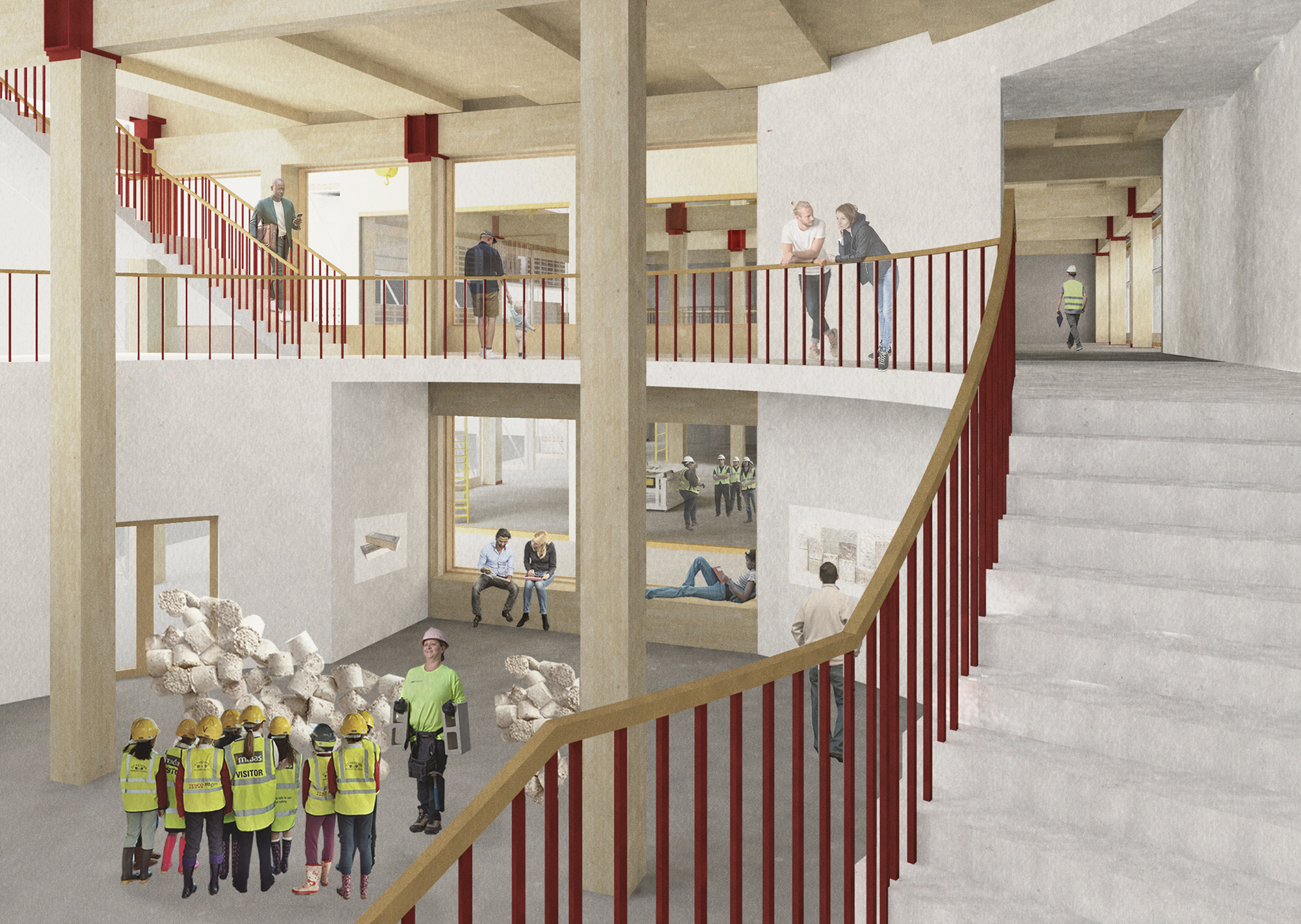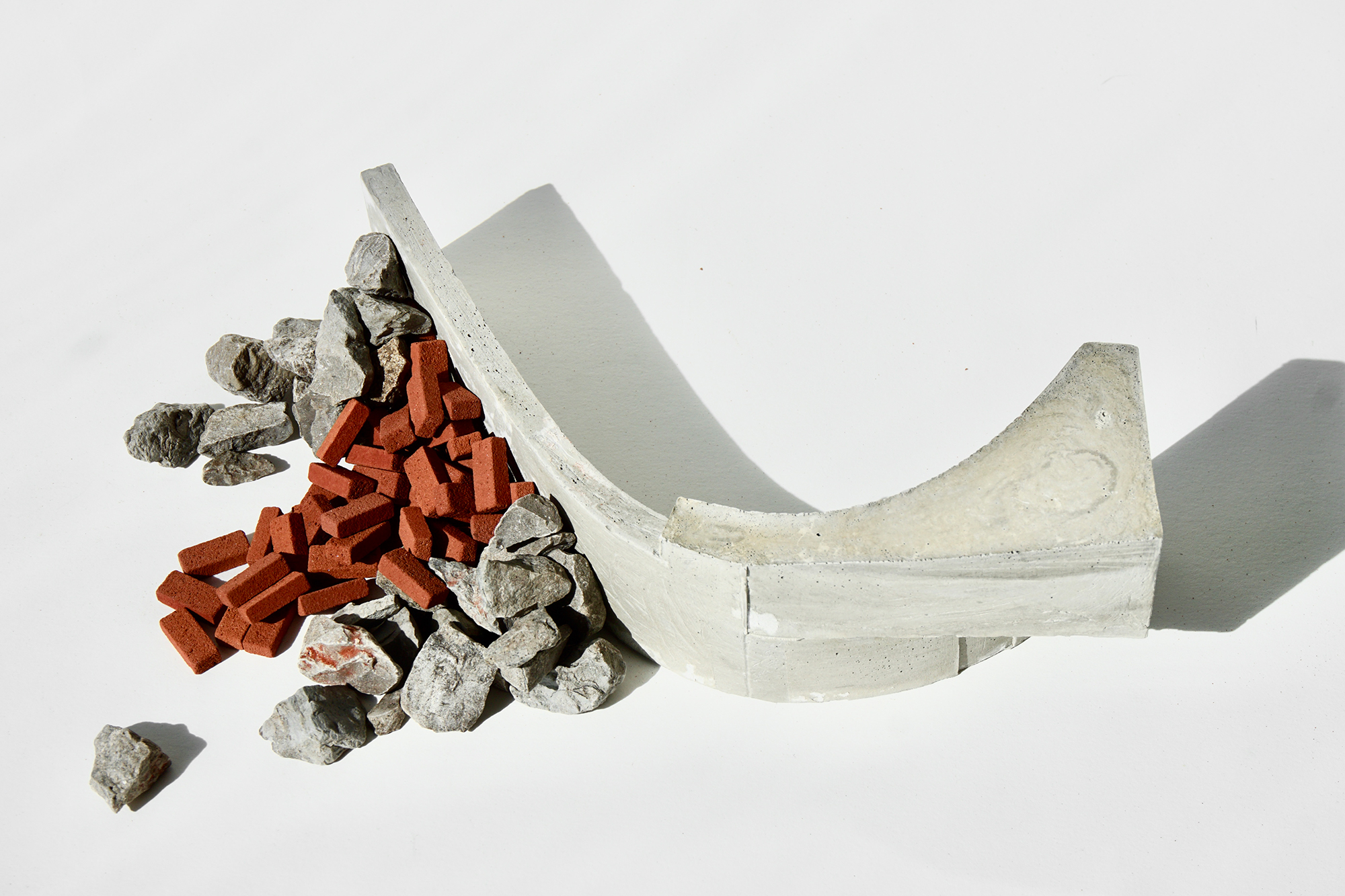ARC2014: Design Studio 4
Design Studio 4 is the Daniels Faculty's comprehensive design studio, where Master of Architecture students create detailed whole-building designs. This semester, students were tasked with designing a “Net Zero” Centre for Activism, for a site in East Harlem.
Andrew Lee and Jiayao He
Andrew and Jiayao write: "Air rights monopoly, FAR, building height, pencil typology, land value, housing price, population, and everything increasing... How do we design architecture in a gentrifying urban environment and in the current environmental crisis? 'On 49%' envisions a new tower typology which incorporates a 'bottom-up' tectonic, material sizing, and labor approach. While short-term and immediate social issues can be expressed through protest and voice, the long-term underlying gentrification issues and displacement of local residents need to be addressed from the typological perspective. To dismantle the current monopoly of space ownership by private enterprise, the architecture aims to redistribute the spatial autonomy back to the people through the method of design for deconstruction. This incremental process not only addresses the urgency of sustainable construction but also addresses the social empowerment of the tenants through an adaptable and versatile 3m grid, providing a framework that transitions into social housing in the long-term scenario."
(Instructor: Anne-Marie Armstrong)
Erica Ulrich and Tanner Field
Erica and Tanner write: "The site is located in Harlem, on an island between the Hudson and East River, on the traditional land of the Lenape people. Pre-development, this land featured grassy estuaries and fertile grounds for hunting and fishing. Taking cues from that same estuarine environment, in both form and function, our project celebrates water in several ways, but primarily through an on-site, gravity fed water recycling and filtration system that acts as a collective water infrastructure for this Centre for Activism and its surrounding community."
(Instructor: Aleris Rodgers)
Kate Van Bakel and Ashlin Lithgow
Kate and Ashlin write: "The Civic Porch caters to those who are looking to invest in their futures, and provides people with opportunities to pursue their passions at any age. Hands-on work often requires facility space and supplies, which can be costly to pursue. Therefore, this building will aid in closing the opportunity gaps in Harlem. Community members can gather a basis of information and skills, create goods, and later showcase or sell their work within the building itself. The technical in-class learning and the visual and performance hands-on programming that is offered builds up opportunities for all members of the Harlem community to thrive in their education, career, and overall future."
"Having a relatively simple grid structure contrasts the complexity and chaos of the users that fill the voids of each space and turns any given space into one that they desire. Whether it be an office space for young entrepreneurs, a gallery for future artists, a classroom for young children, a market for local produce, a pop-up shop, or a stage for community members to share their talents, the Civic Porch welcomes all."
(Instructor: Maria Denegri)
Lucy Yang and Jeff Jang
Lucy and Jeff write: "This proposal provides a platform for social and environmental activism. It announces the urgency of social and environmental reform through relinquishing ownership of the ground plane, offering an open courtyard for the community in East Harlem."
"The courtyard is a public and flexible space where social movements and voices are amplified, but also hidden processes of building construction and demolition waste are brought to the foreground. The proposed building not only serves as a storage area for salvaged building elements, but it is also comprised of reclaimed elements itself. Reclaimed windows and bricks from the local contexts become critical components that give the project its architectural identity and reduce embodied energy."
"The concept of nested thermal buffer zones, inspired by the flimsy facade of reclaimed windows, also bolsters the building performance. The temperature gradient blurs the distinction between outside and inside, creating a composition of buildings within buildings that is composed of found objects."
(Instructor: Carol Moukheiber)
Mavis Huang and Jue Wang
Mavis and Jue write: “To revitalize the spirit of East Harlem, the Mosaic intends to celebrate the vibrant multiculturalism of the neighbourhood through providing flexible indoor and outdoor spaces for hosting festivals, neighbourhood events, or performing arts. As an extension of the Harlem Art Park, the boundary between enclosed and open space is blurred; ecological features are introduced to the indoor space. It is a project that links communities together through all kinds of interests and illustrates the colour and vibrancy of the community.”
(Instructor: Francesco Martire)
Rashmi Sirkar and Robert Kenneth Raynor
Rashmi and Robert write: "This project stems from a question: can exterior insulation be programmed? Harlem Hill uses the needs of the community as a means of solving a challenge faced by most buildings at this latitude: regulating temperature in a fluctuating climate. Residents of Harlem currently have too little easy access to fresh food, and the fresh food they can access is often priced out of their reach. Our form of activism is to bring about more equitable access to healthy food, to nourish the residents of this underserved but rather amazing borough. We employ the semi-conditioned nature of a greenhouse as both a producer of healthy food within the community, and as an insulative buffer space to lessen the need for air treatment inside our public gathering centre. We invite you to consider: what would the world be like if every building was wrapped in a food-producing shell?"
(Instructor: Carol Moukheiber)
Zak Jacobi and Evan Webber
Zak and Evan write: "Harlem as a community has a rich heritage tied to celebration. Celebration plays an active role in encouraging social gathering and empowering community members through the sharing of experiences, stories, and talents. This project looks to create spaces of celebration through diverse and dynamic programs that overlap and blend into one another, augmented and emphasized by floods of colour, prompting informal interactions between community members. This is done in consideration of the site's connection with environmental and ecological systems and how this enhances and engages with acts of celebration."
(Instructor: Sam Dufaux)
Aidan Qualizza and Ross Beardsley Wood
Aidan and Ross write: "The Pit is an exploration of carbon-responsible architecture for the private sphere of activism — an architecture materially rooted in place and designed for the covert. The project reconstitutes the subsurface conditions of the East Harlem site into architectural elements through a process of geological mapping, extraction, and processing. The subterranean form is designed in opposition to the vertical dogma of New York City in order to pronounce the project's material narrative, to give back the public realm in the form of an unprogrammed plaza, and to allow the building’s backstage program to operate incognito from the urban fabric above."
(Instructor: Christopher Cornecelli)
Clara Ziada and Natalia Enriquez Goyes
Clara and Natalia write: "Our project exploits the opportunity in embracing 'waste' as a valuable resource that is being discarded. By designing within the principles of a circular consumption model, we treat the building as a new home for materials within a continuous recovery and reutilization process. This narrative lends itself to a focus on embodied energy where the material choices, their lifecycle considerations, and design for (dis)assembly become main strategies. The dynamics between physical durability and functional obsolescence underline the need to accommodate adaptability and flexibility to maximize the life cycle and minimize the ecological footprint of building components. The Bank stands as an intermediary between multiple iterations in a cycle of disassembly and new assembly."
"Through continuous chains of supply and demand, The Bank connects donors to builders, users, and consumers. The centre acts as a physical and social infrastructure mediating between people and materials. It provides a space of education, information sharing, and material distribution. Besides serving as a storage facility, it lends the community a toolkit for constructing change."
(Instructor: Sam Dufaux)
Jackie Hampshire and Ophelia Lau
Jackie and Ophelia write: "The East Harlem Centre for Deconstruction is a proposal for a new form of urban infrastructure that would disrupt the current linear model of construction by recouping materials from demolition in the city and acting as a logistics hub to coordinate and enable the reuse of material at a local scale. The Centre facilitates reuse through storage, distribution, and vocational training in techniques of deconstruction and building for disassembly. In the neighbourhood of Harlem, the building serves as a community resource, accommodating socially driven projects through the provision of space, materials, tools, and skilled tradespersons."
(Instructor: James Macgillivray)


